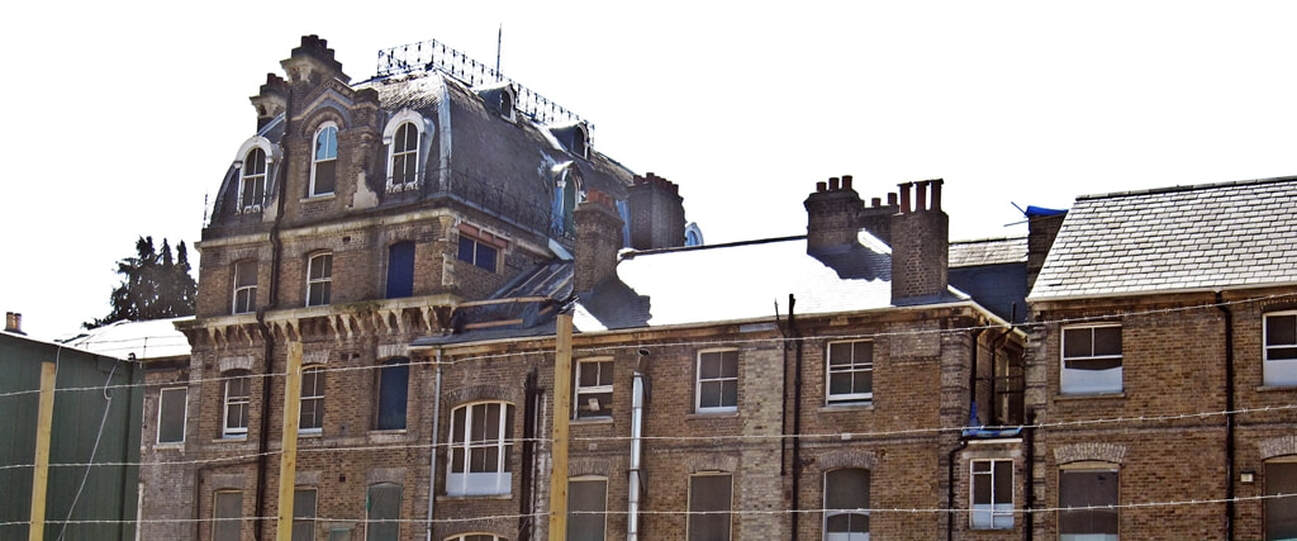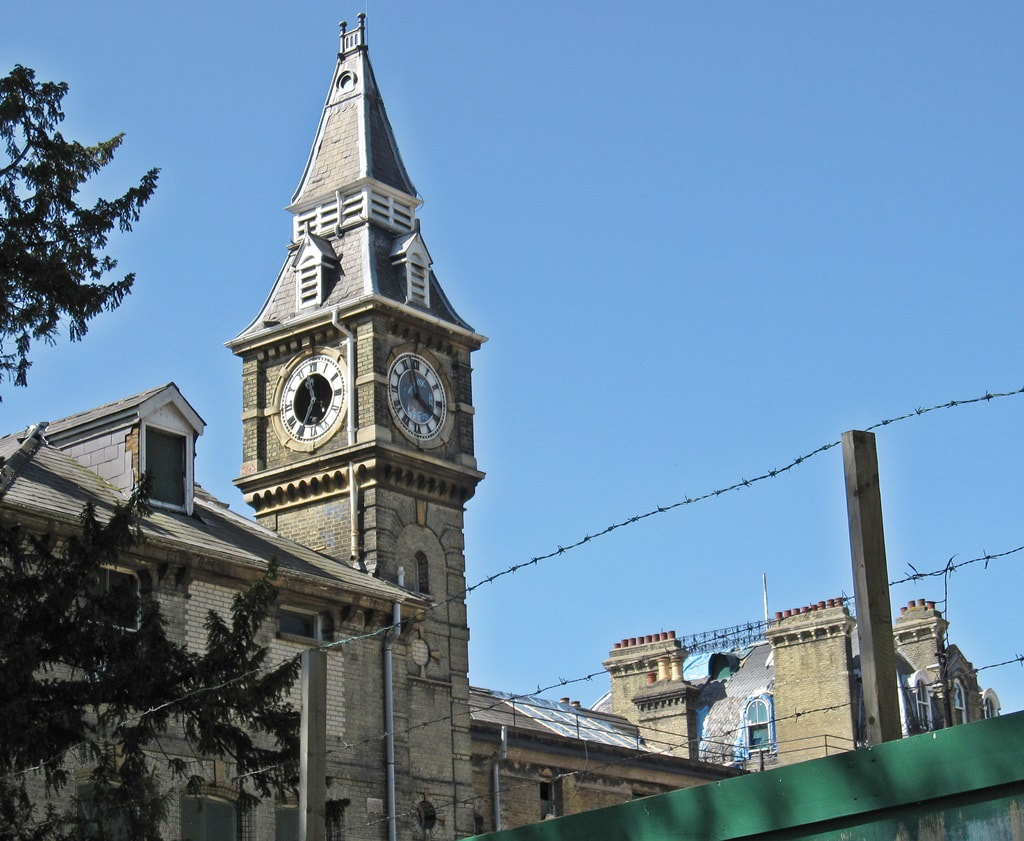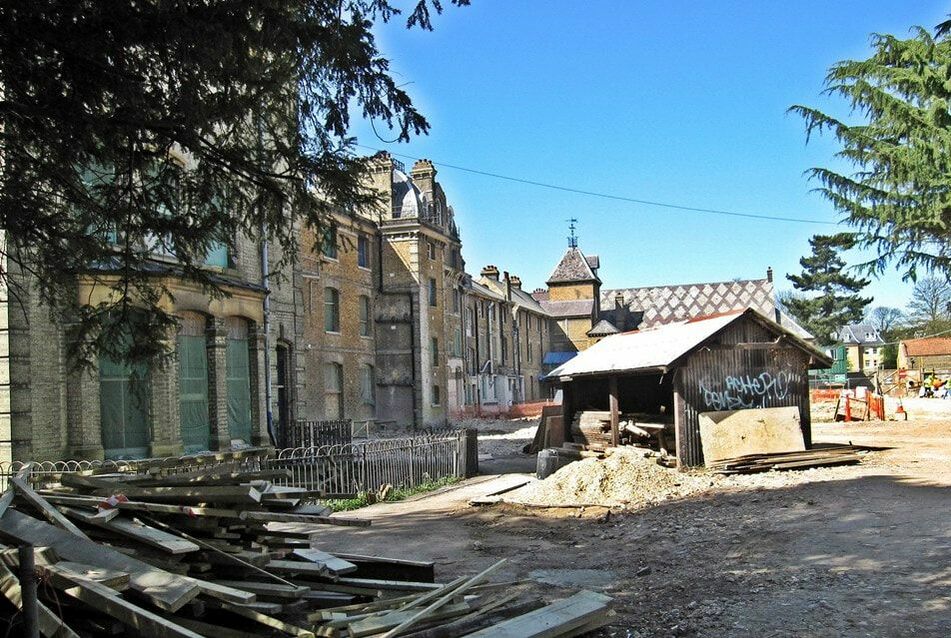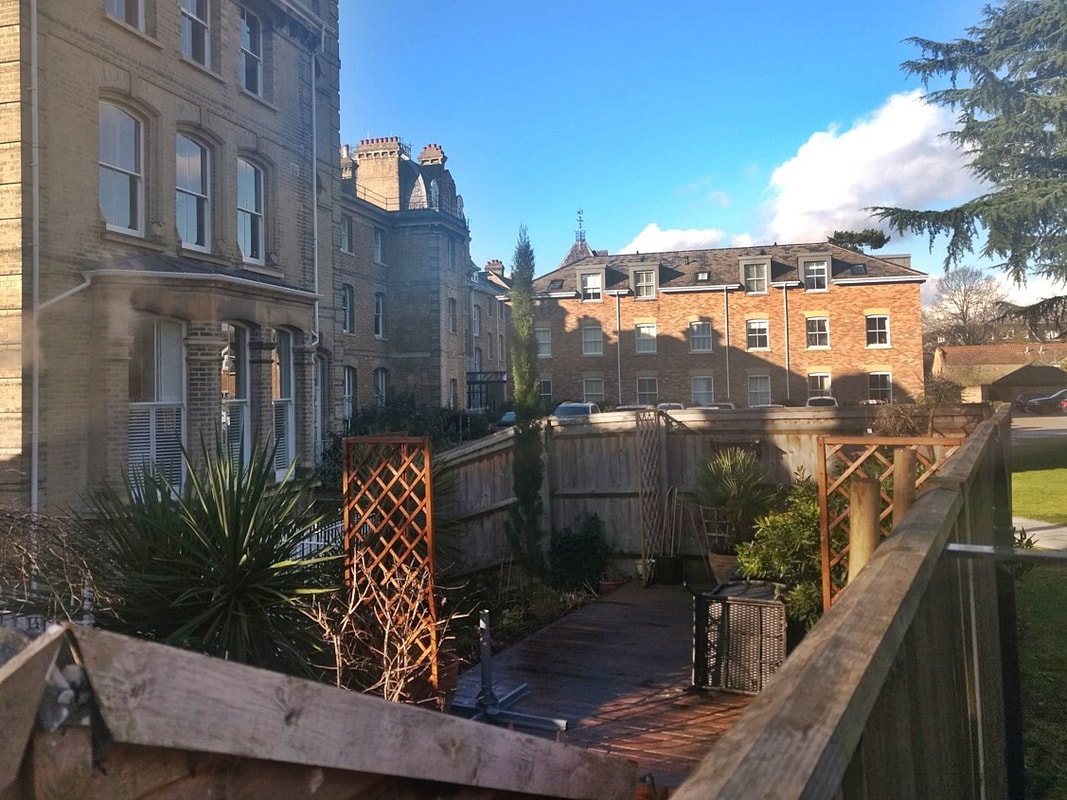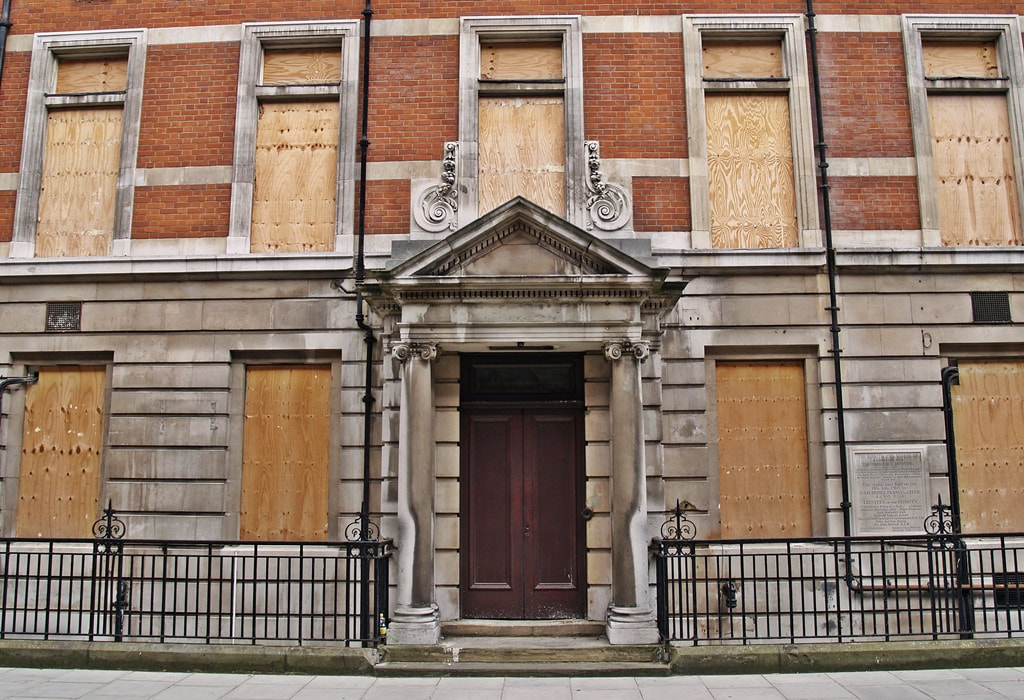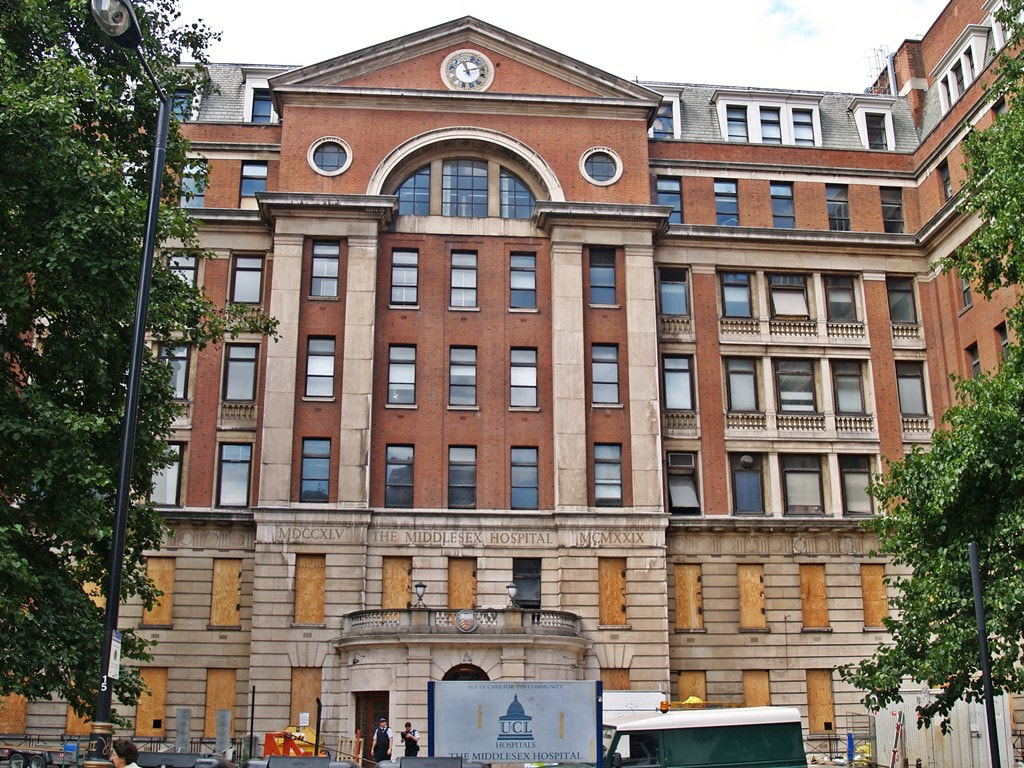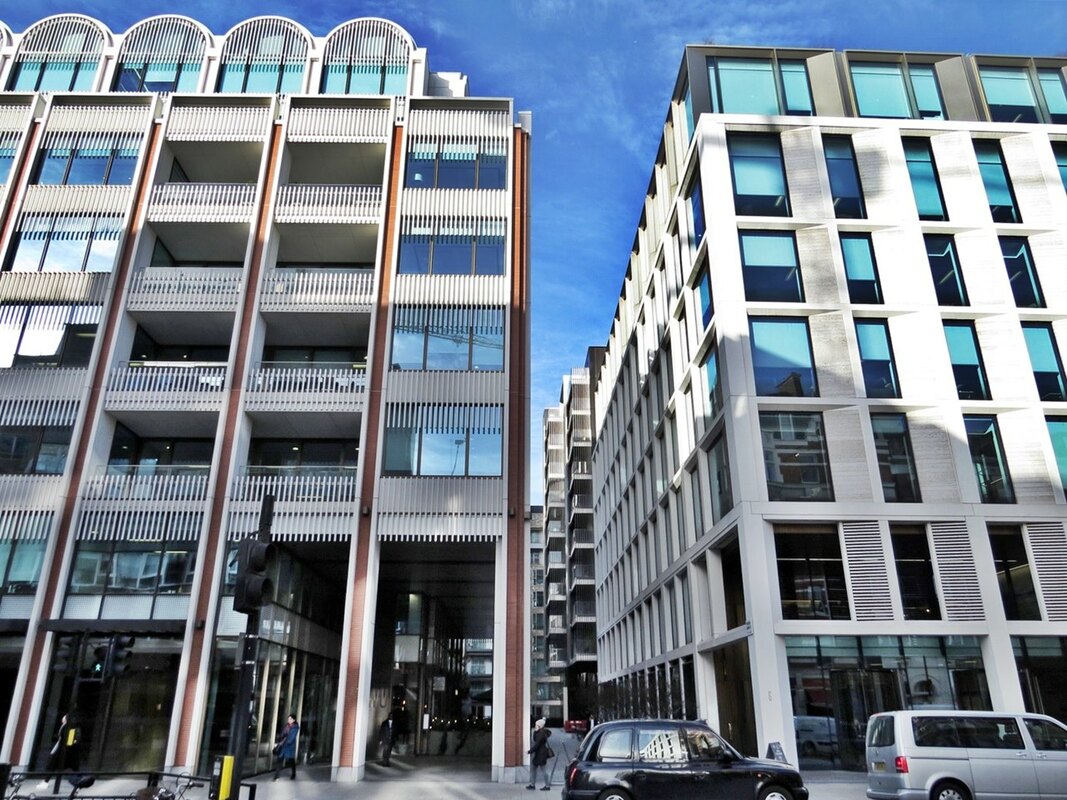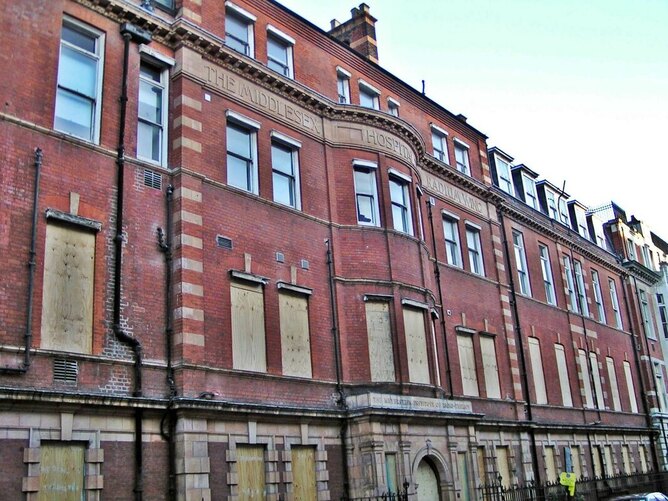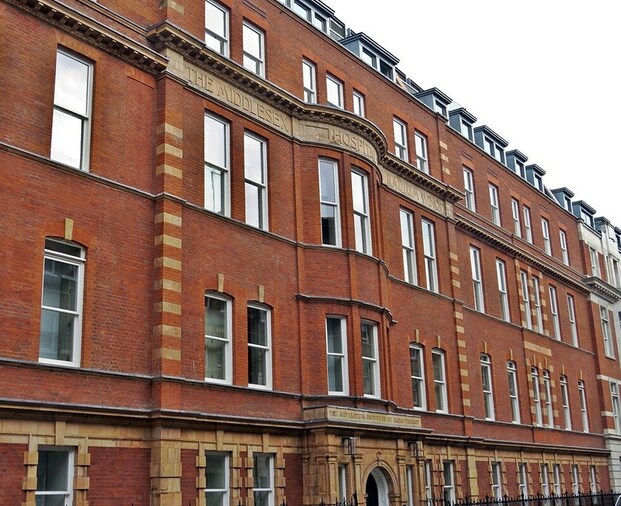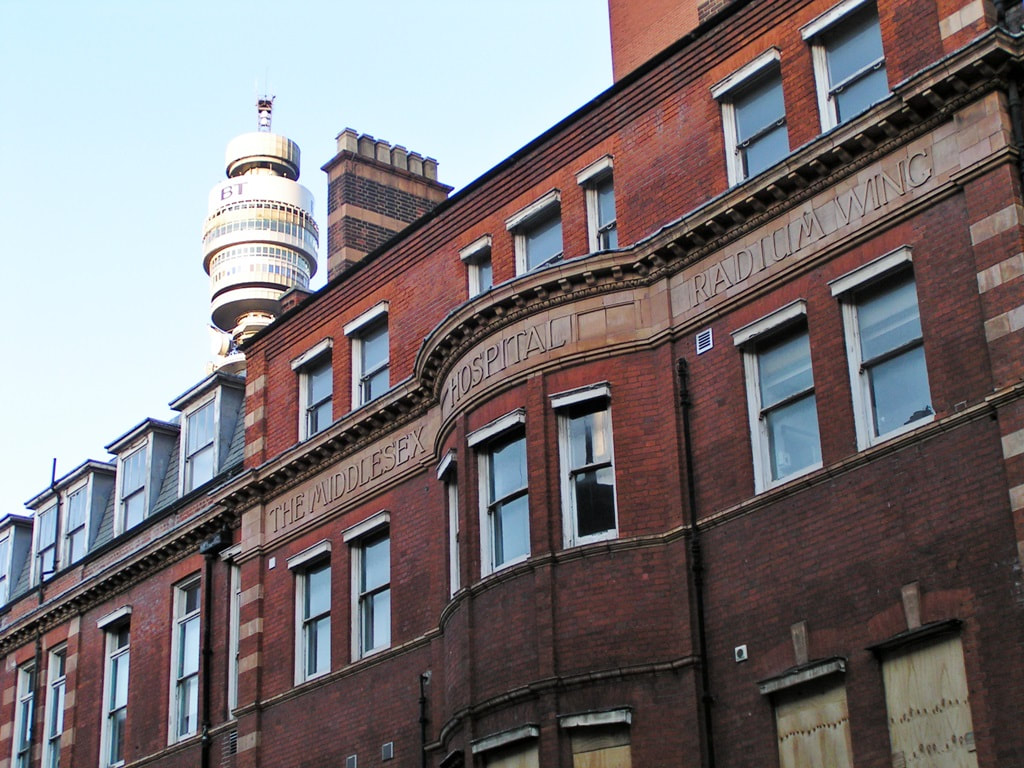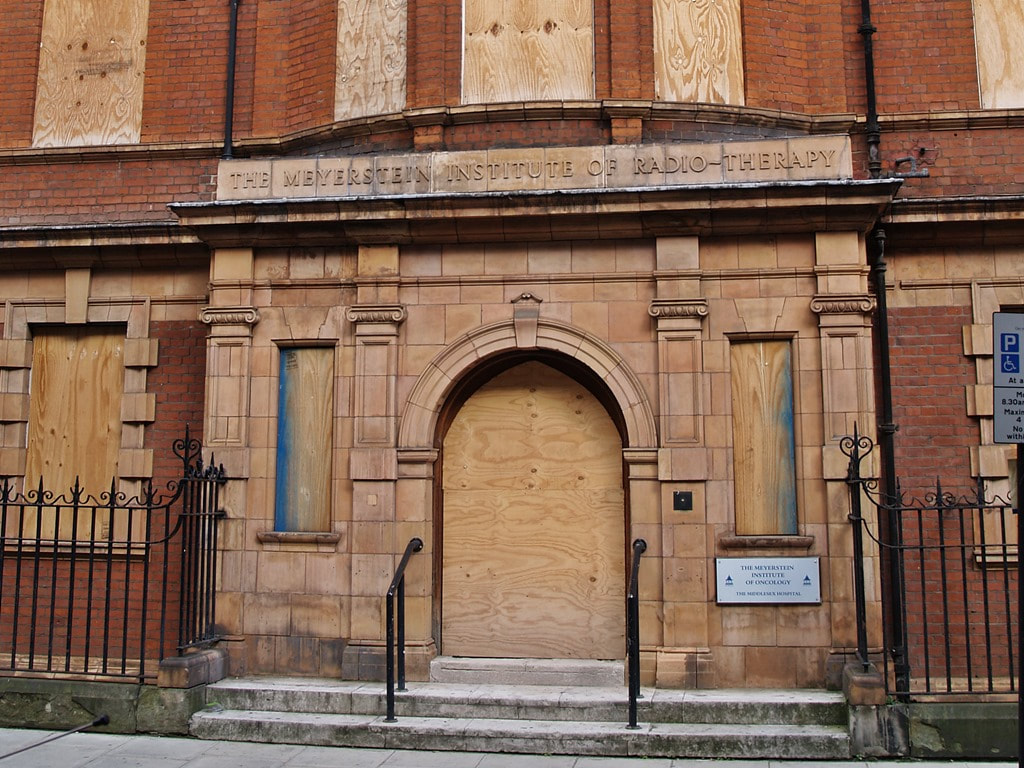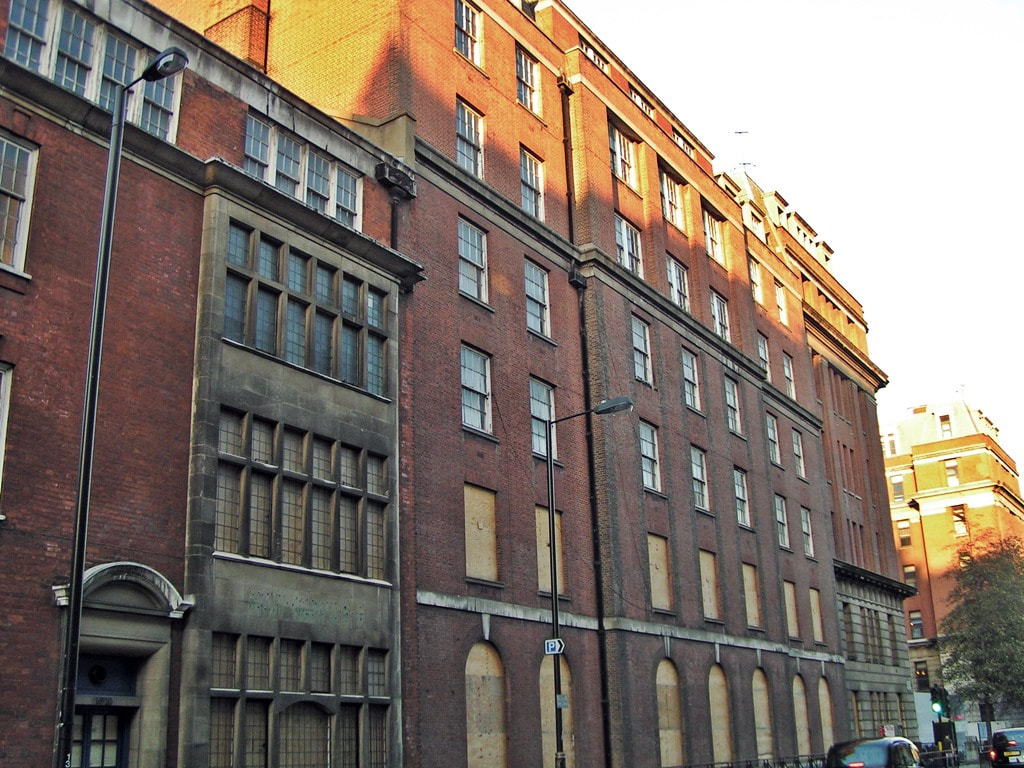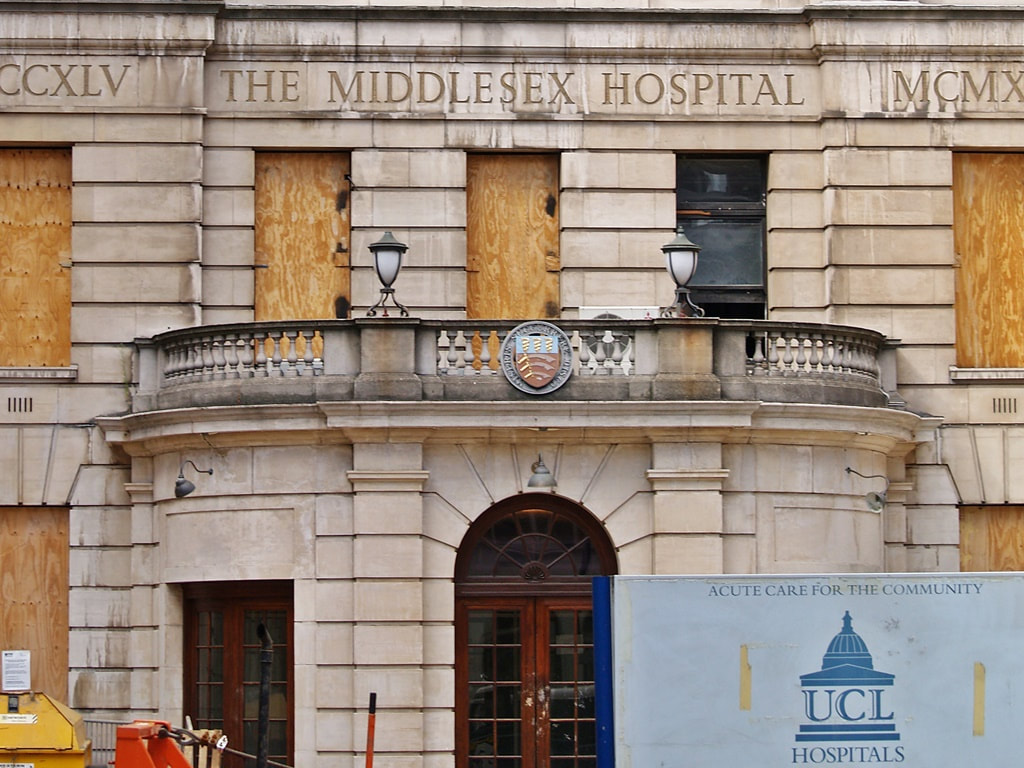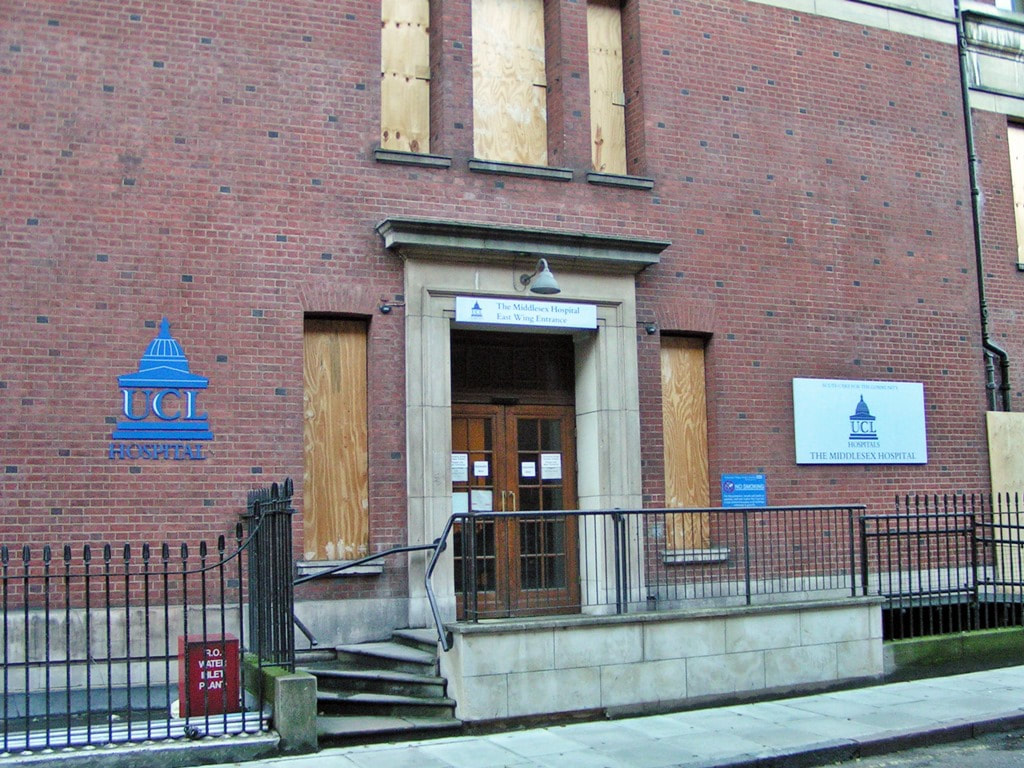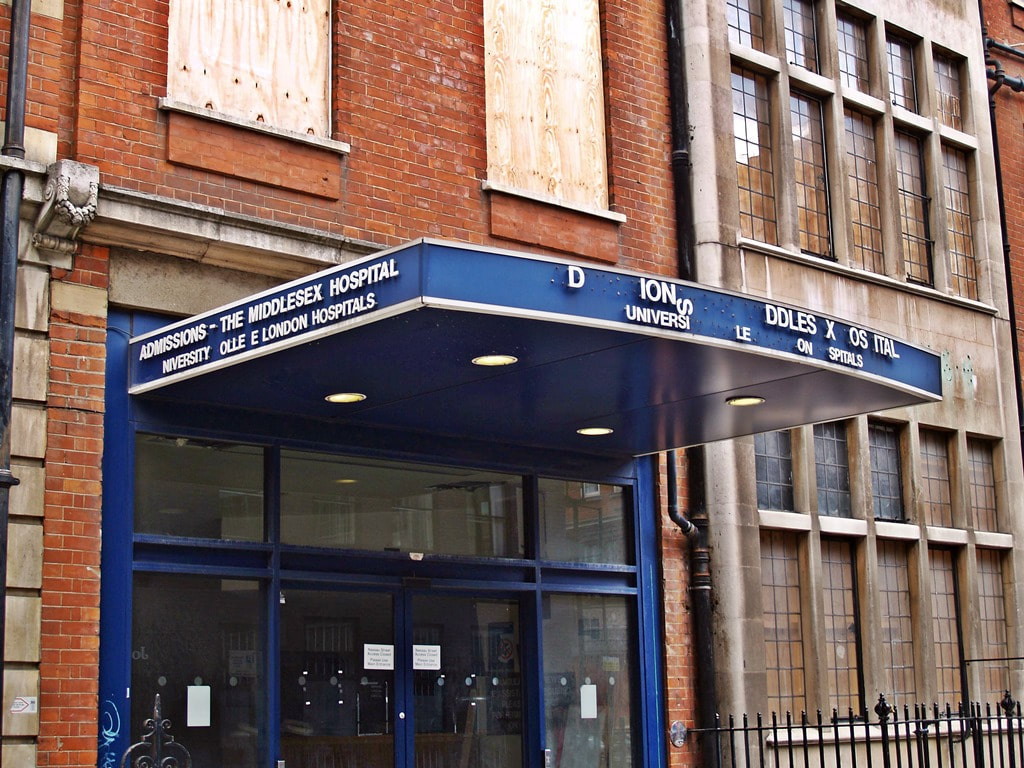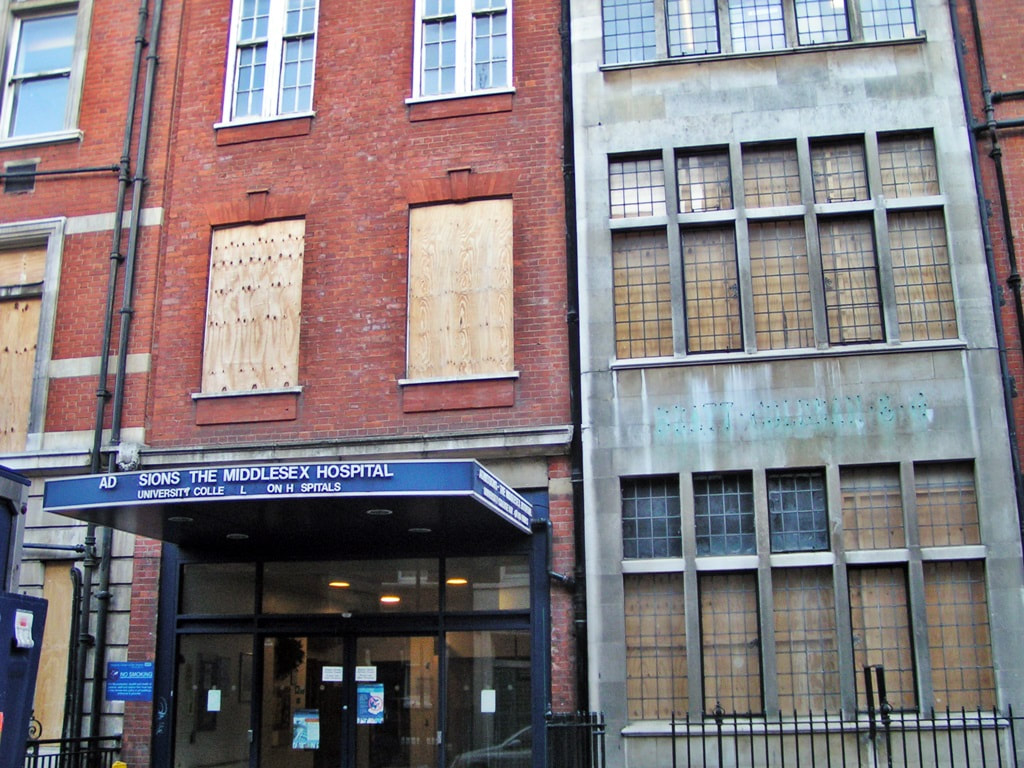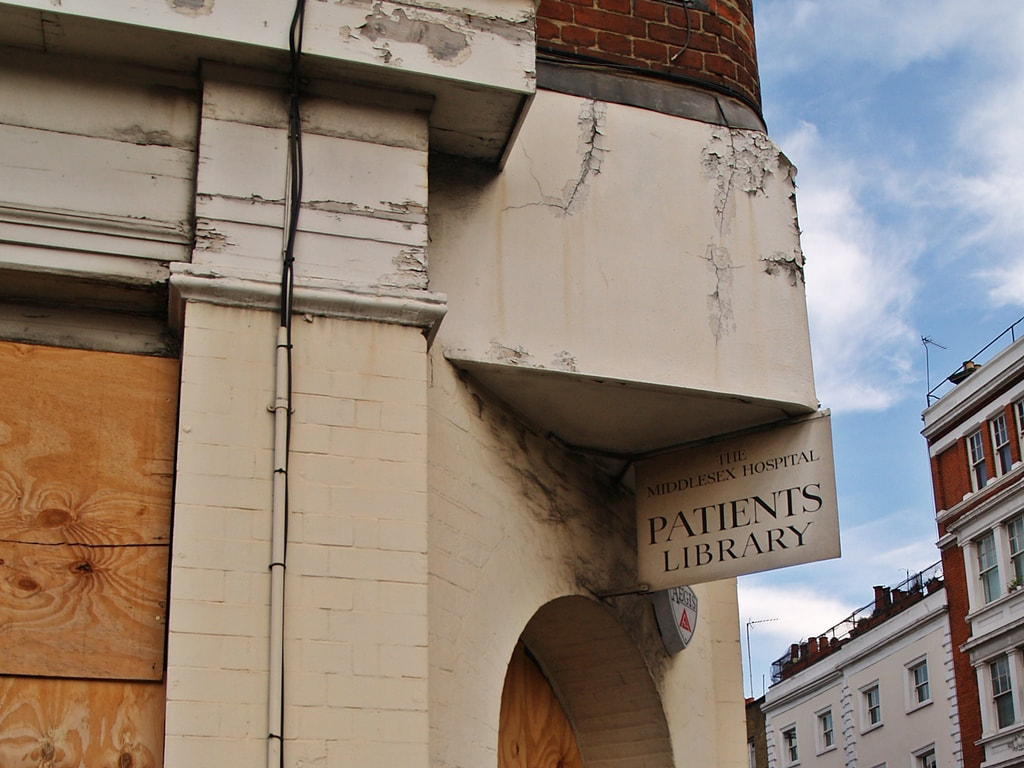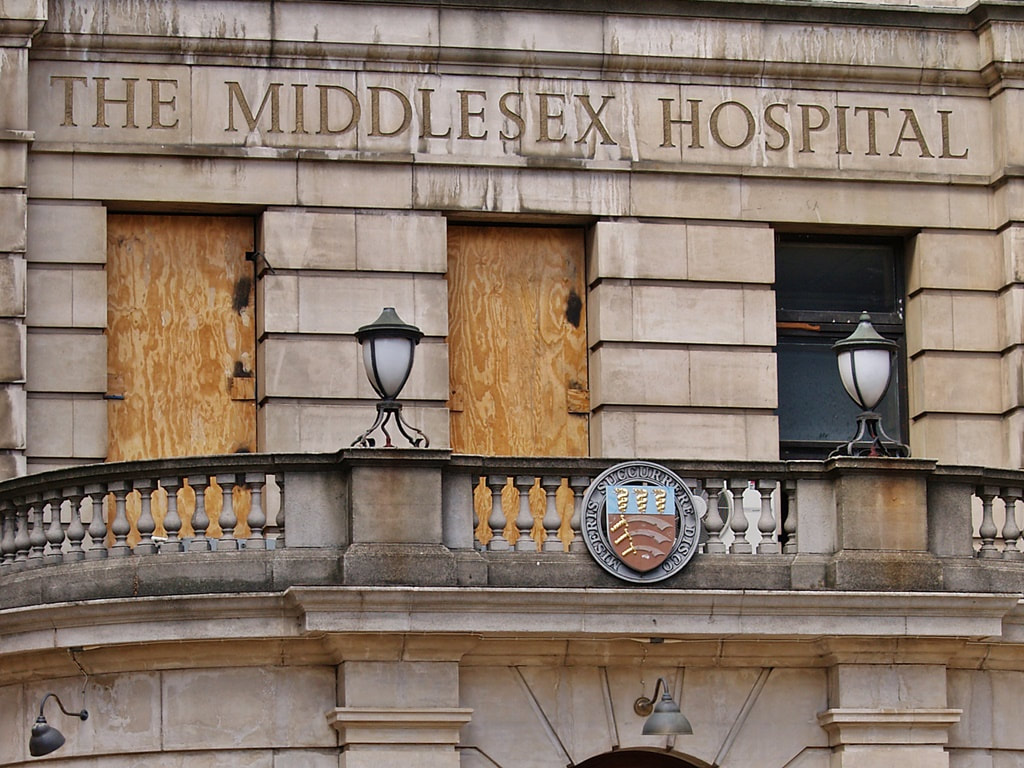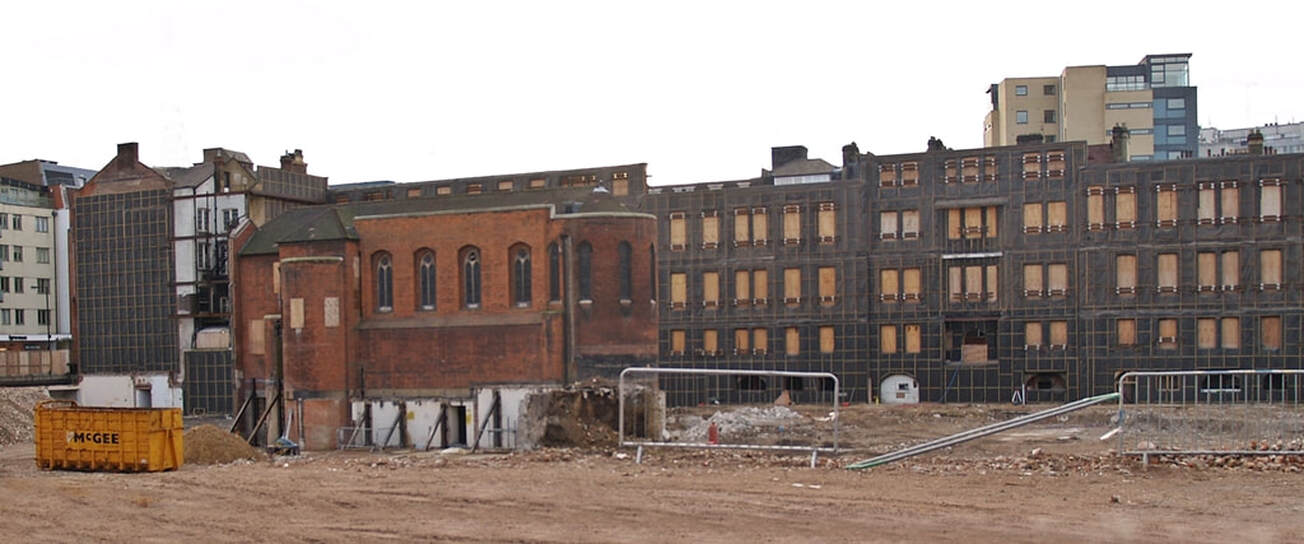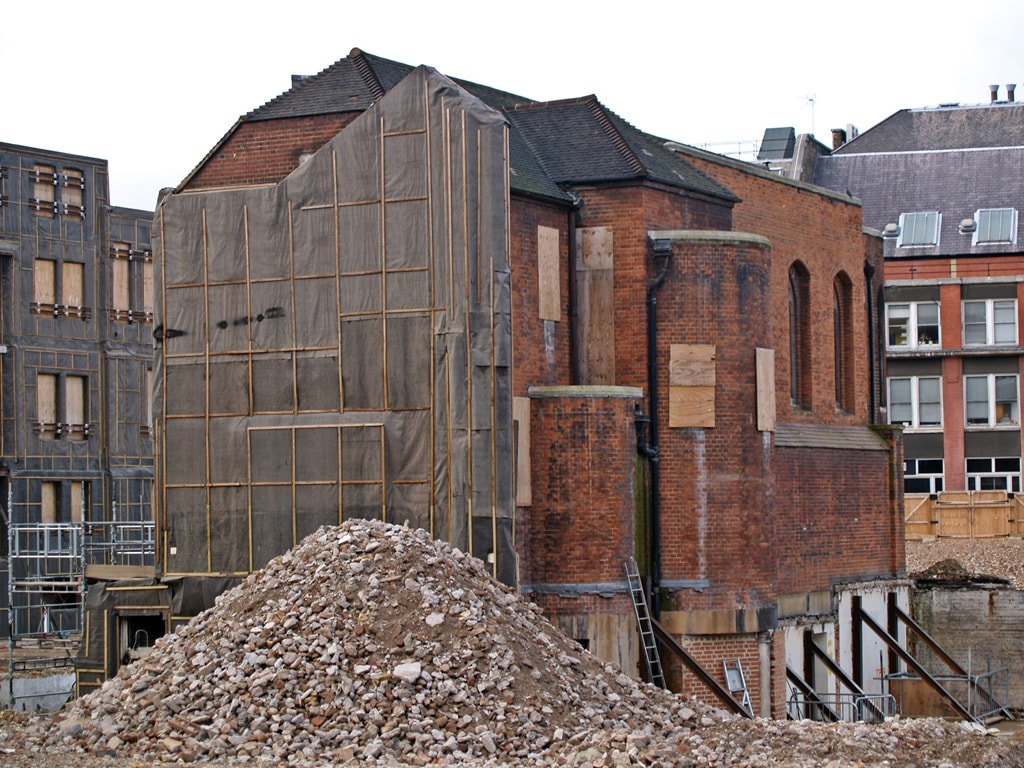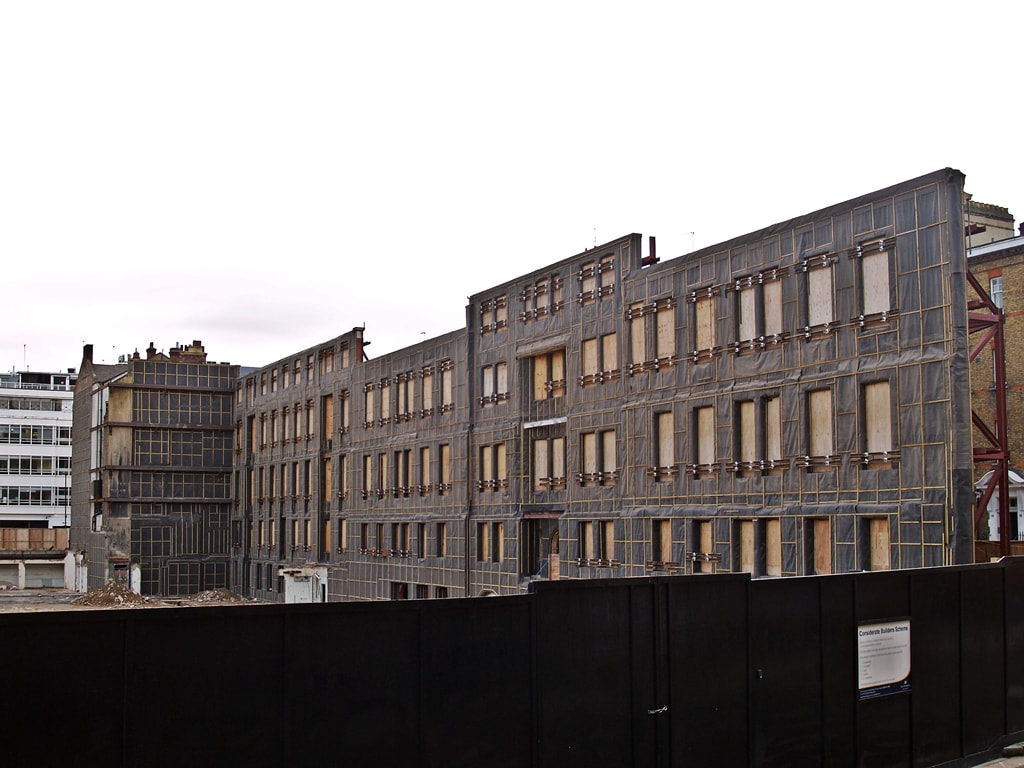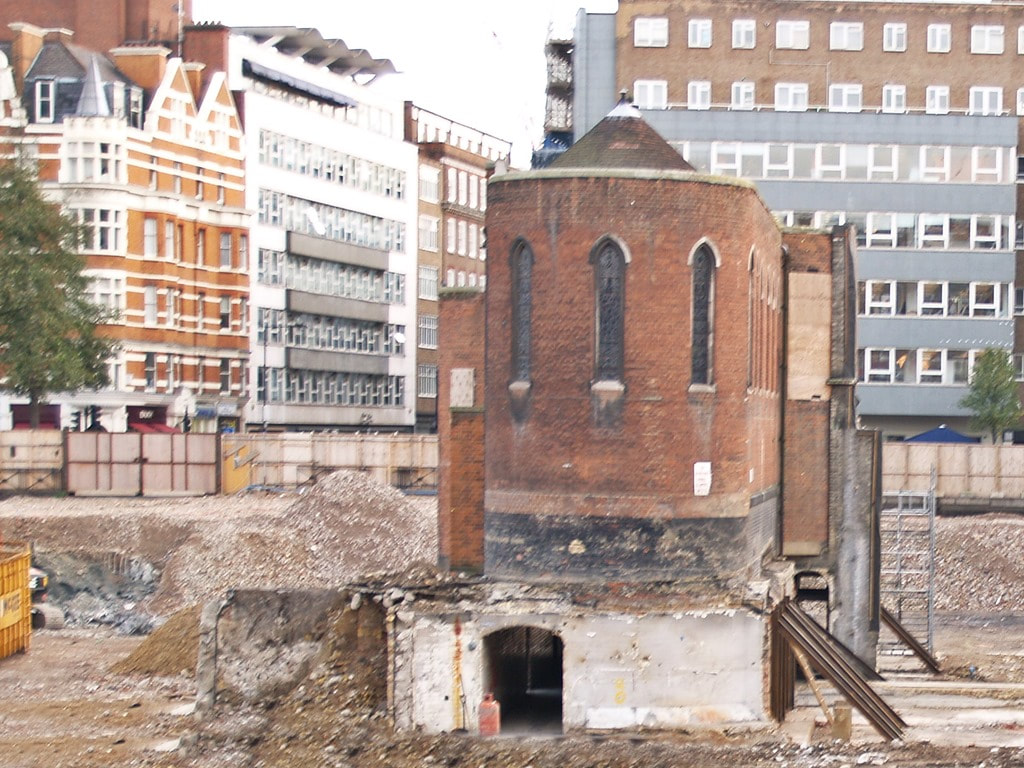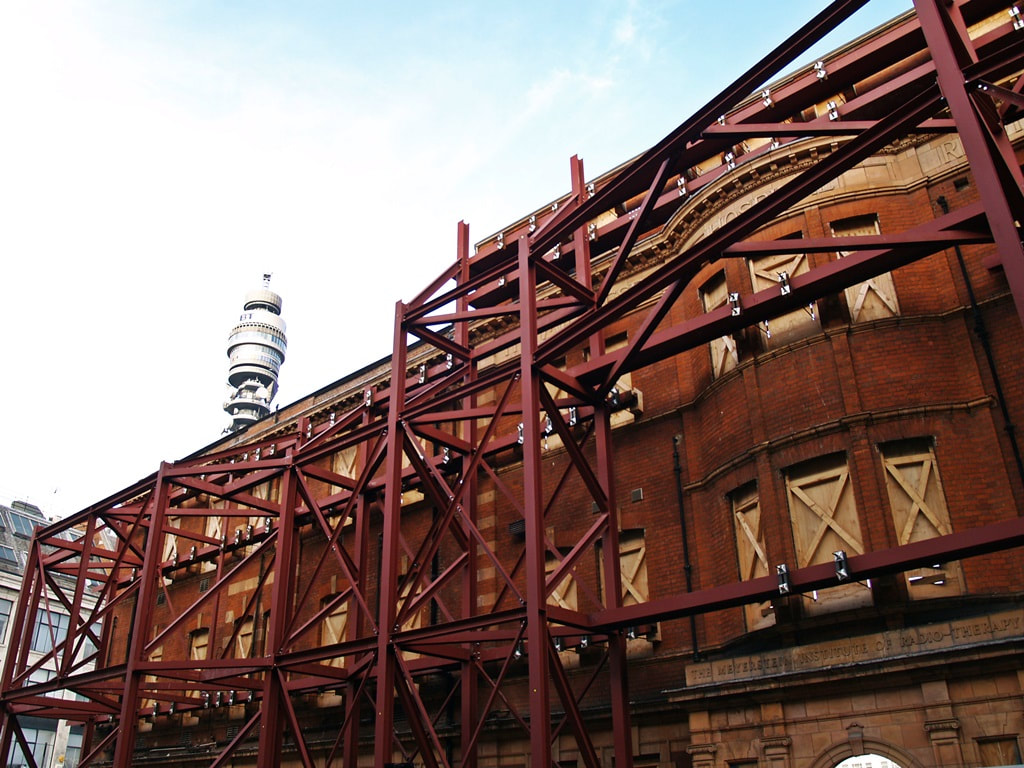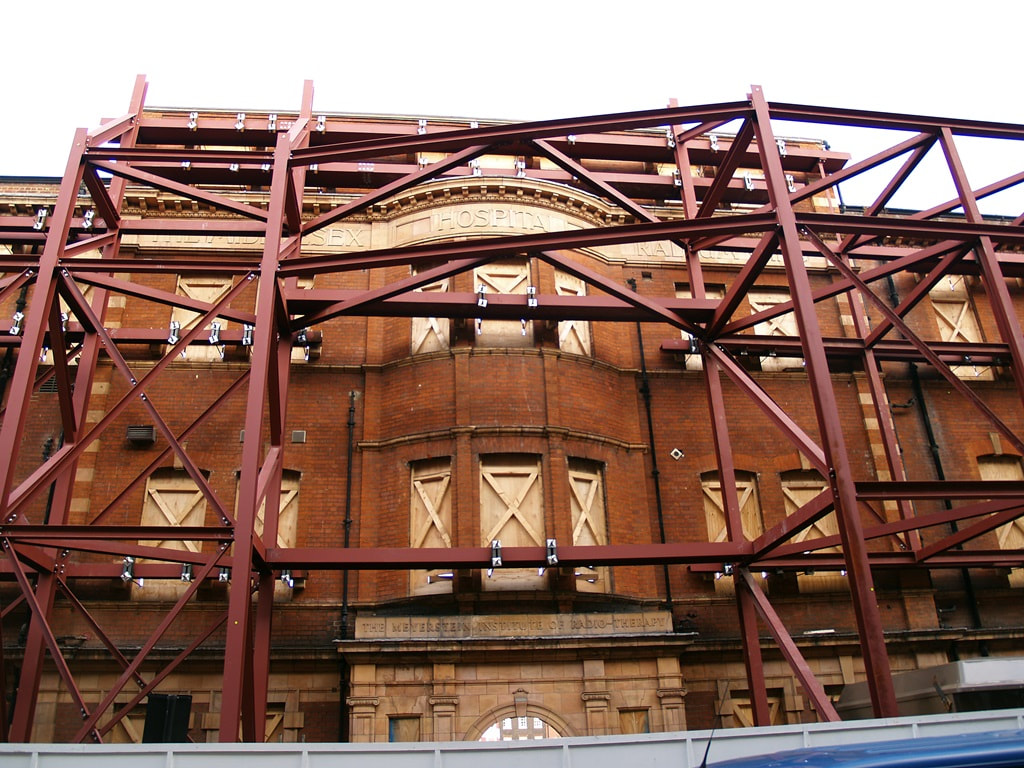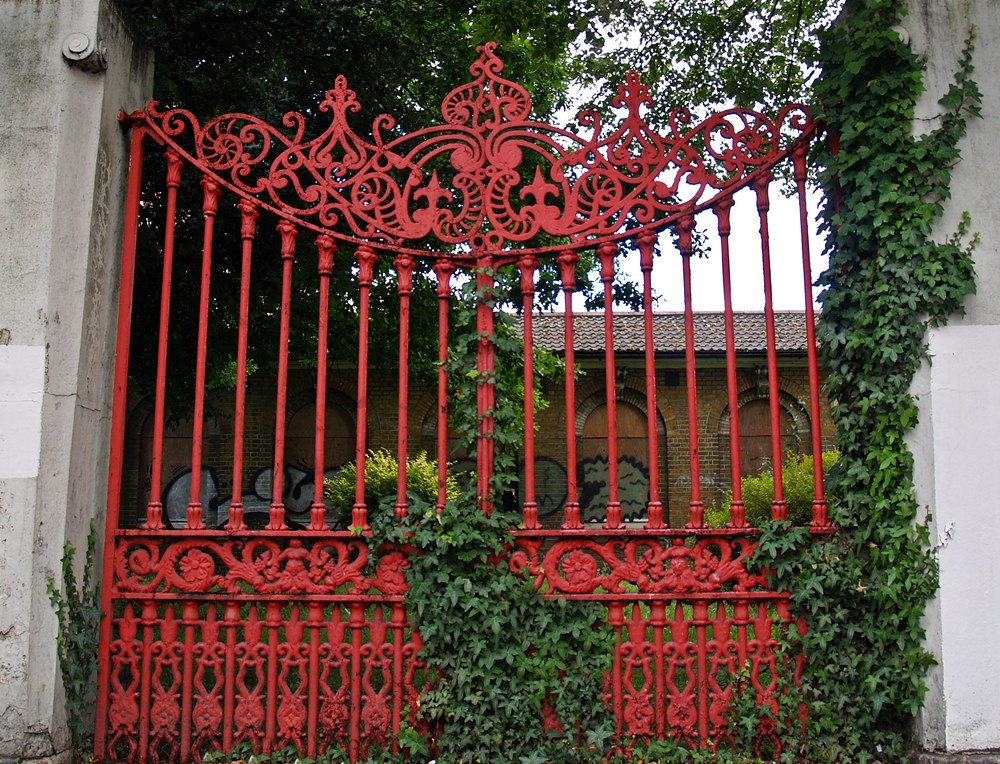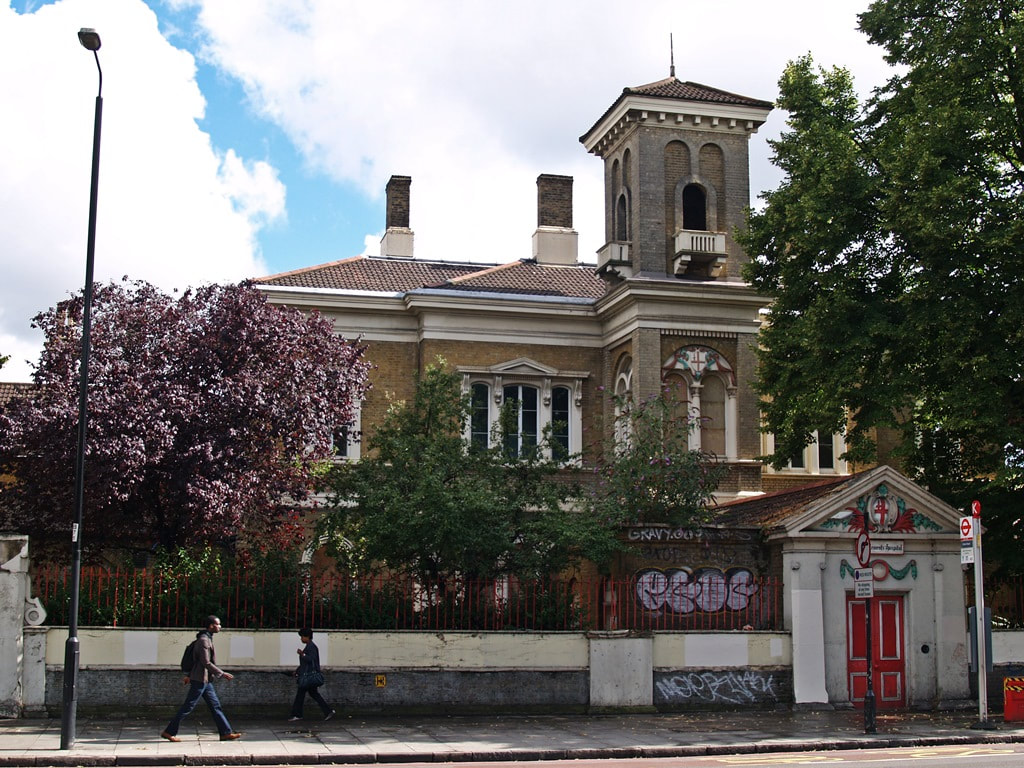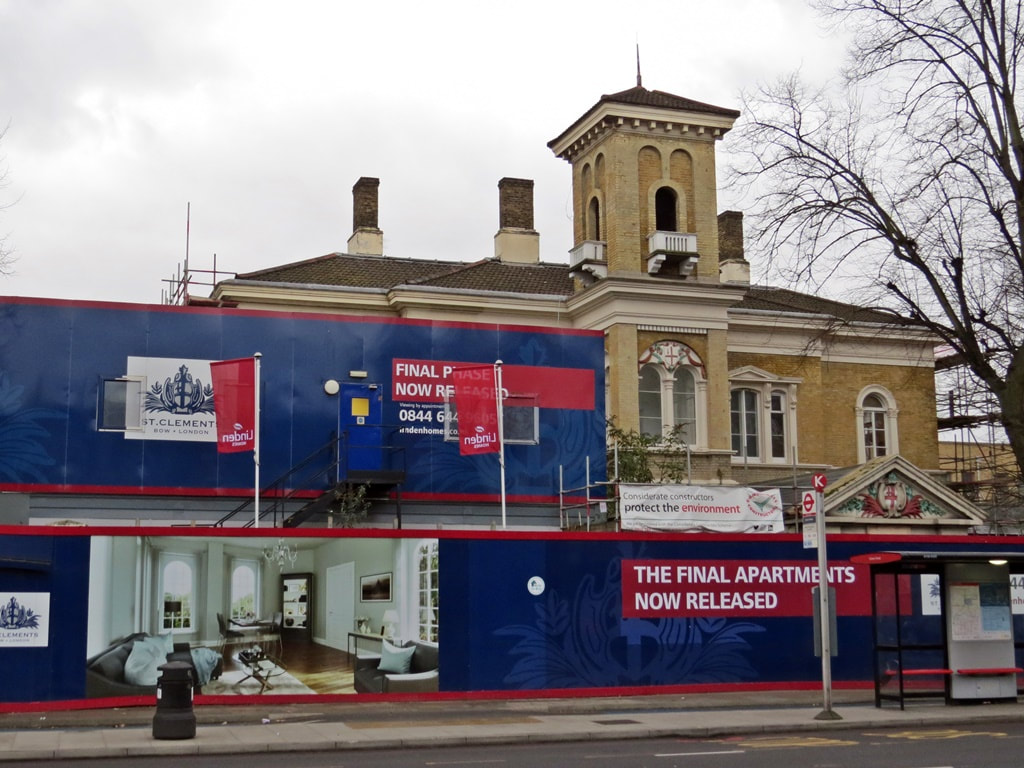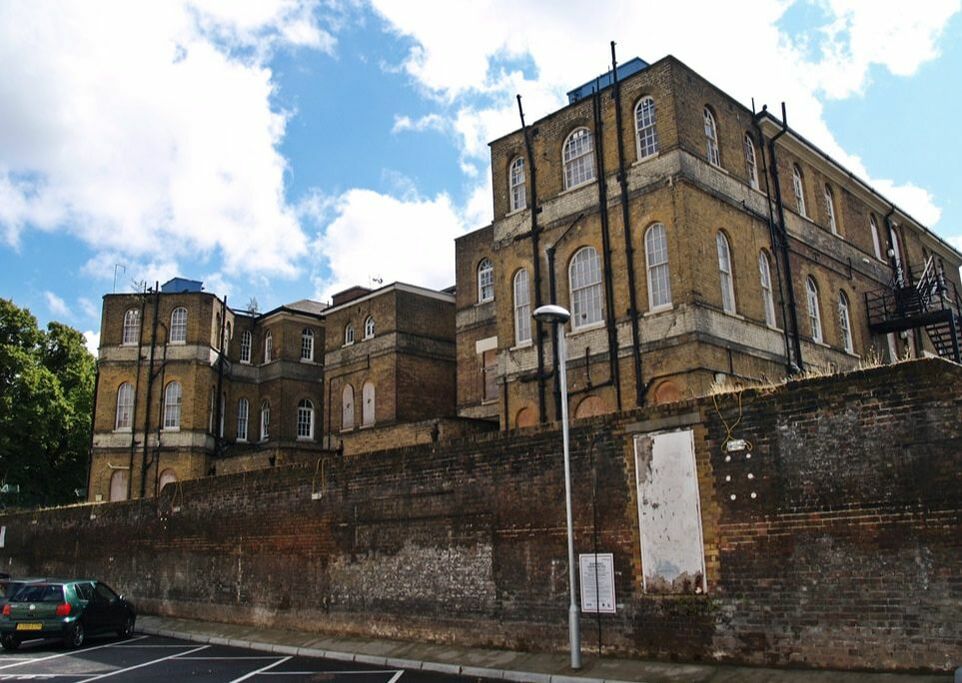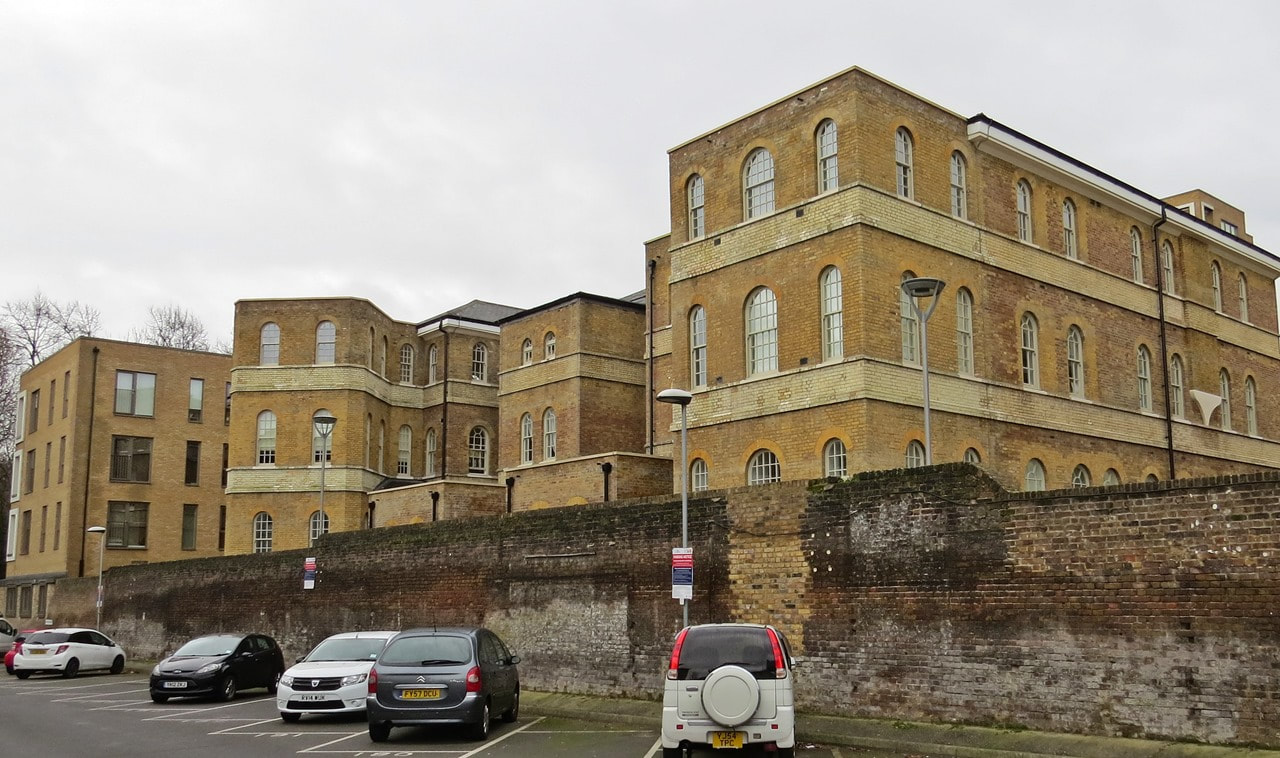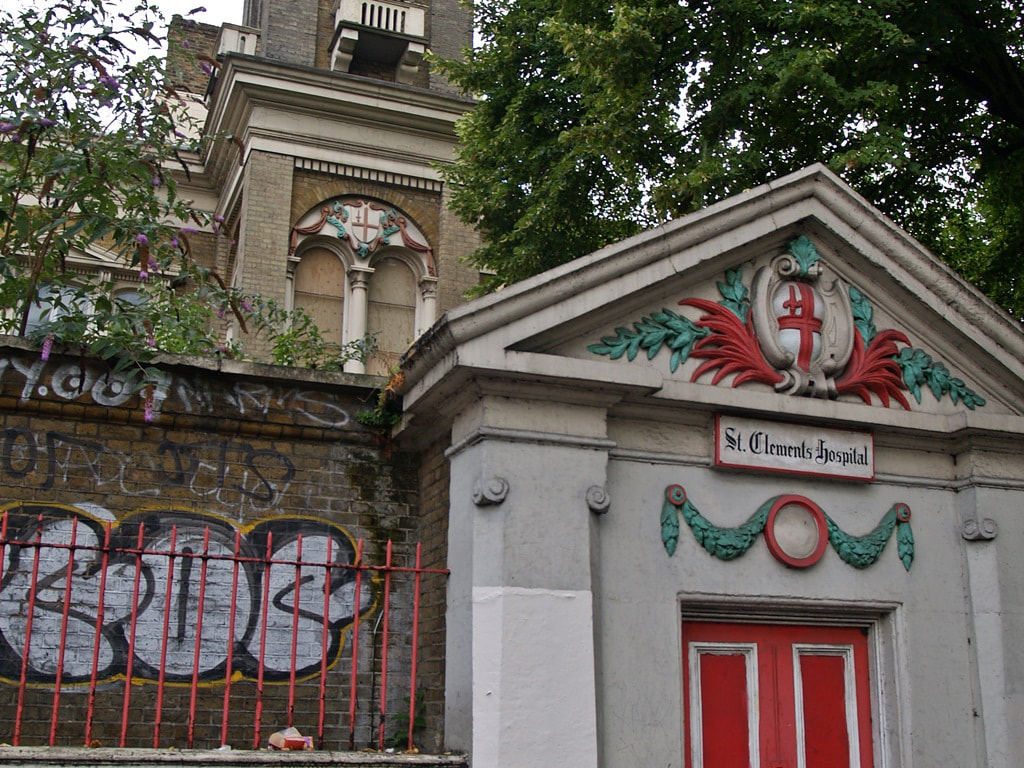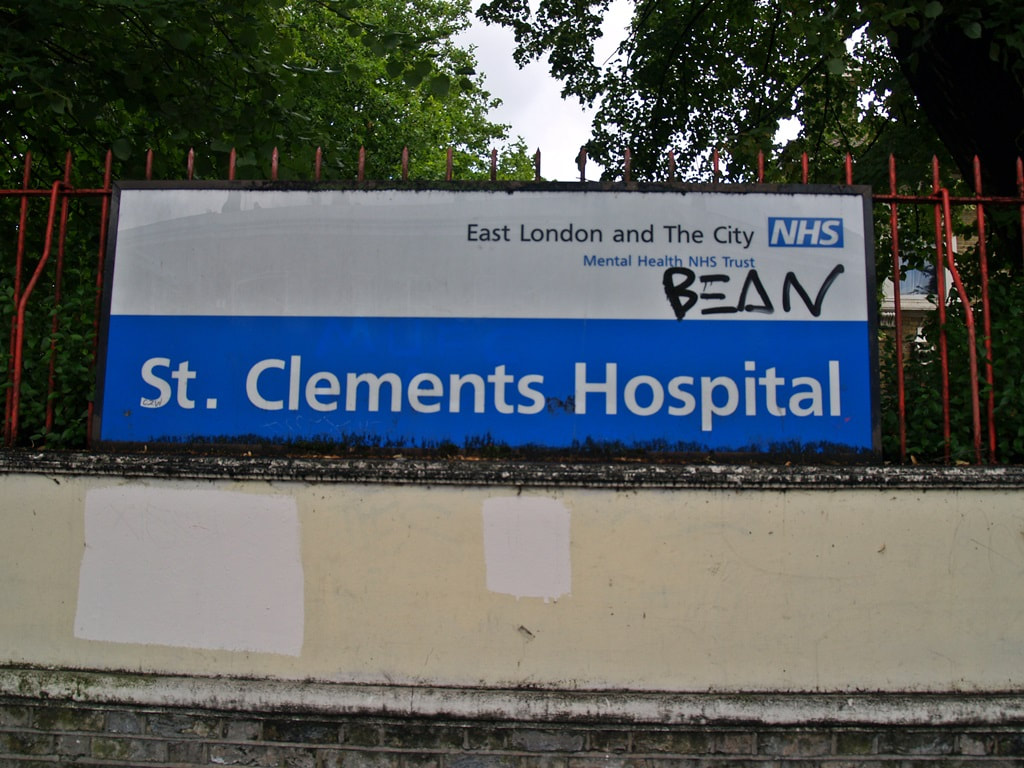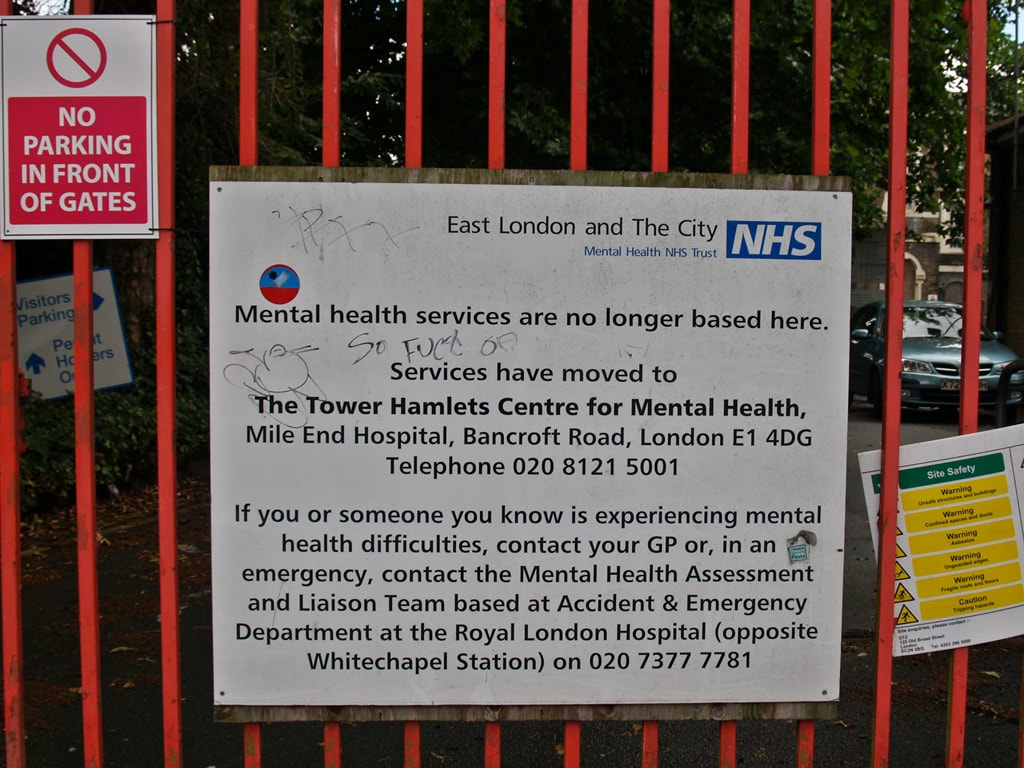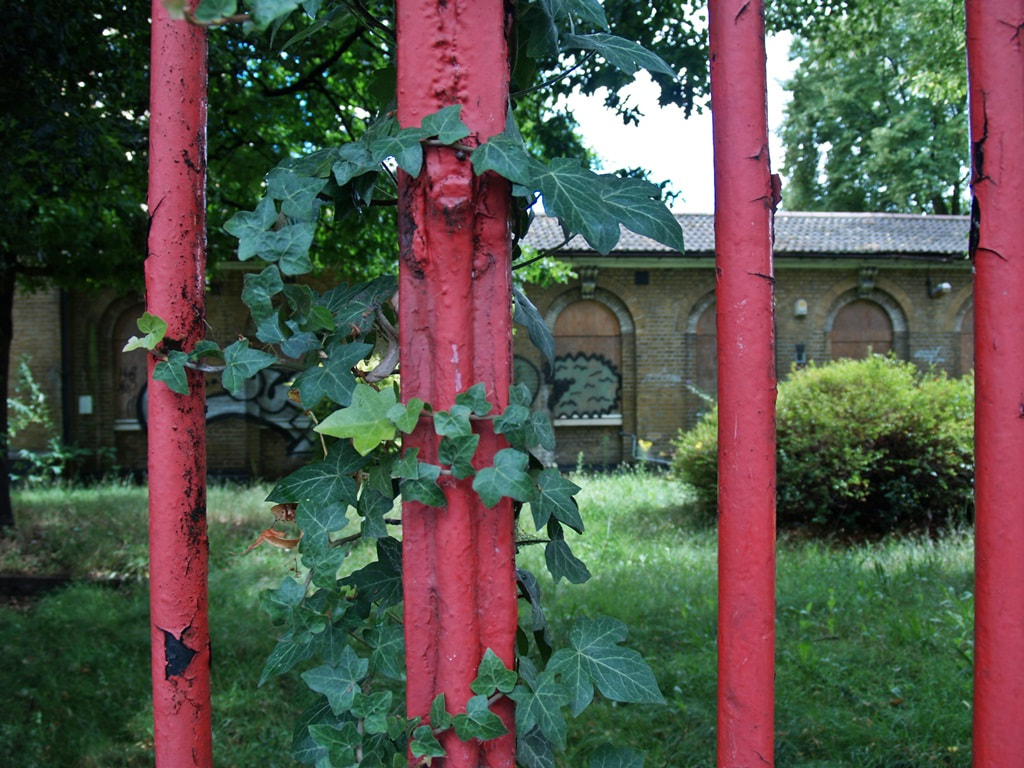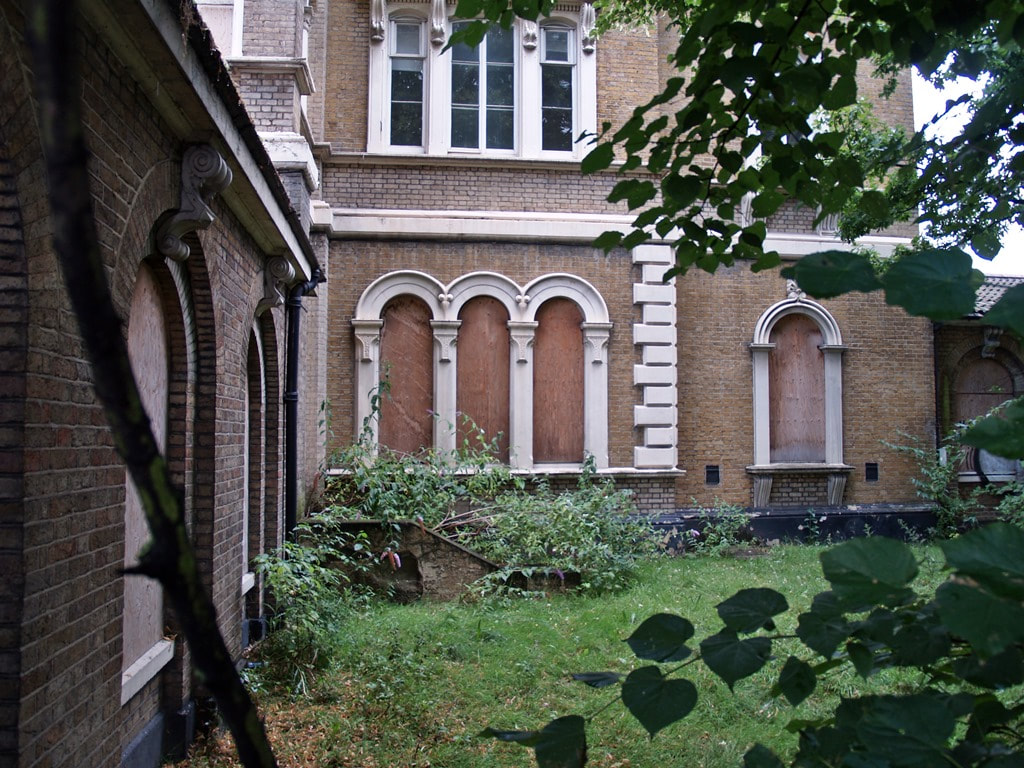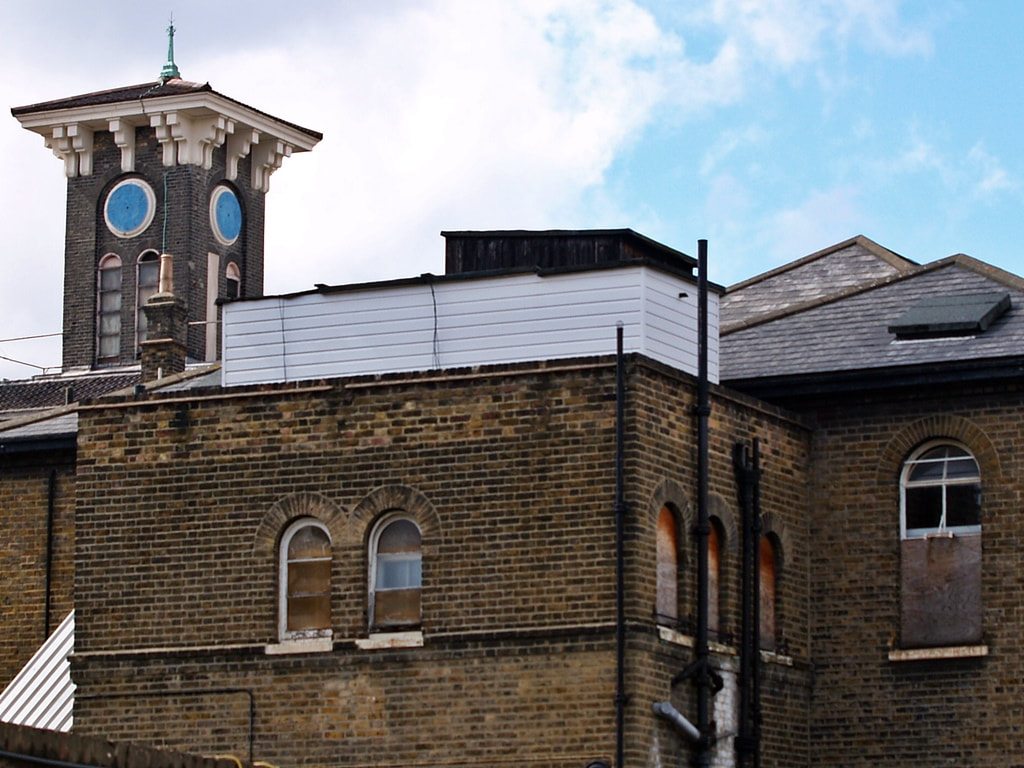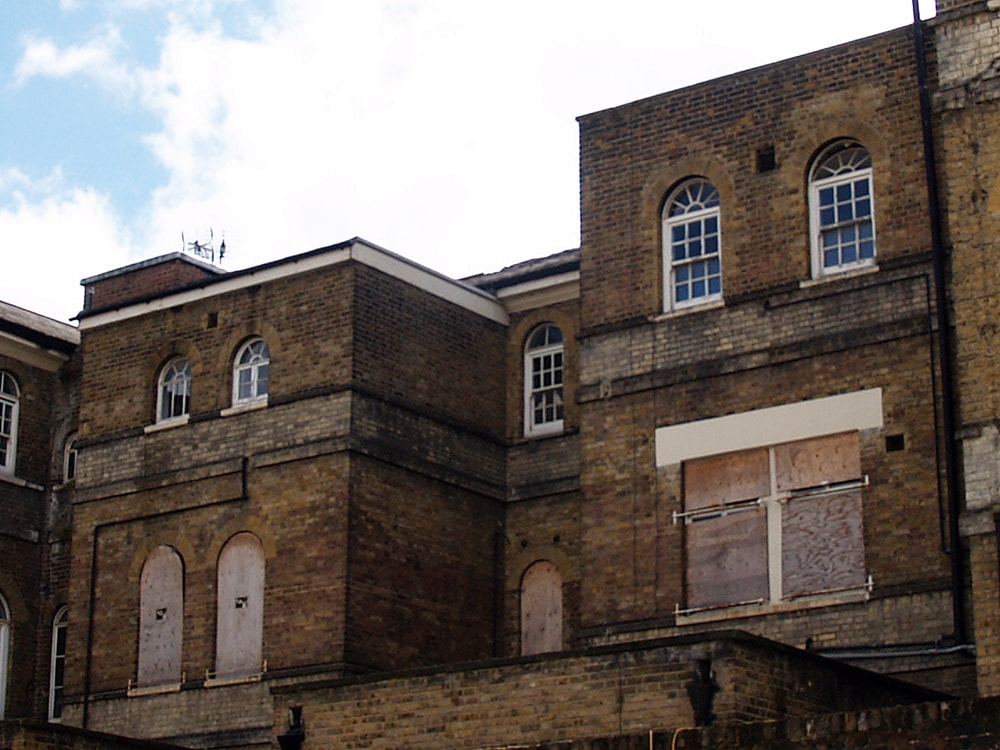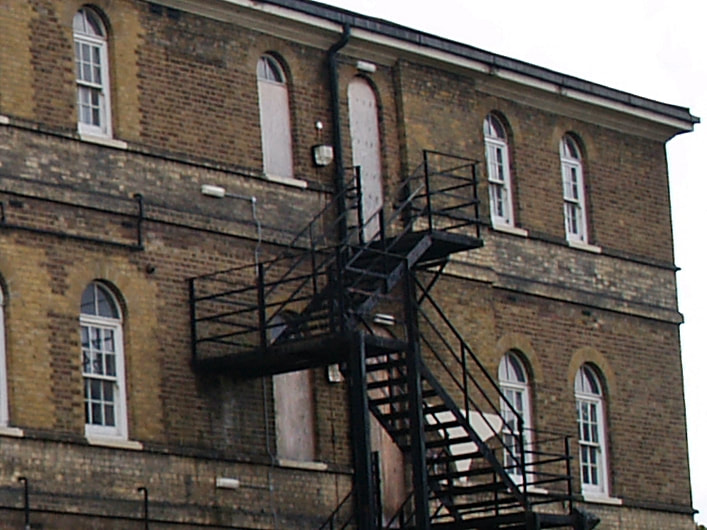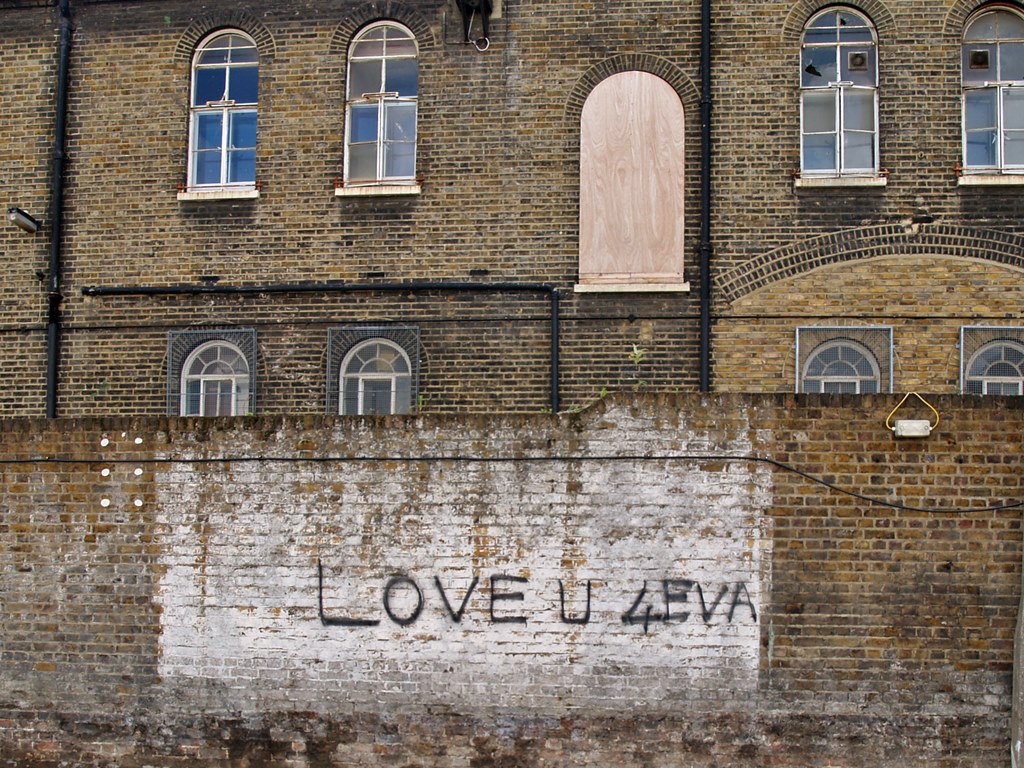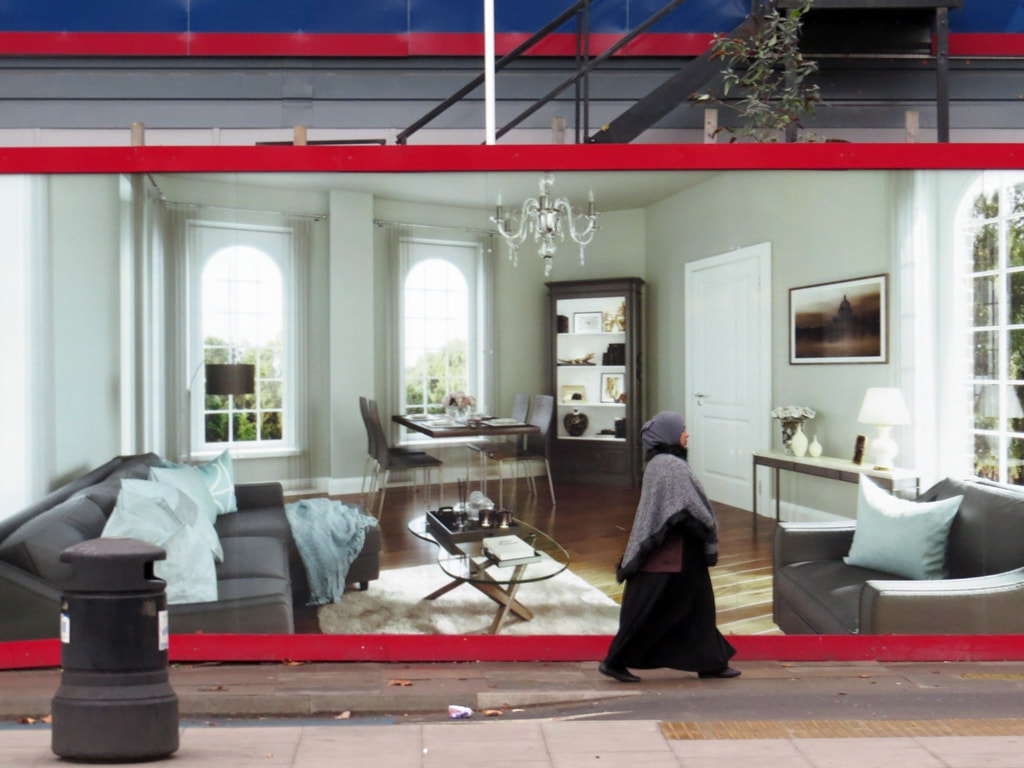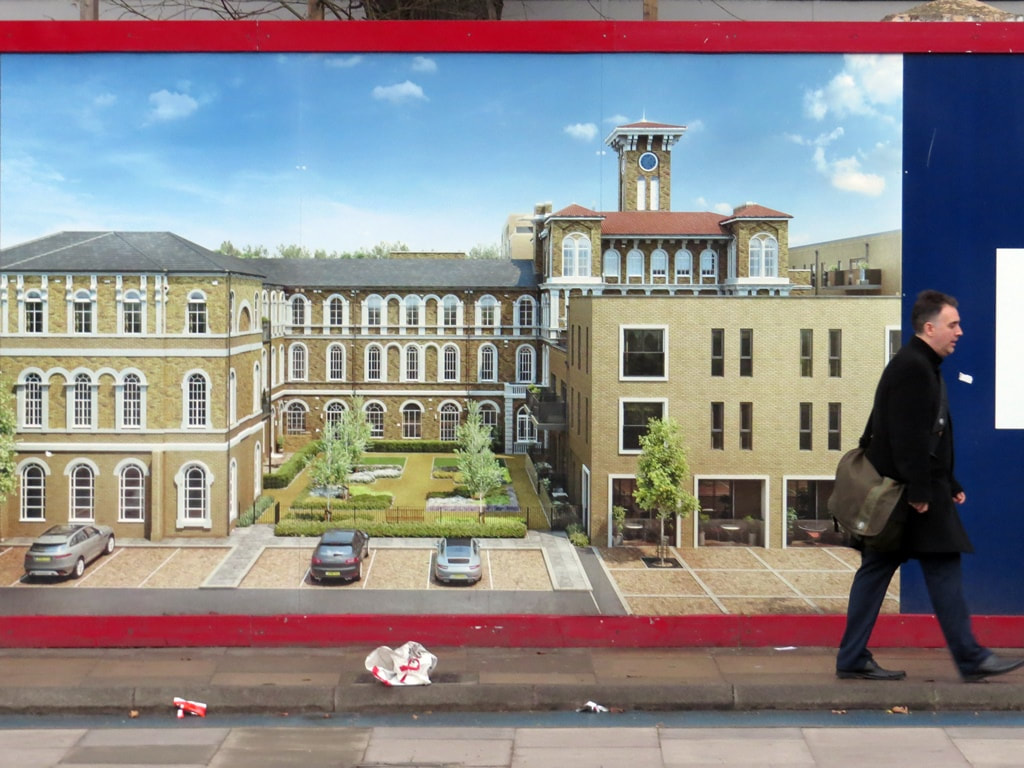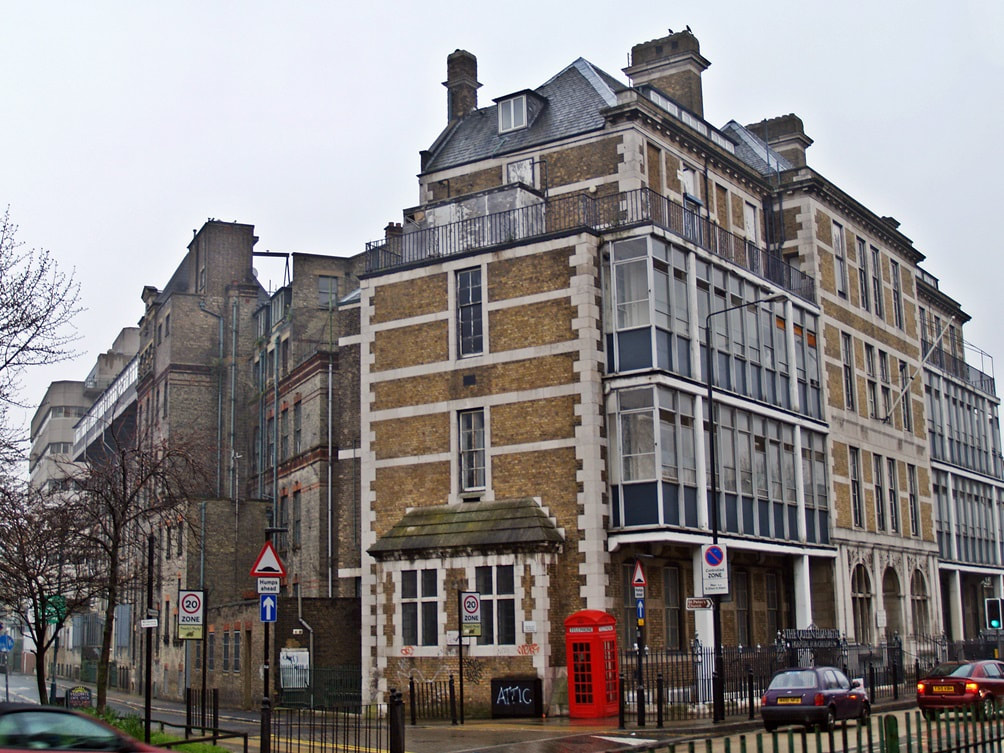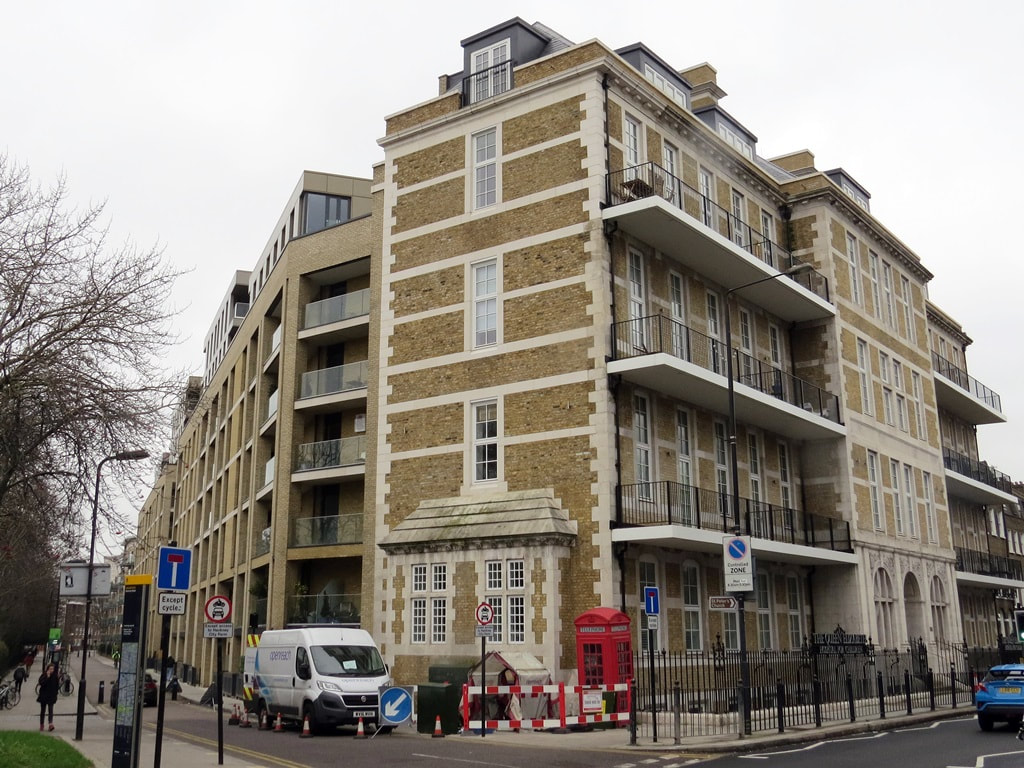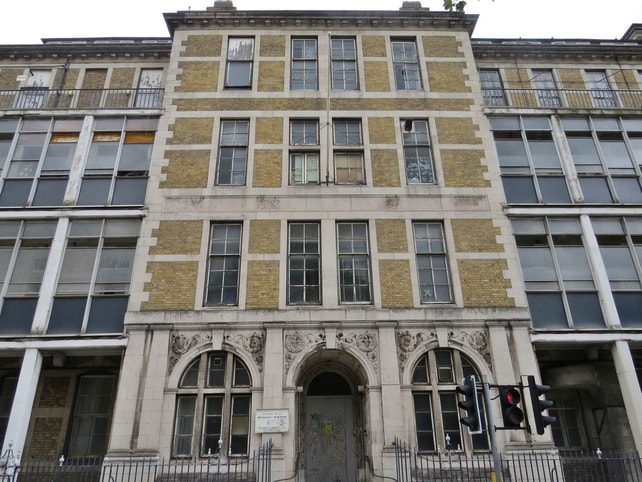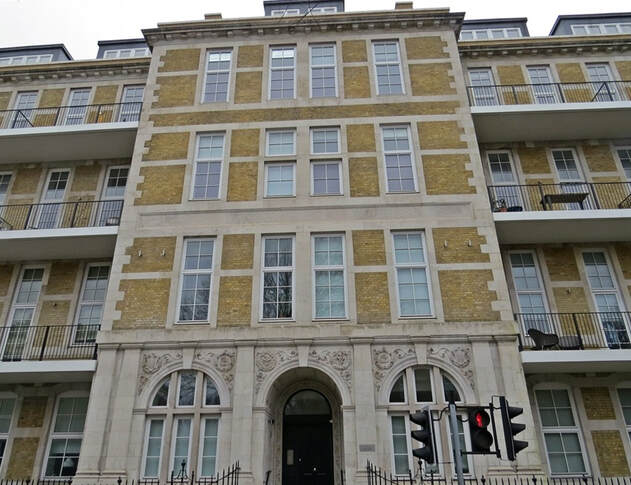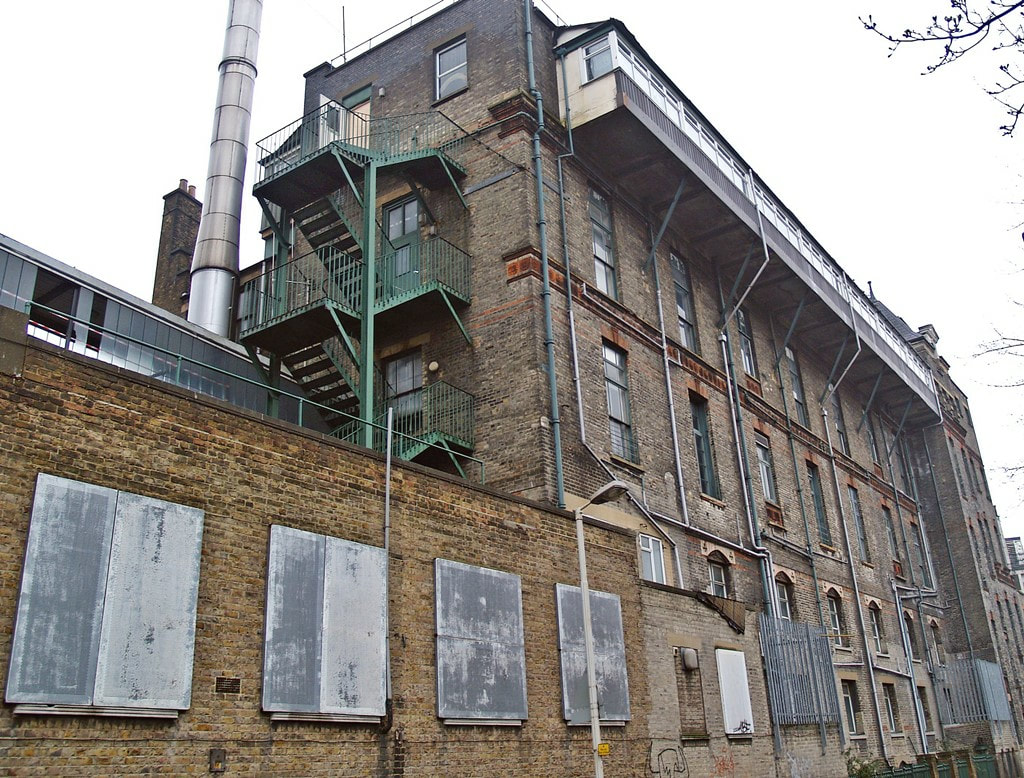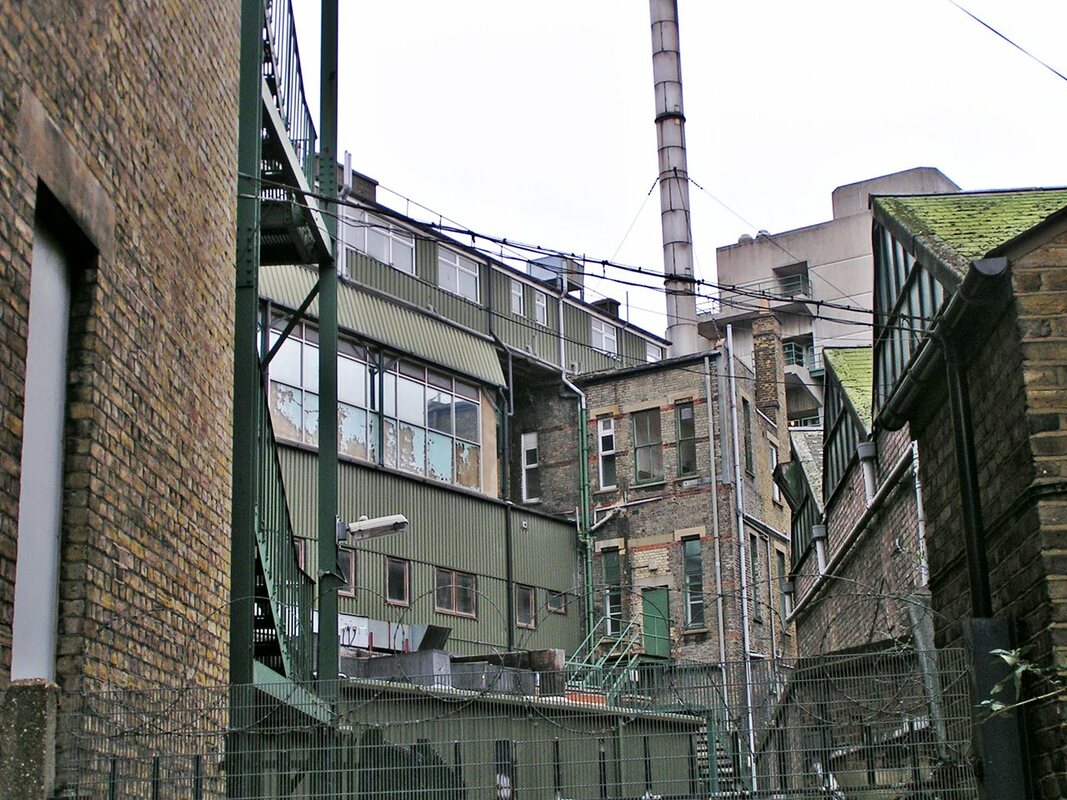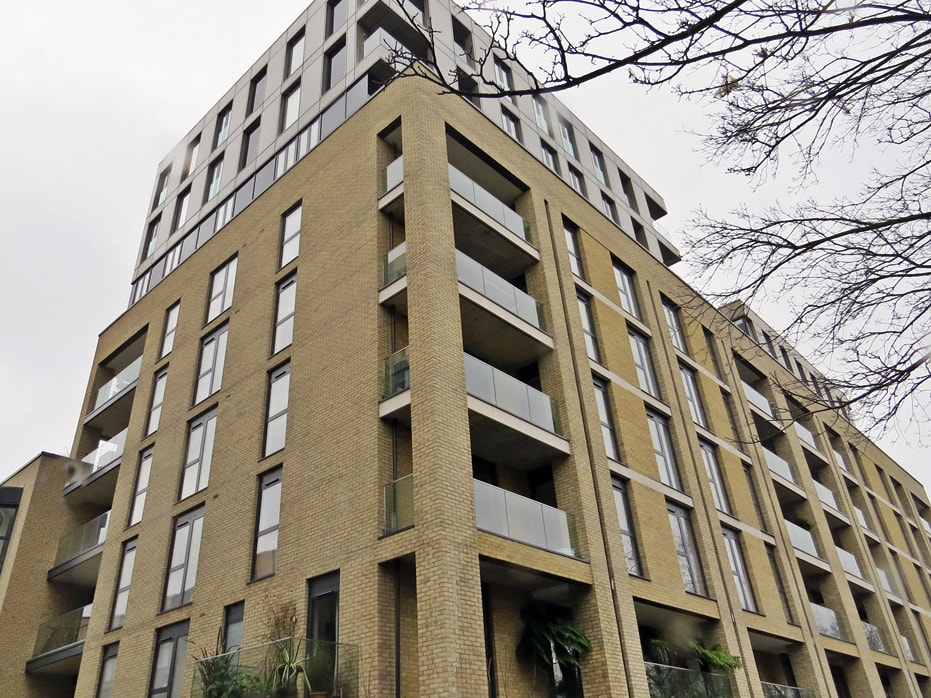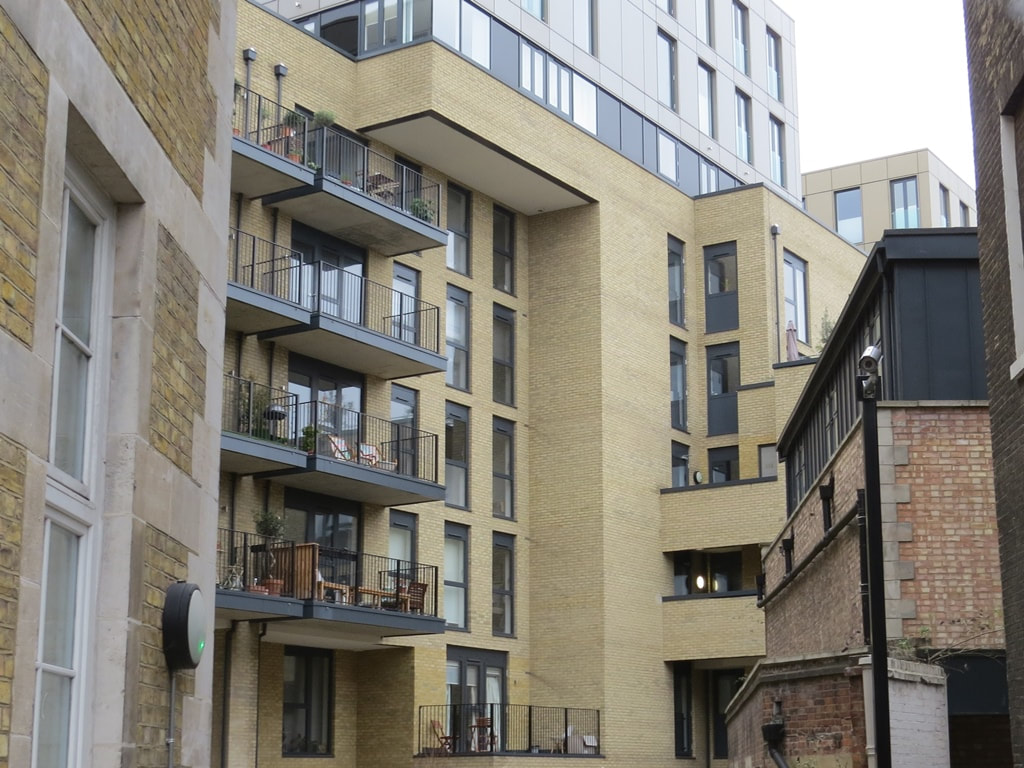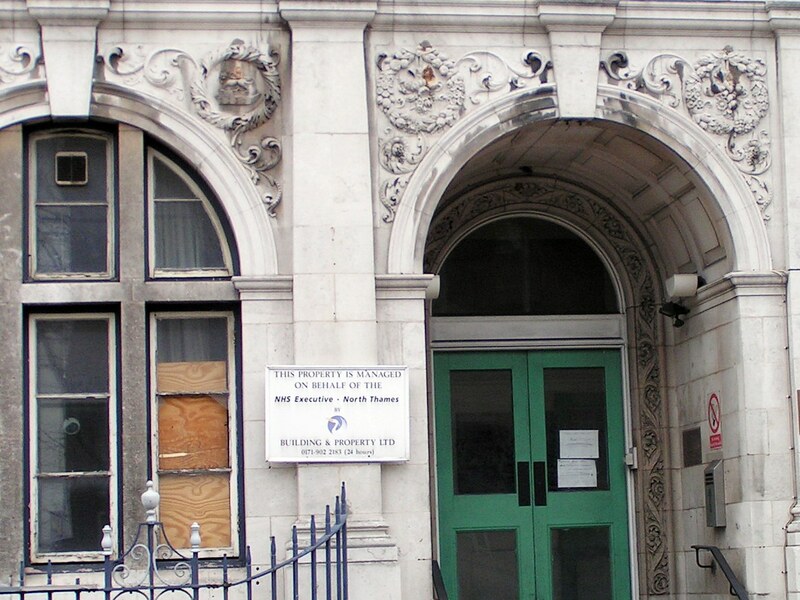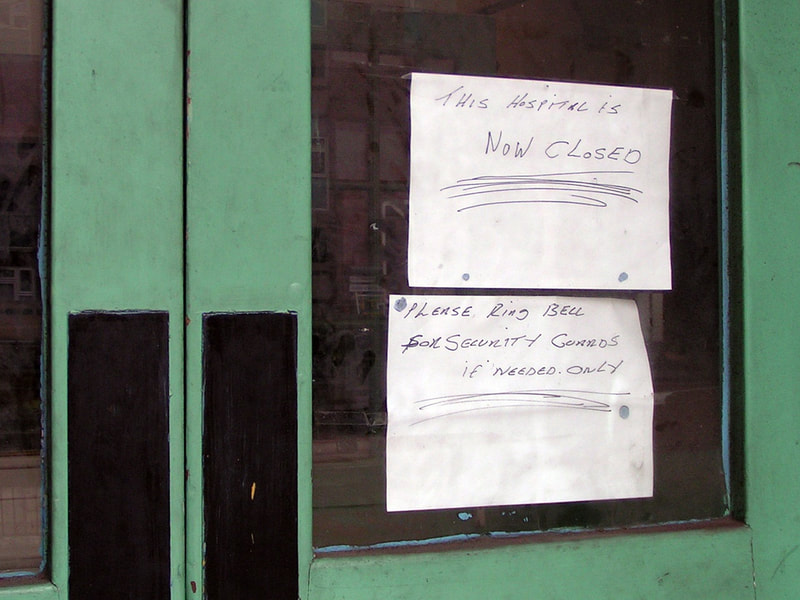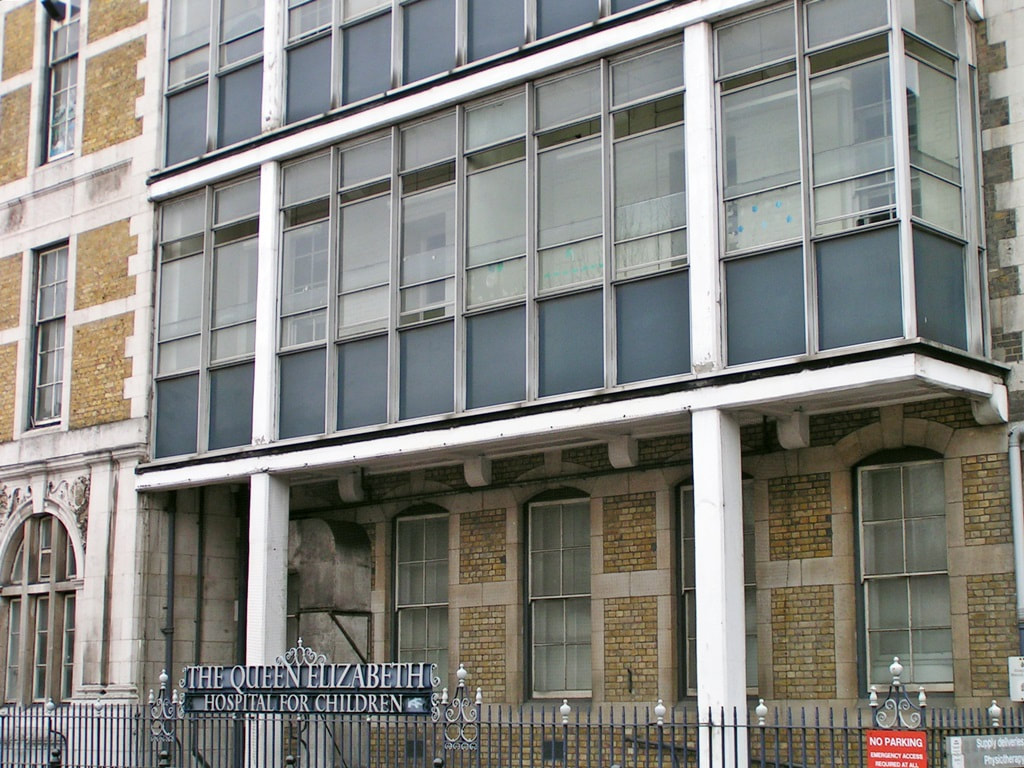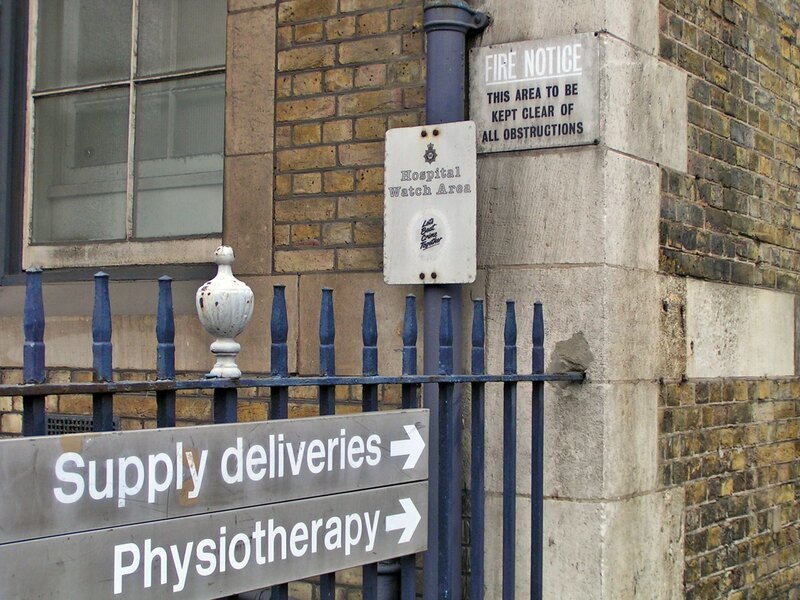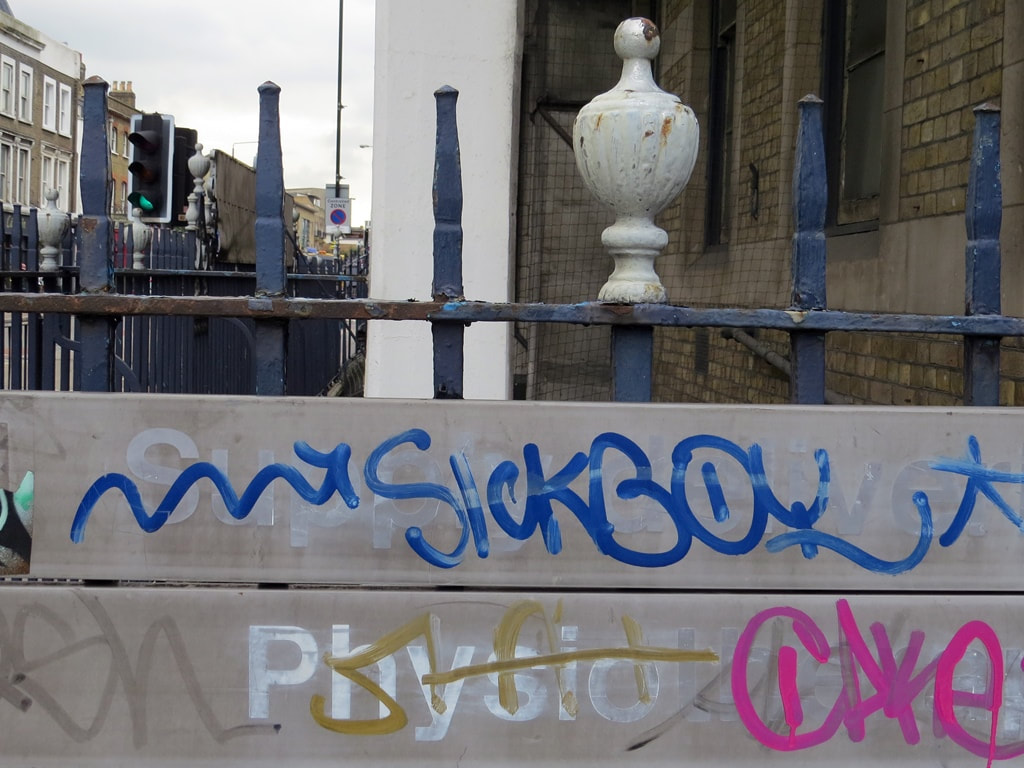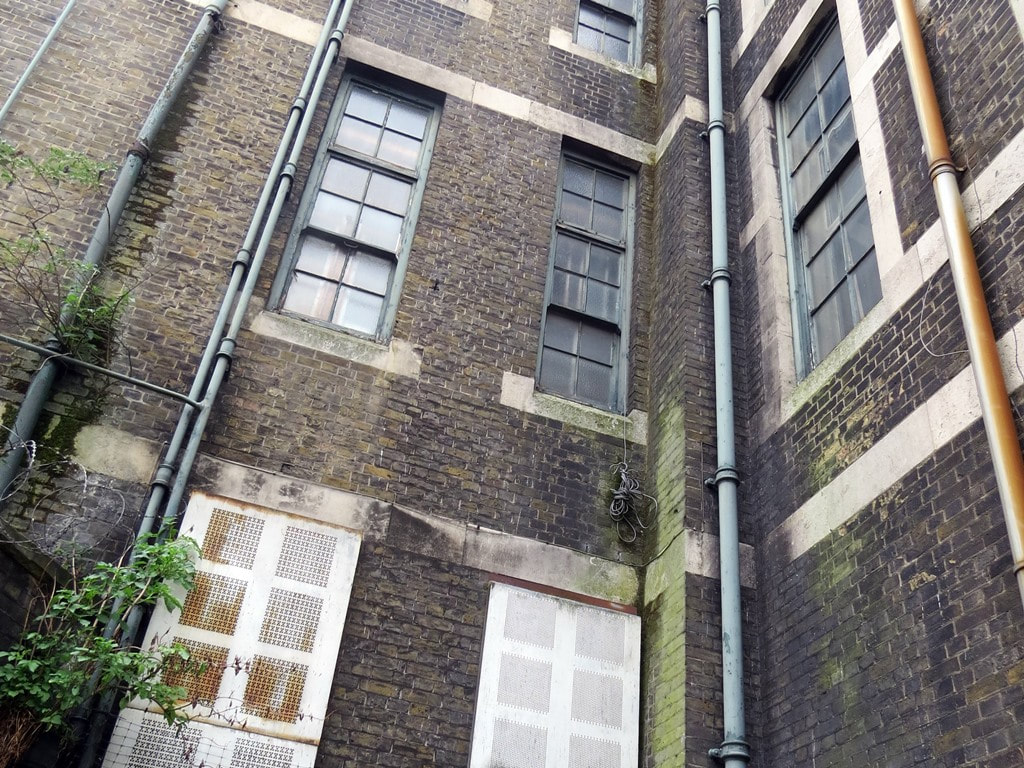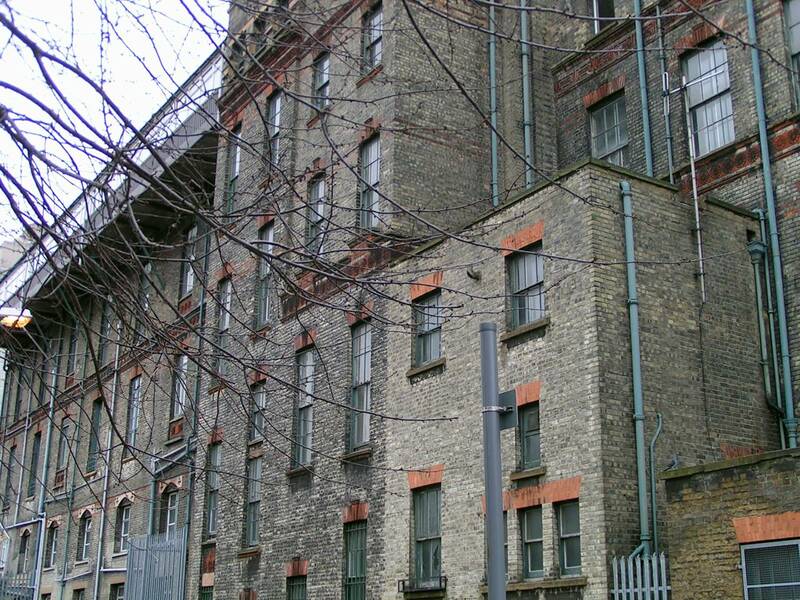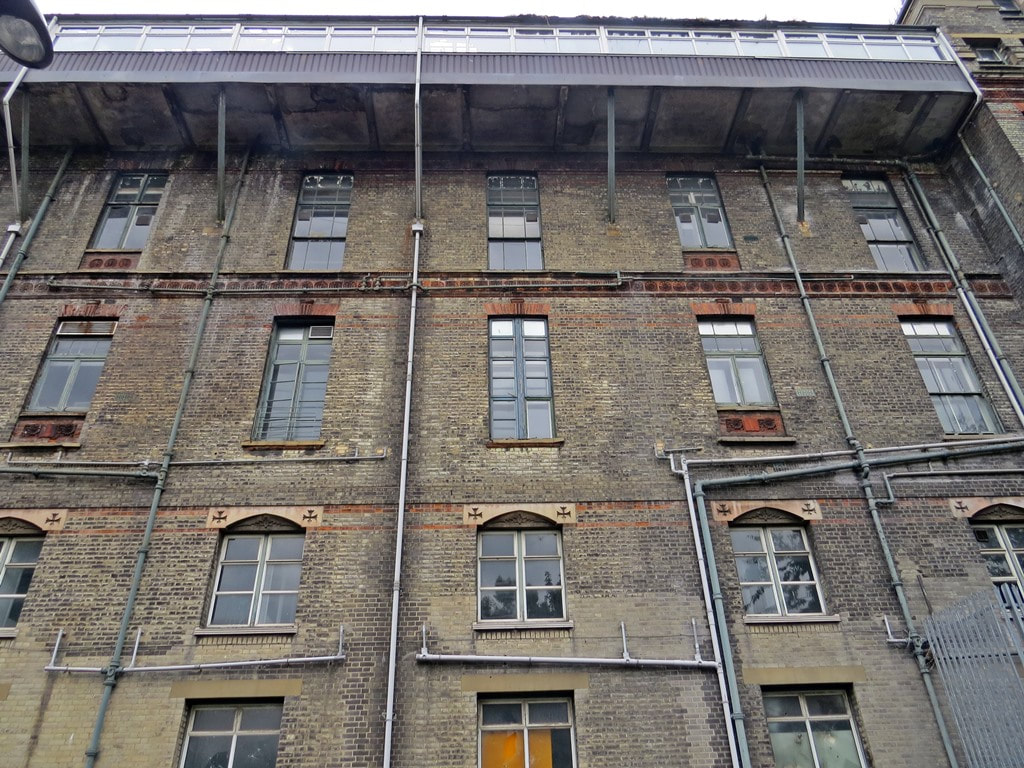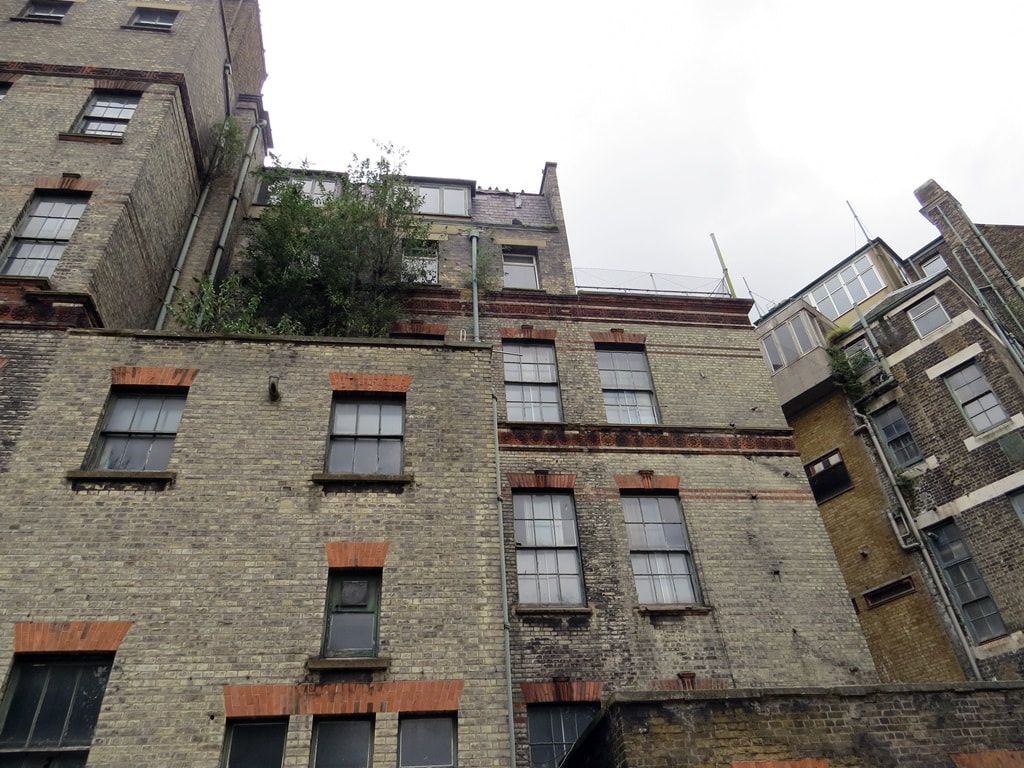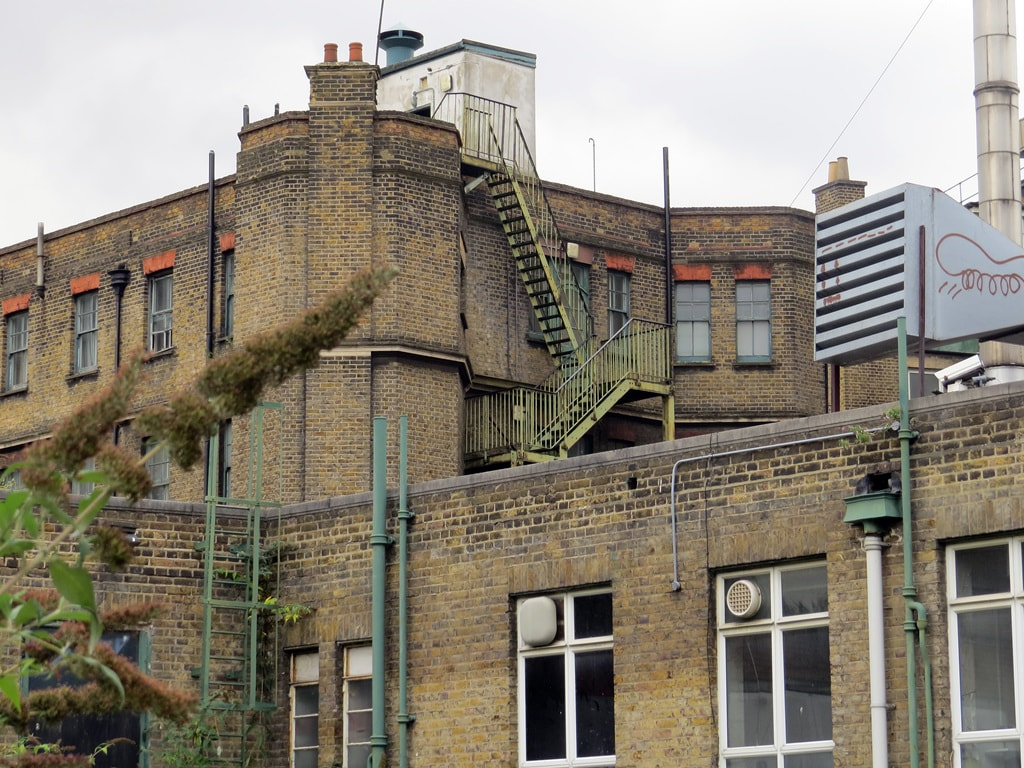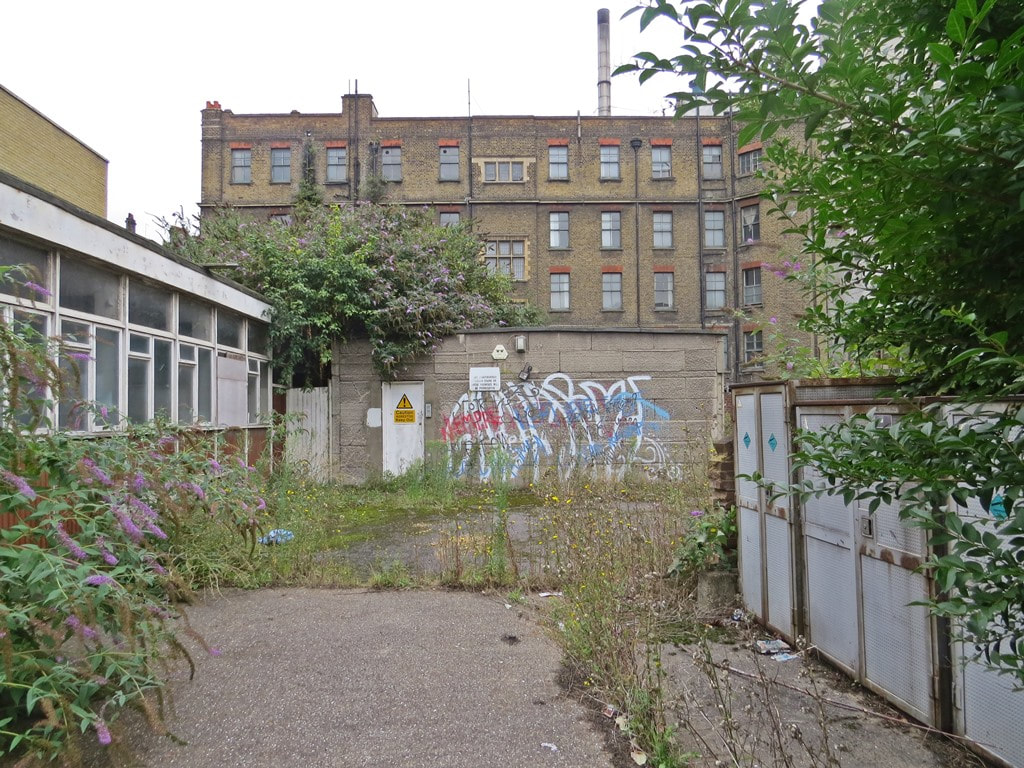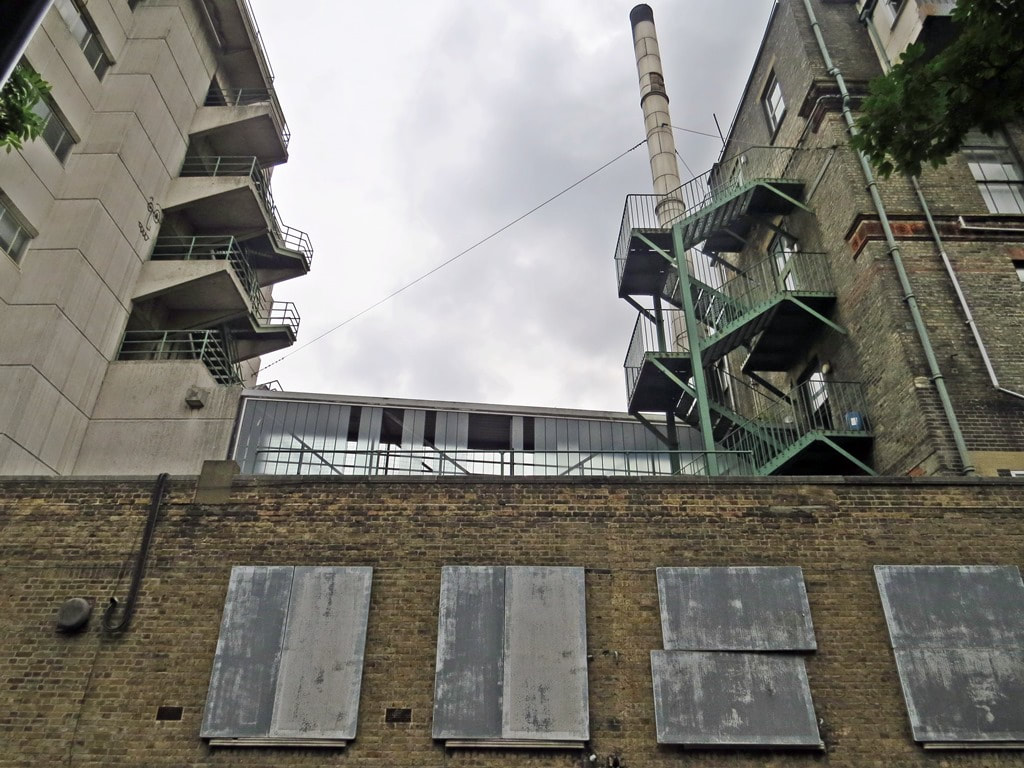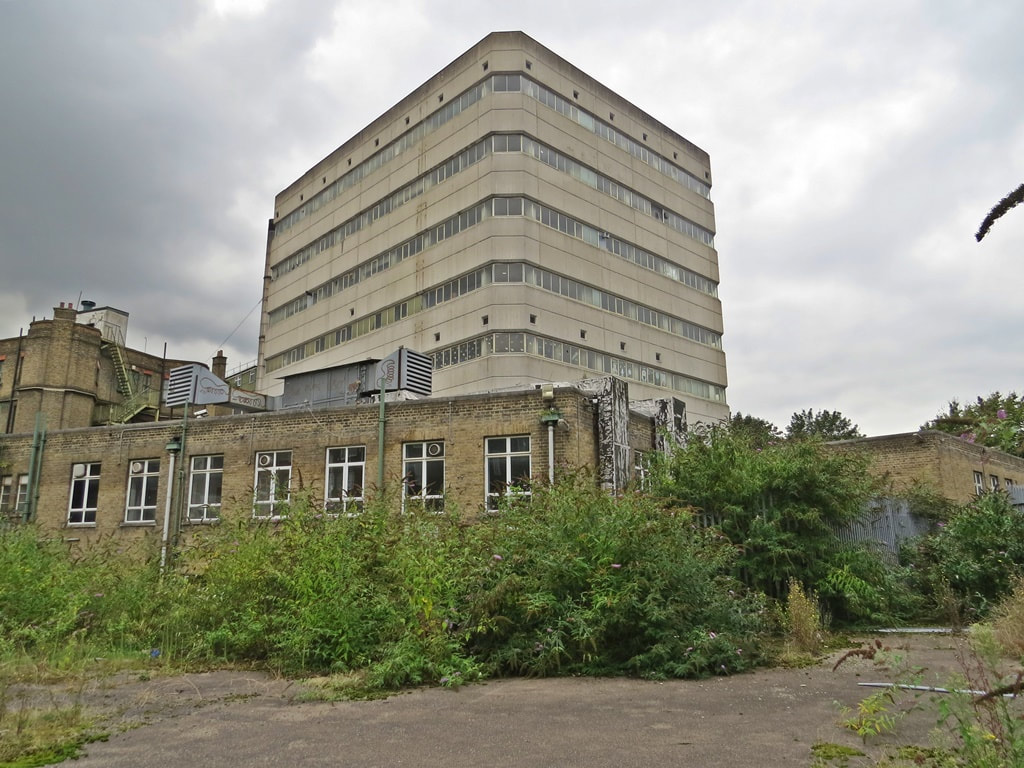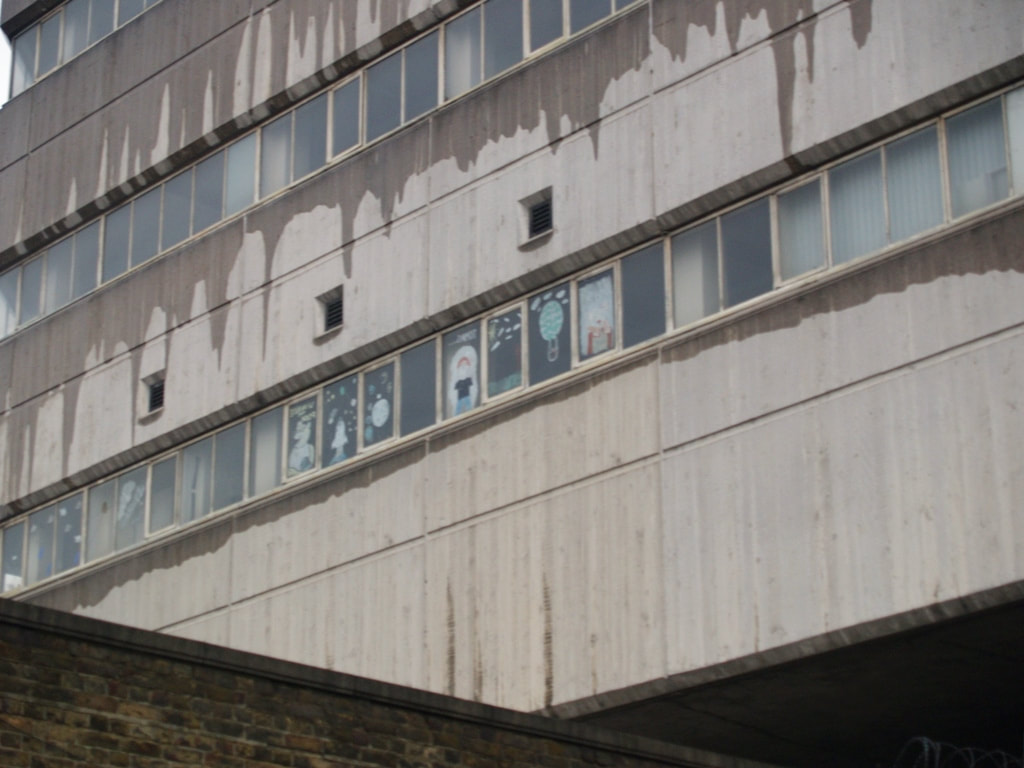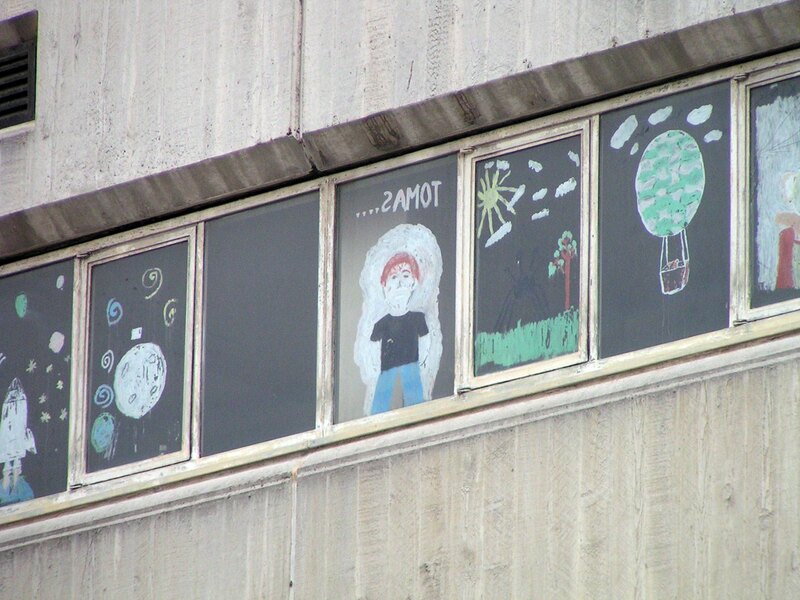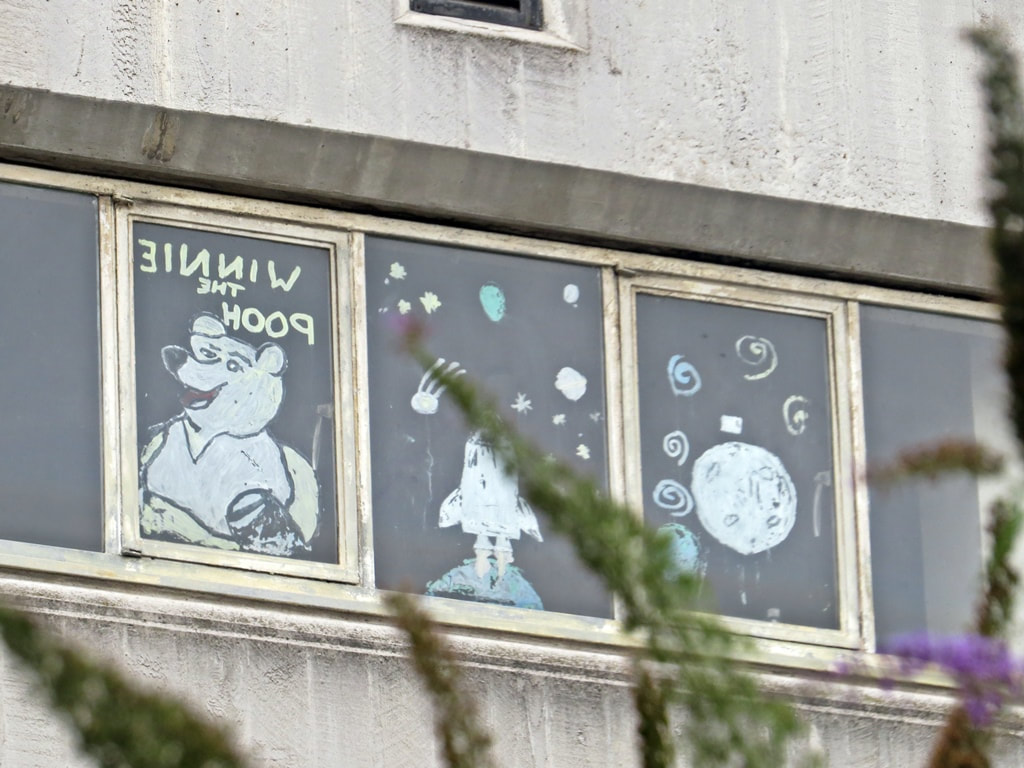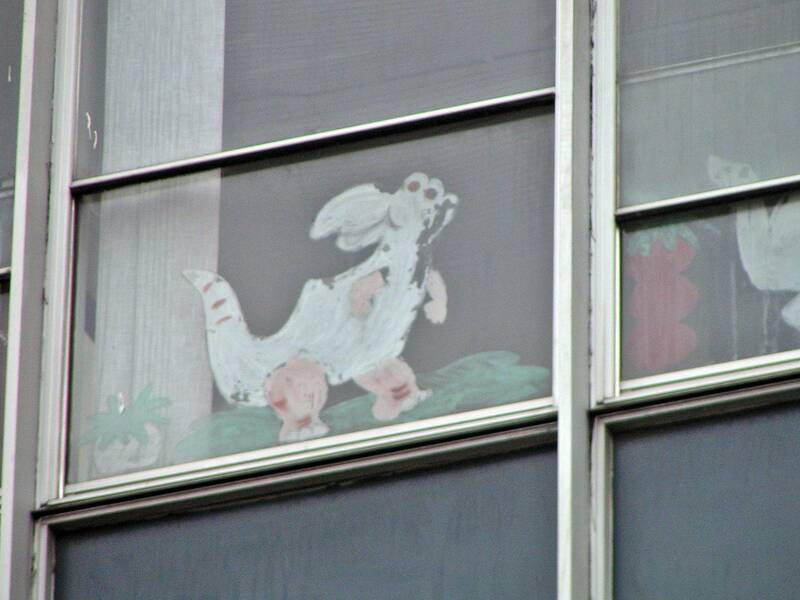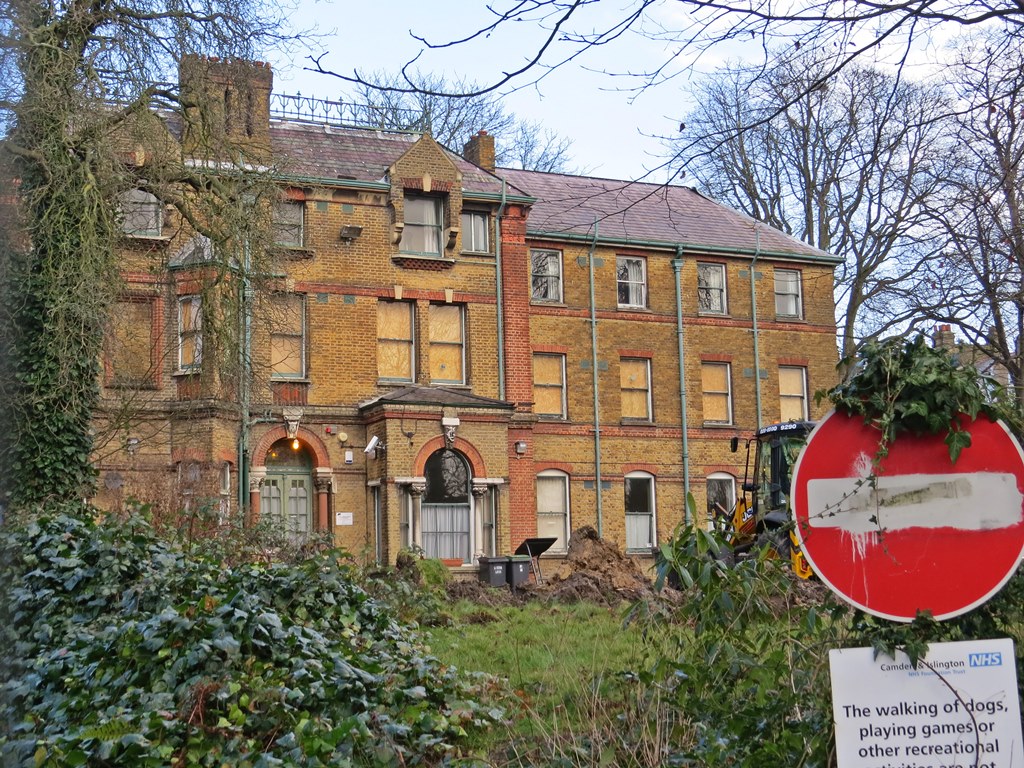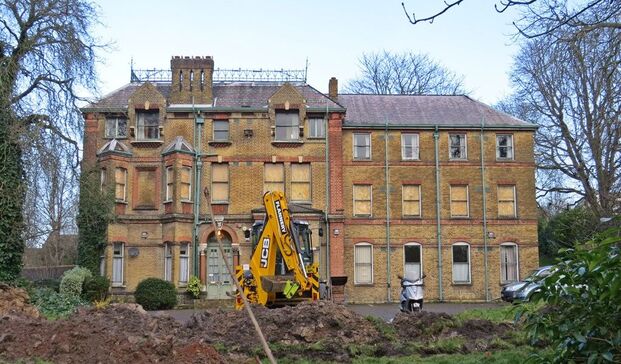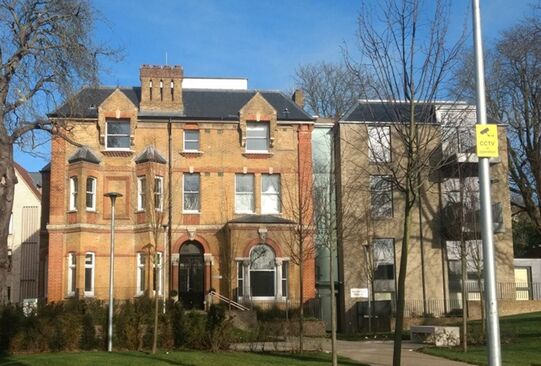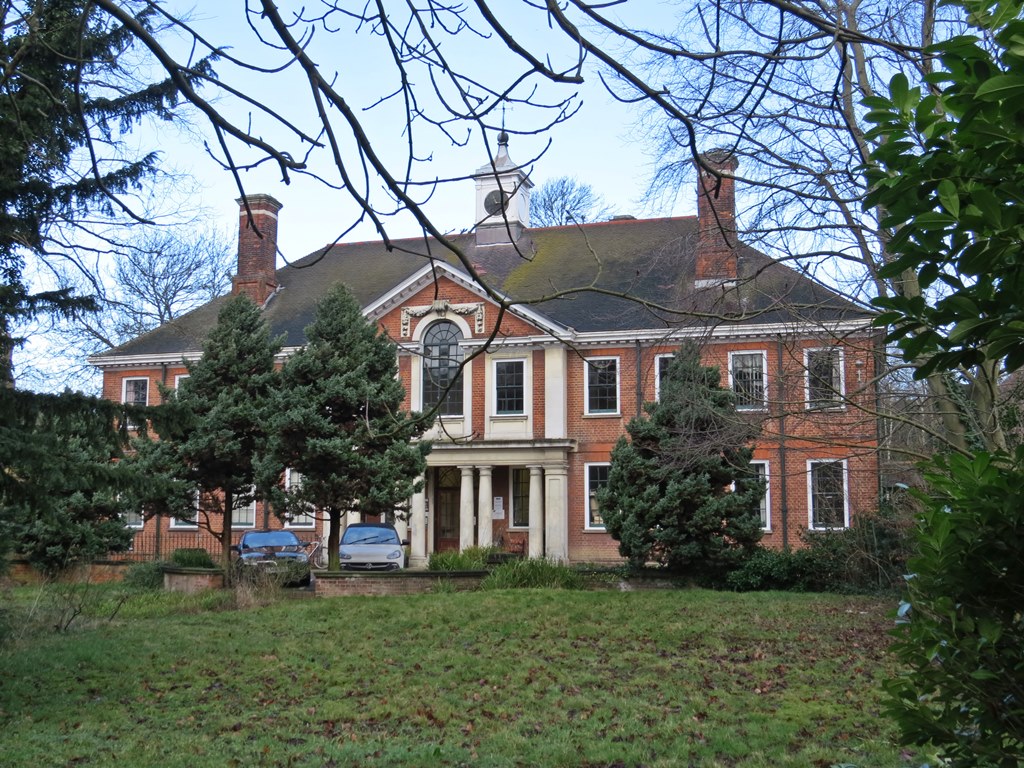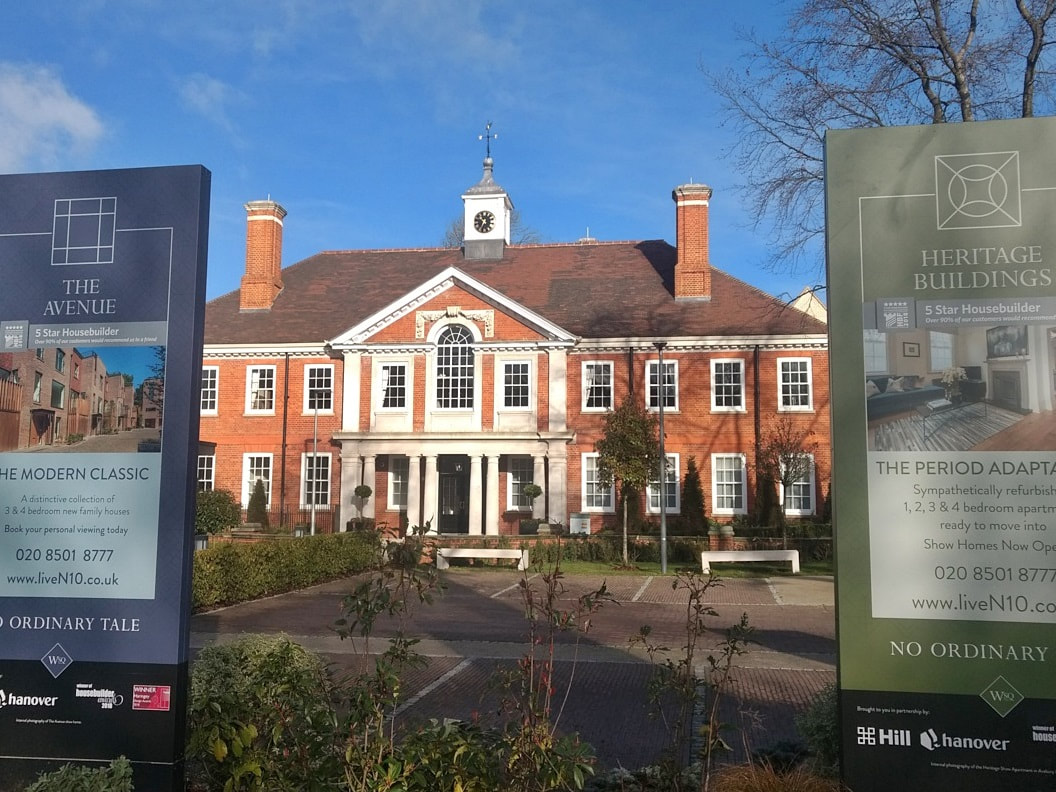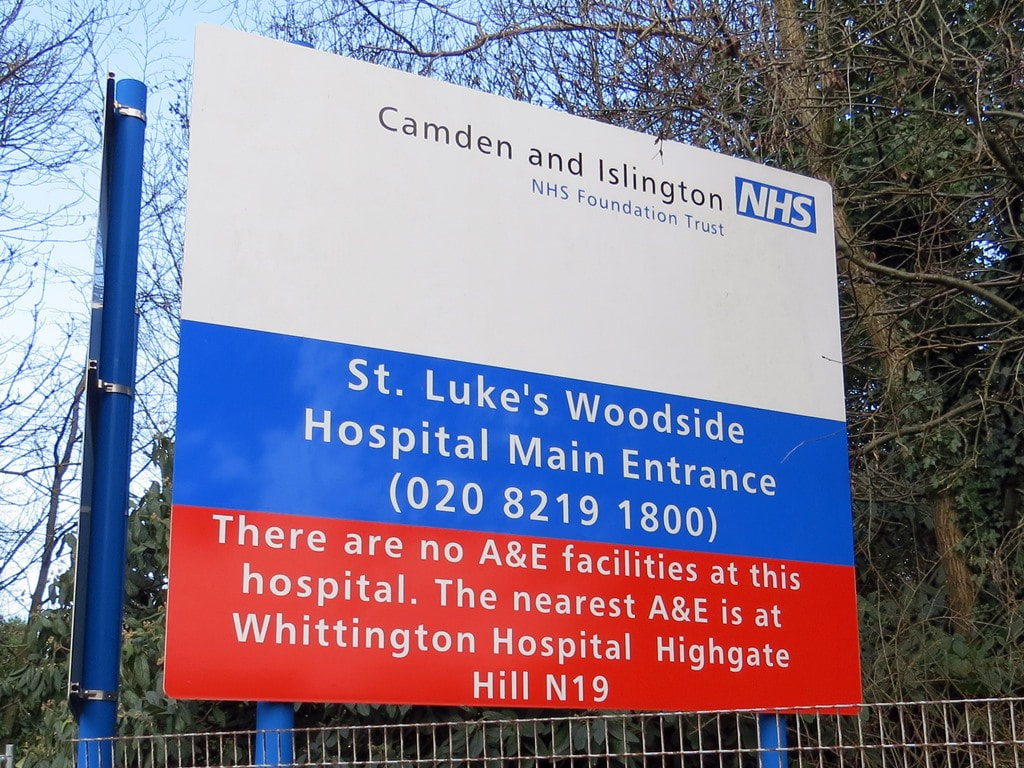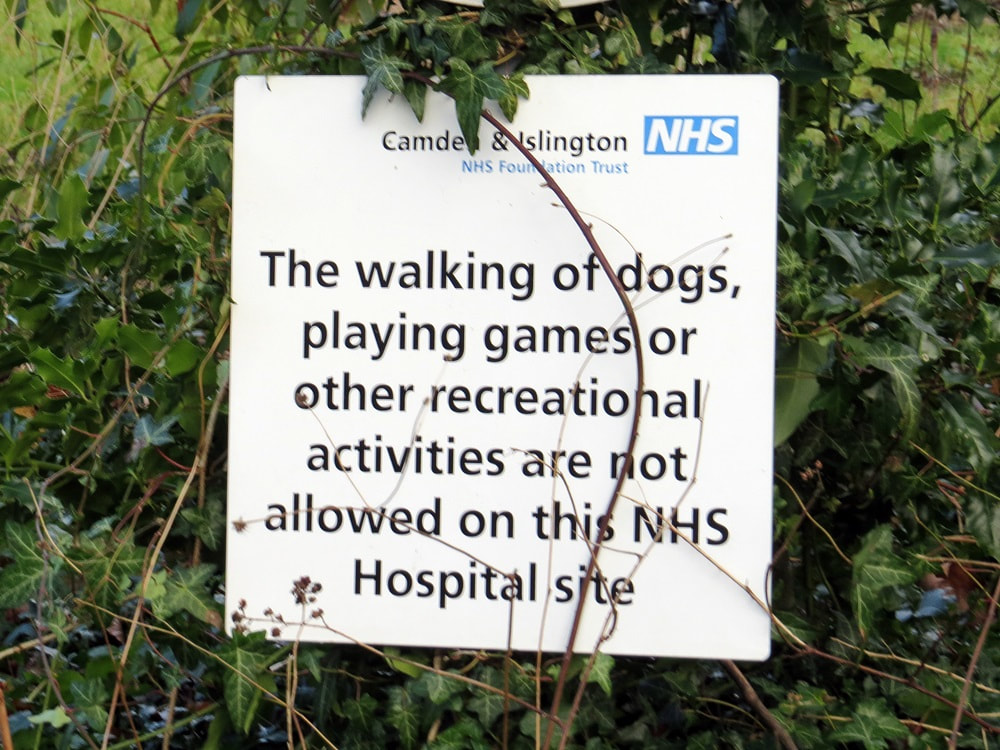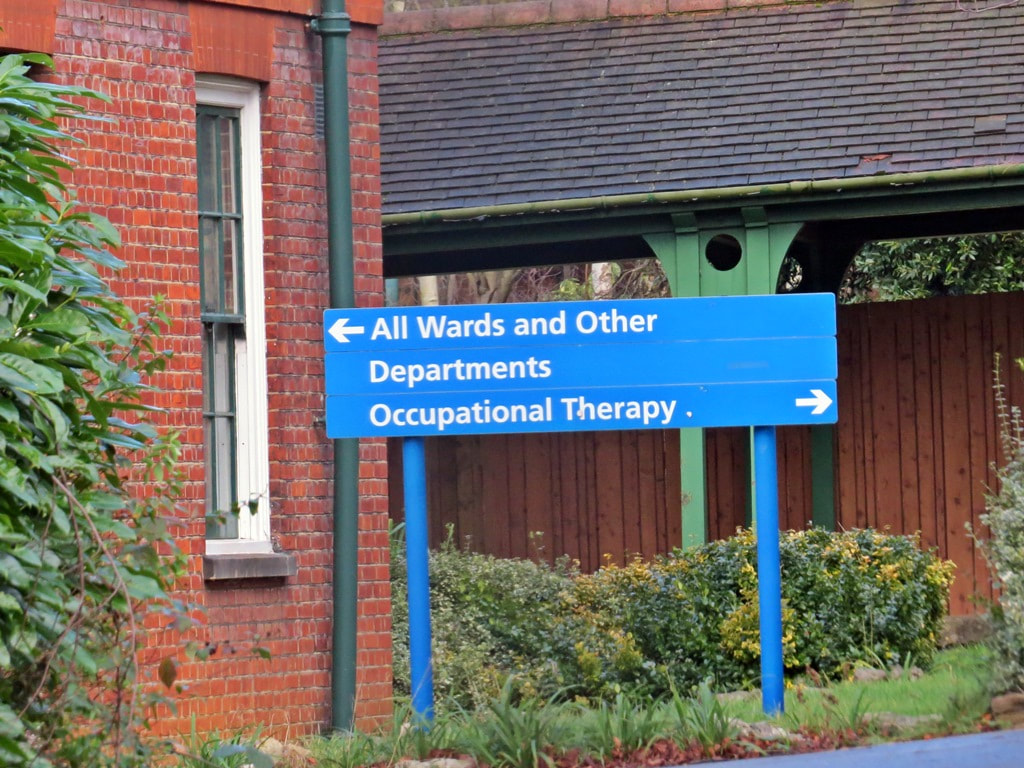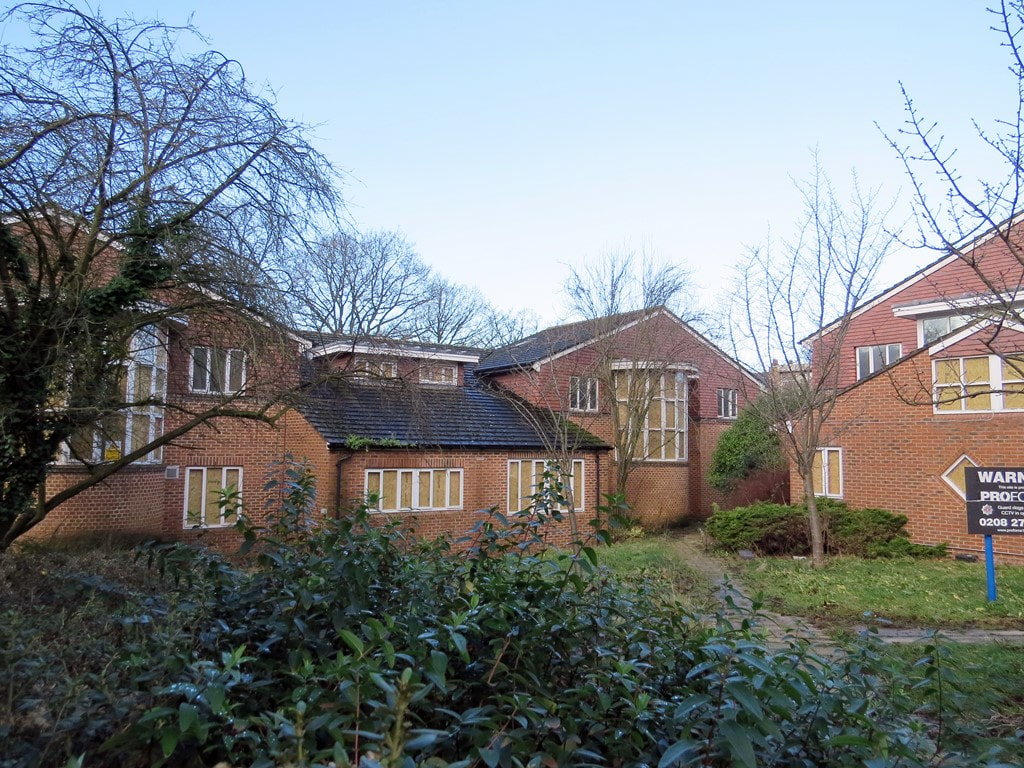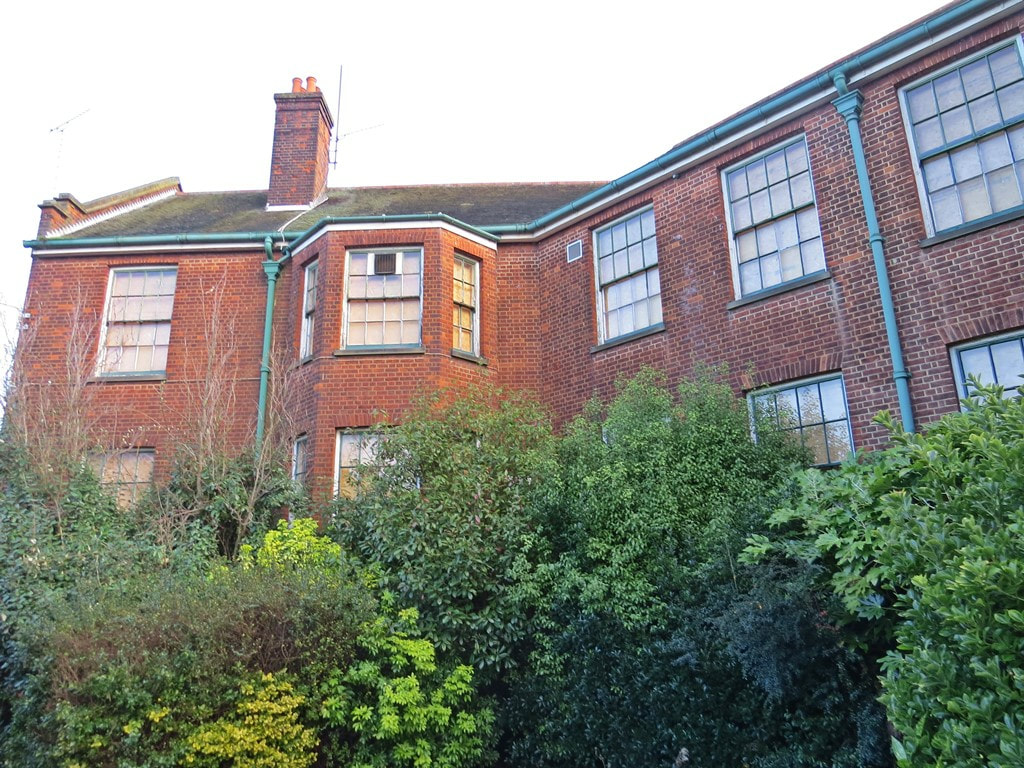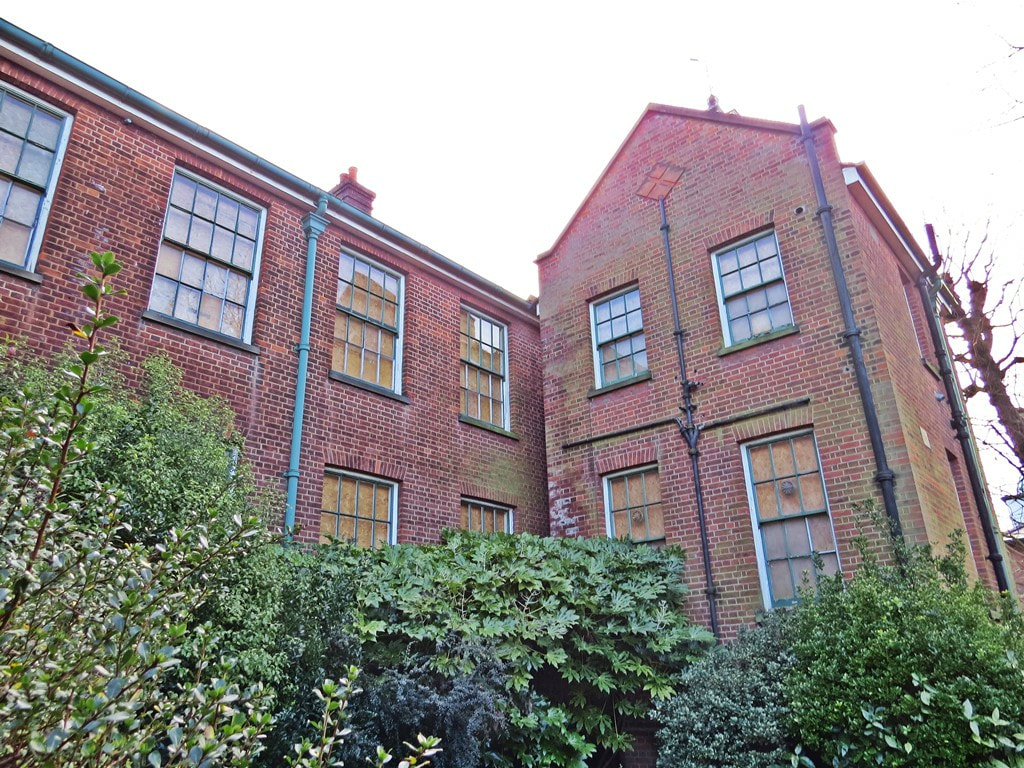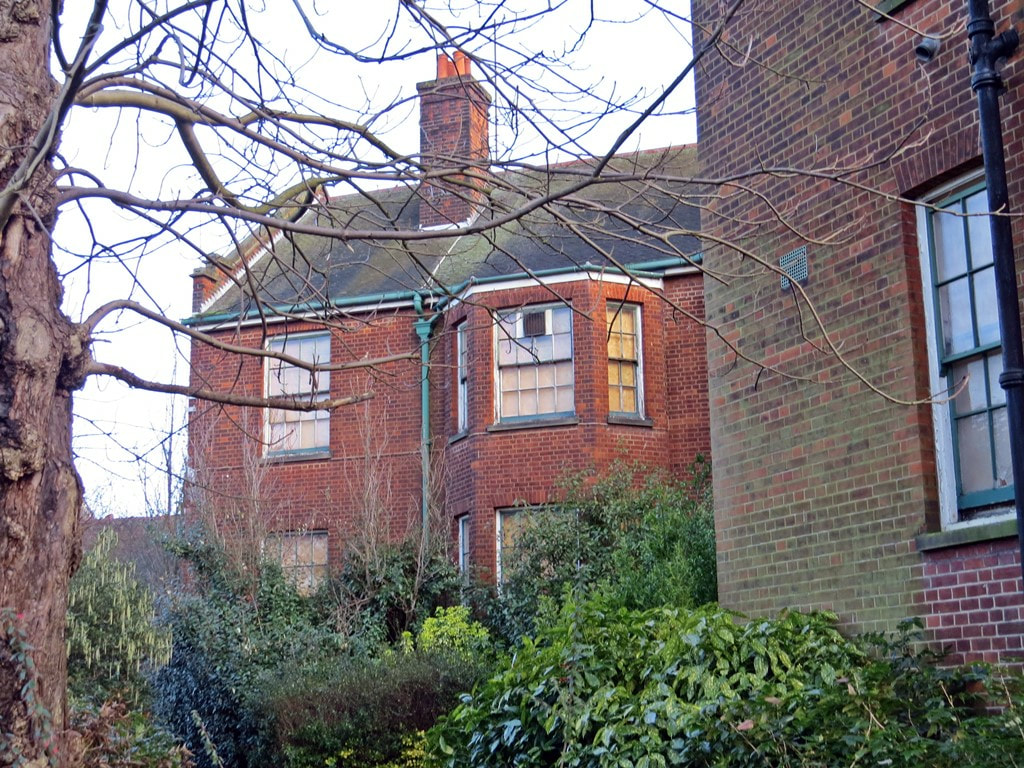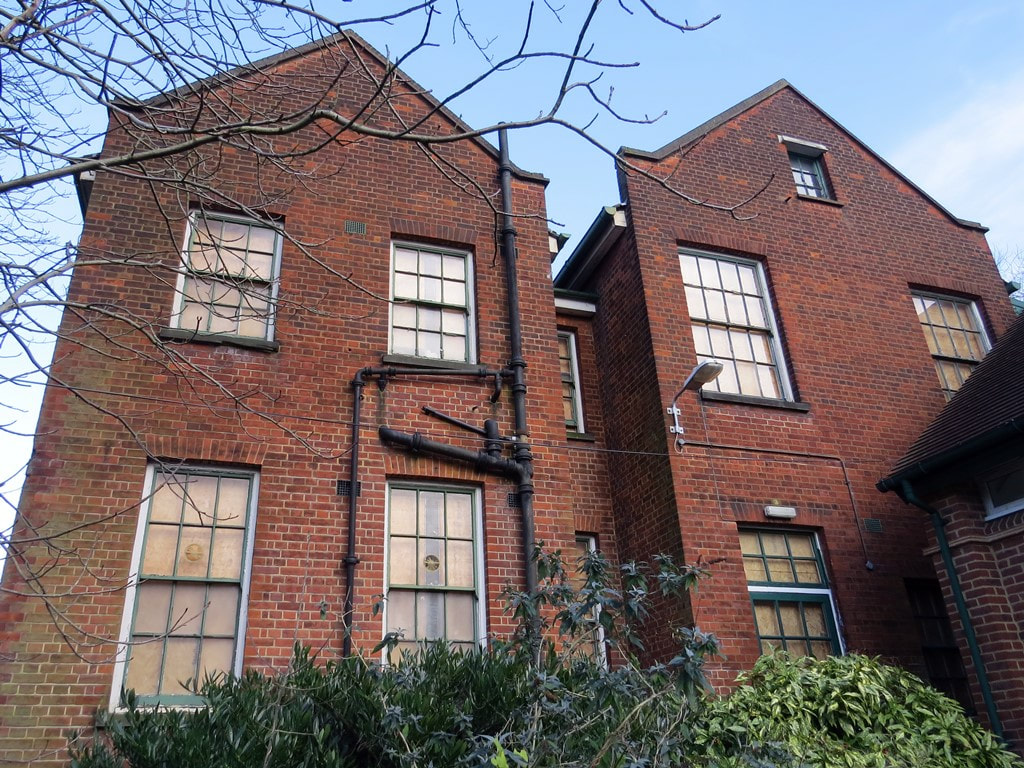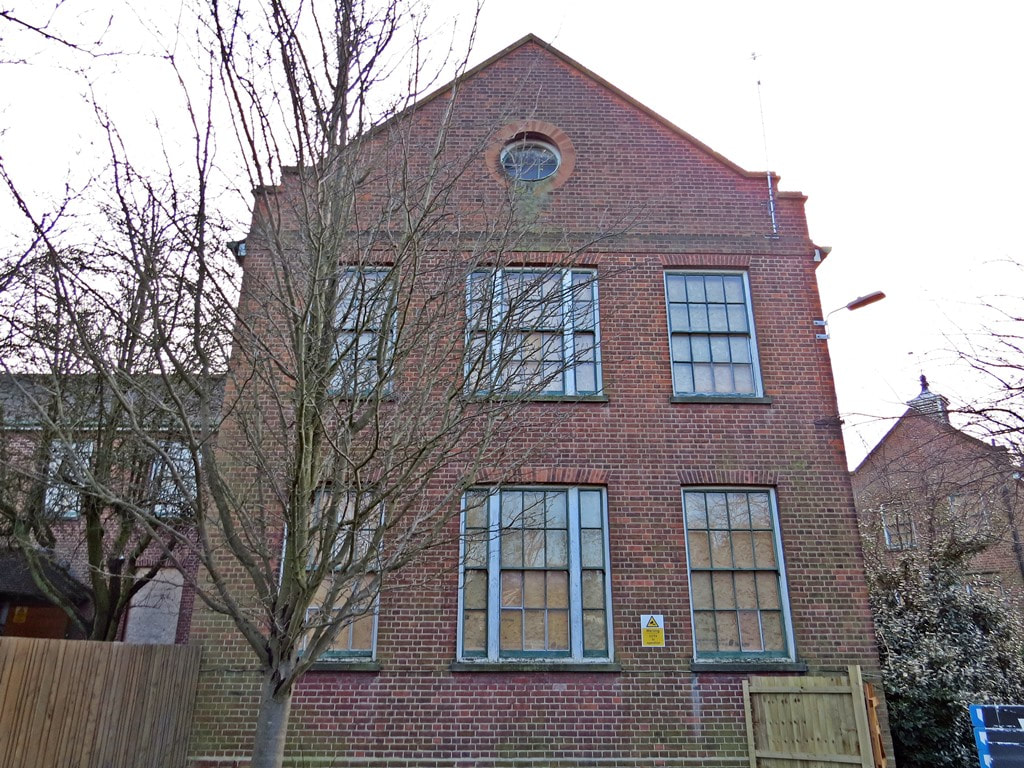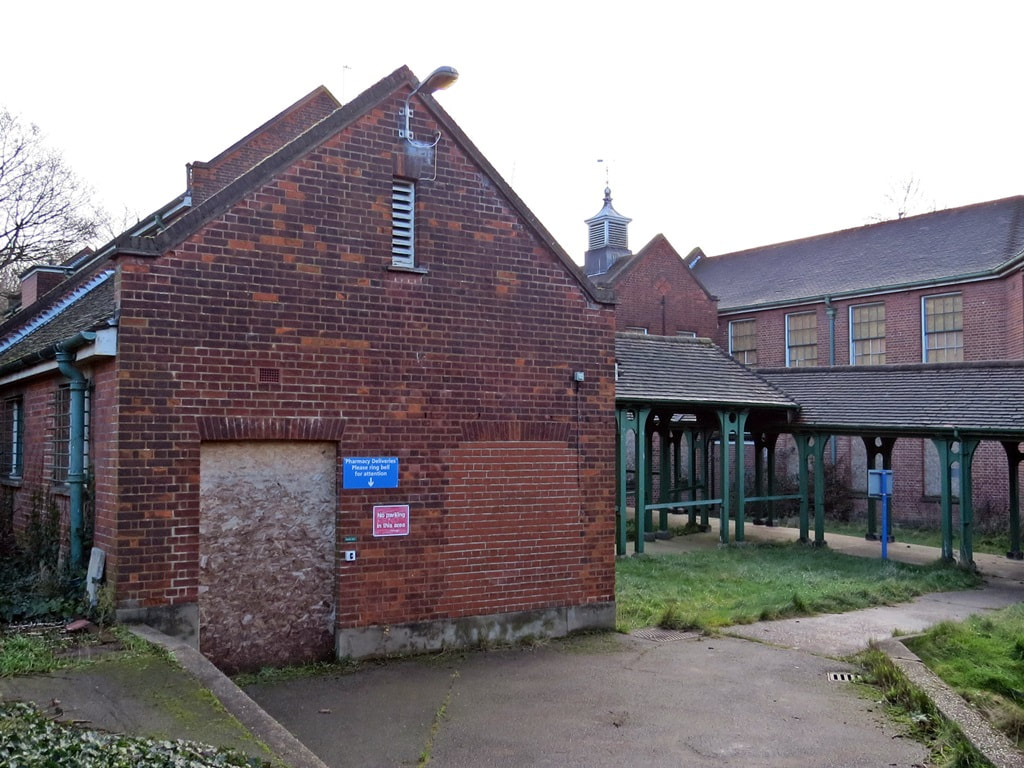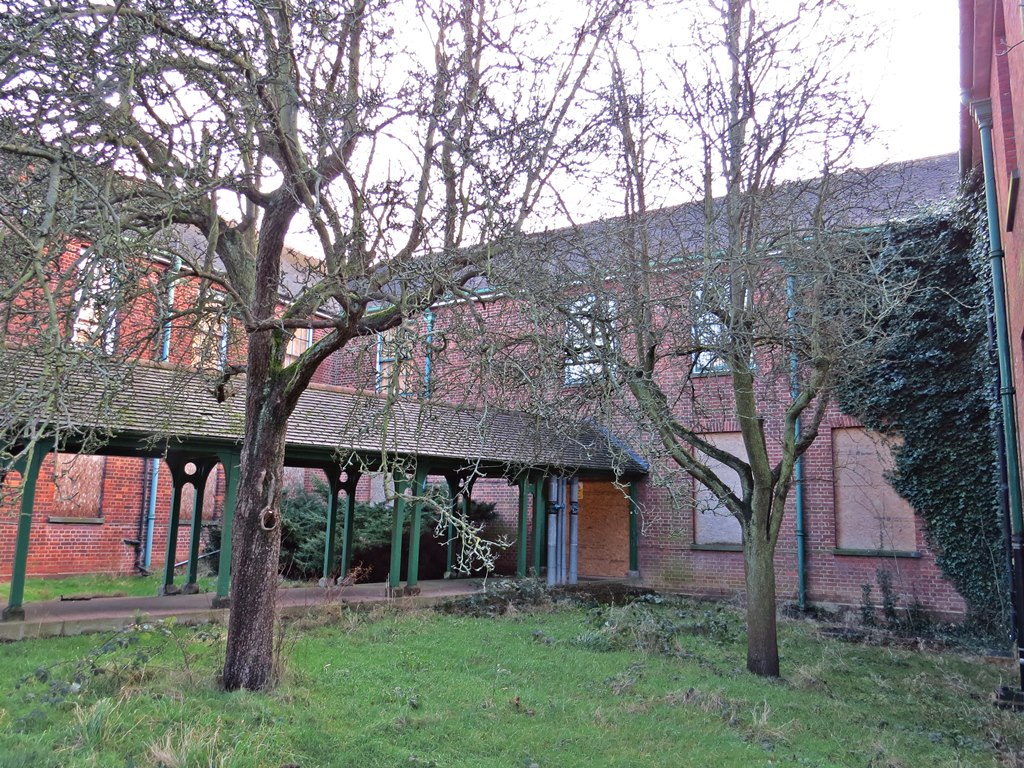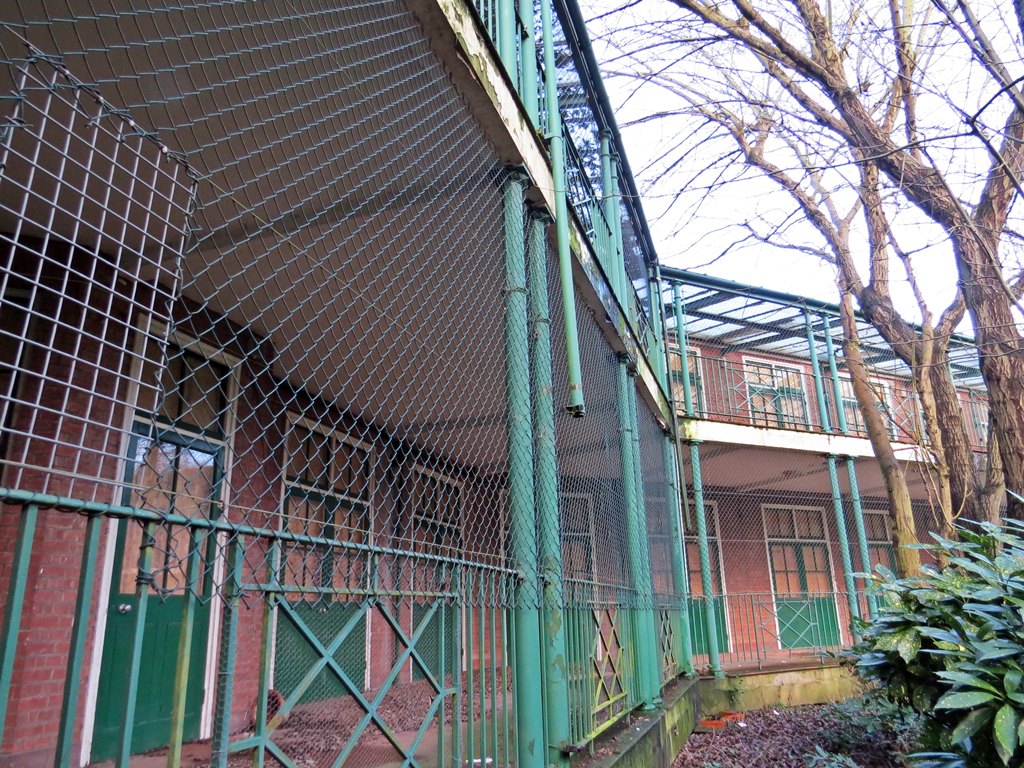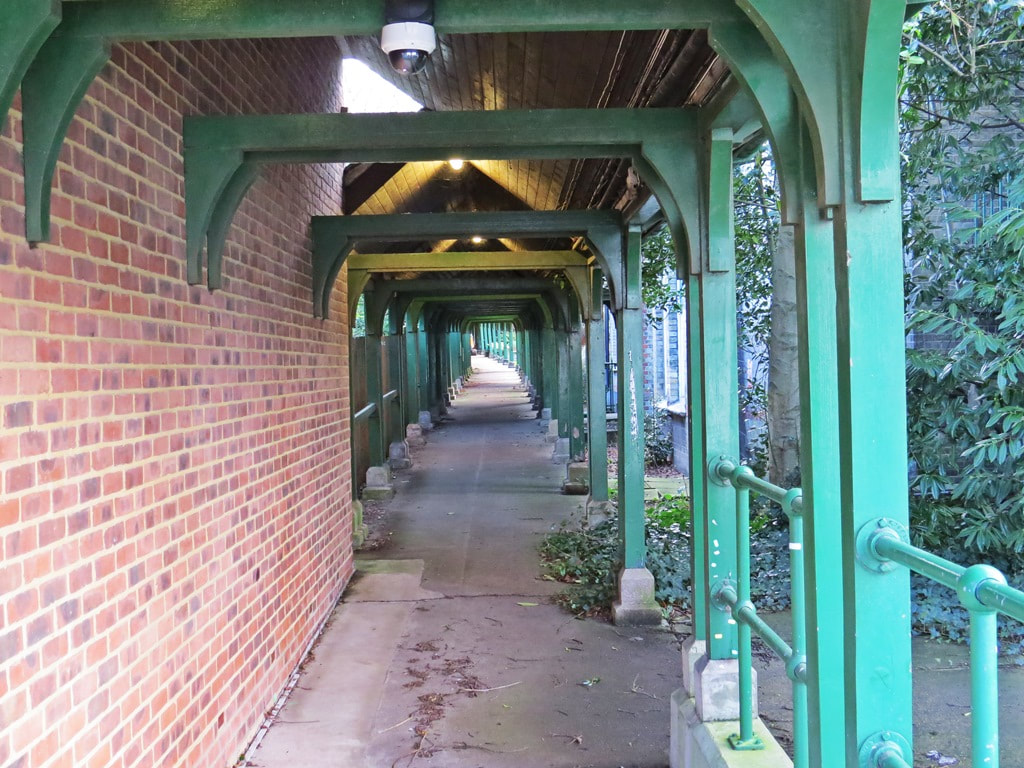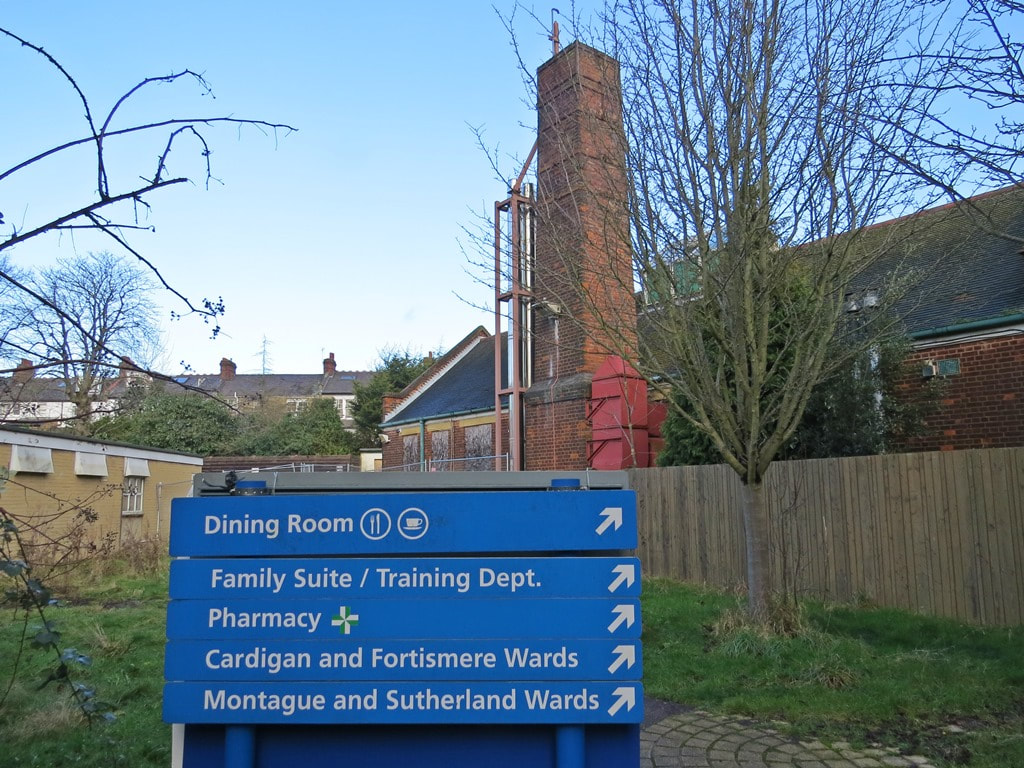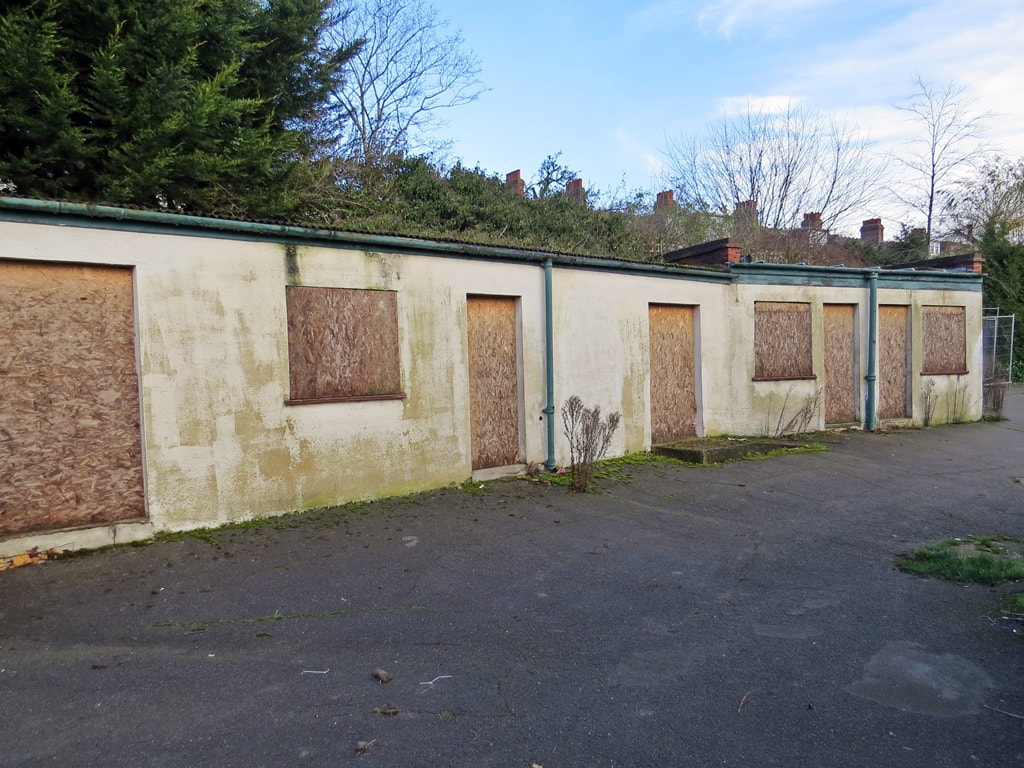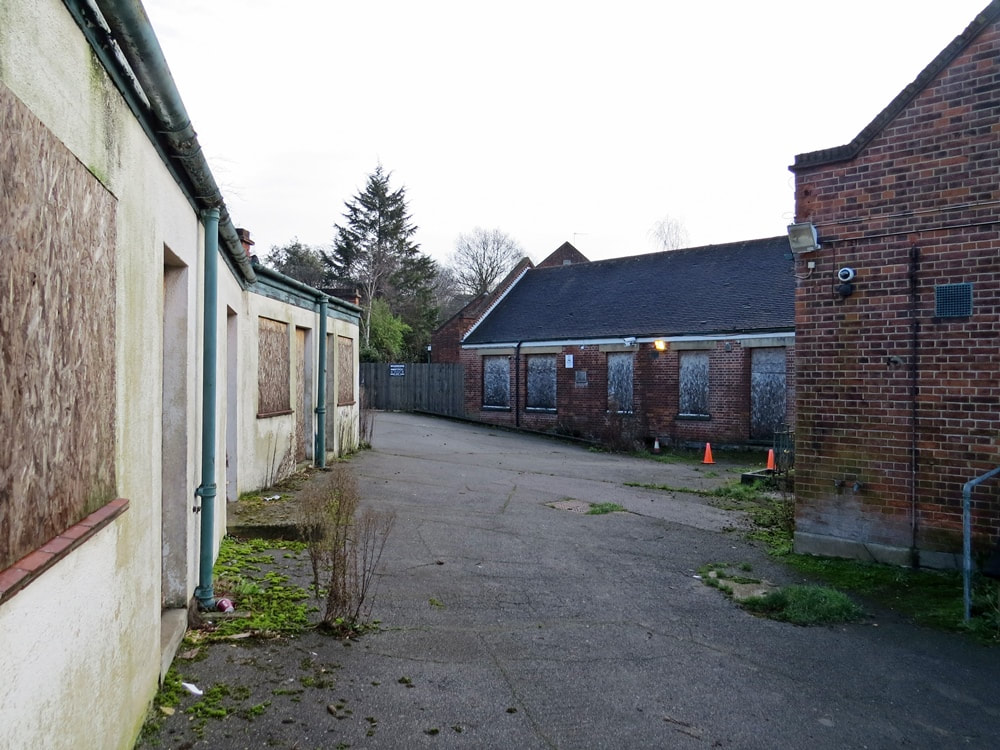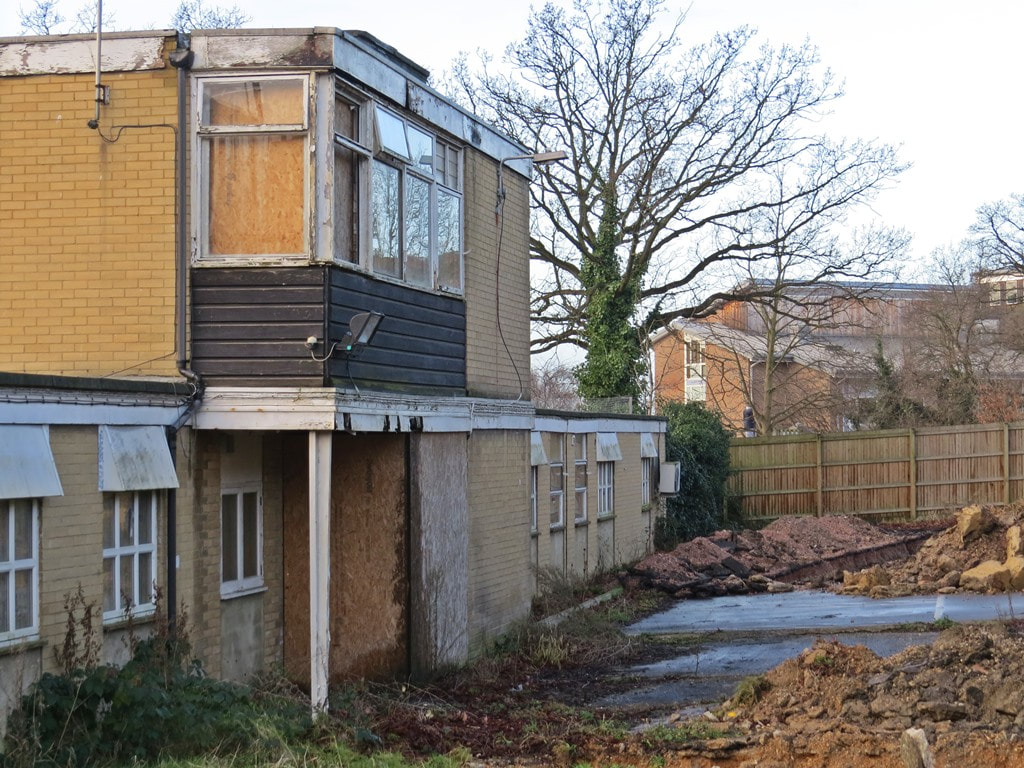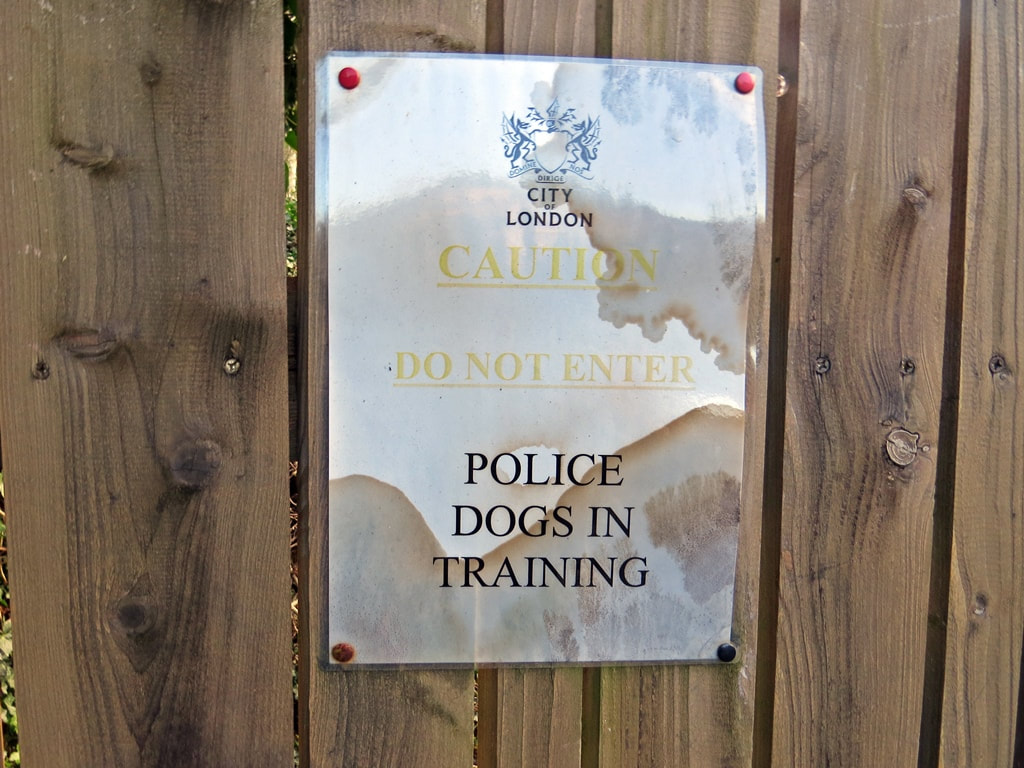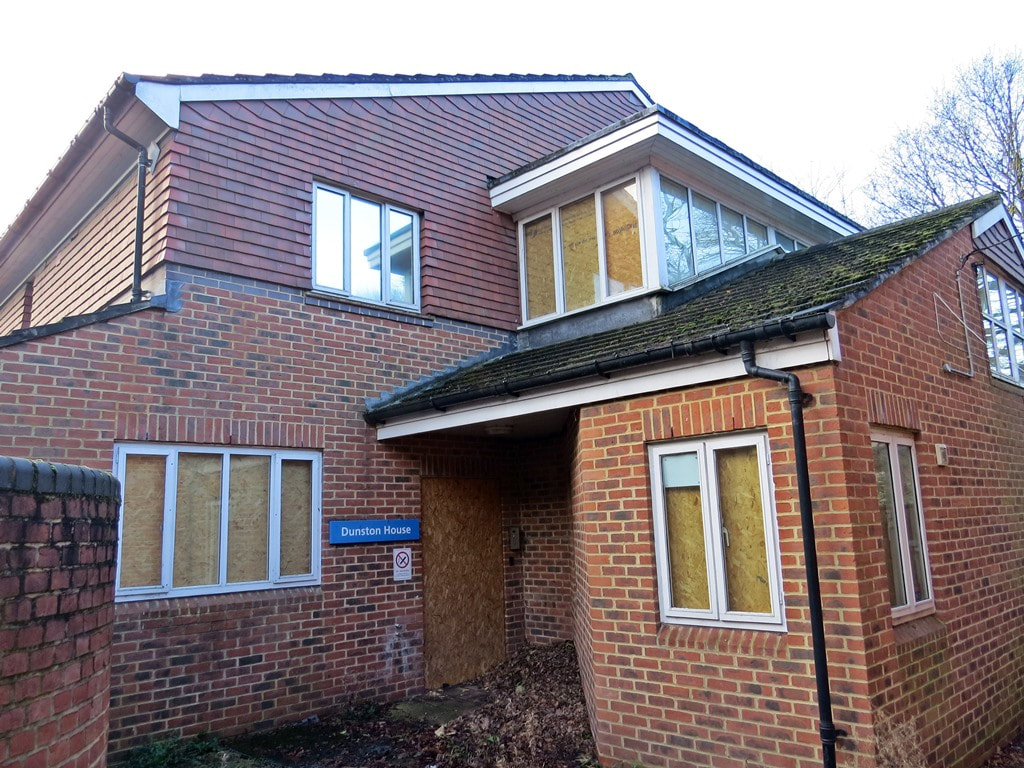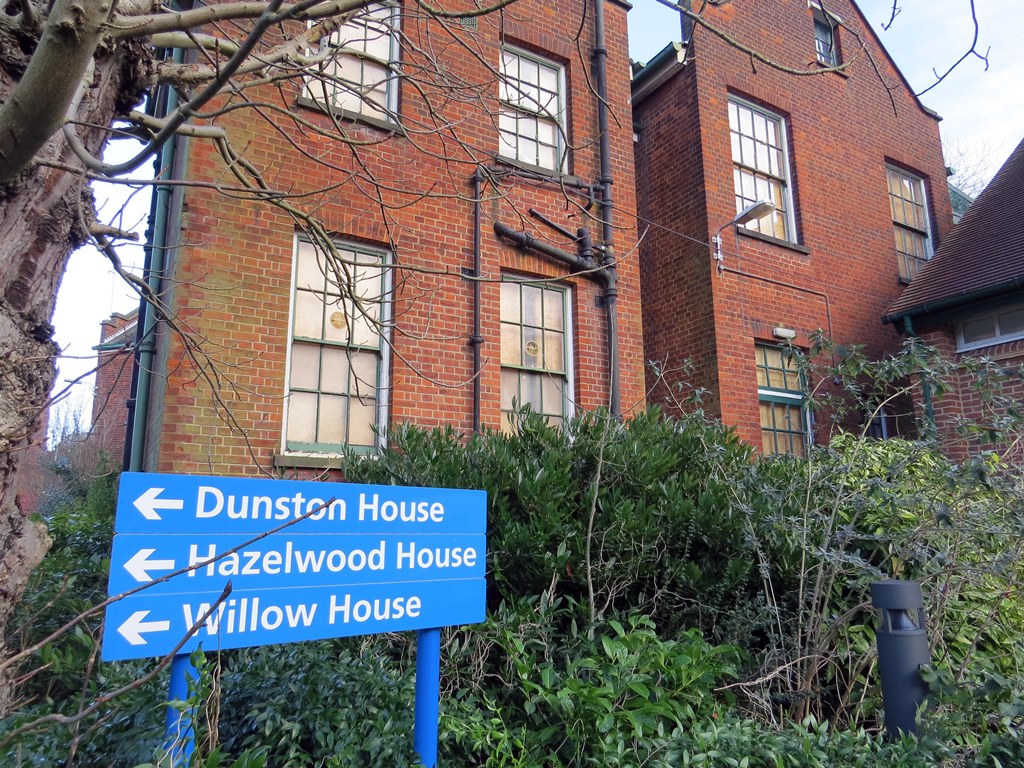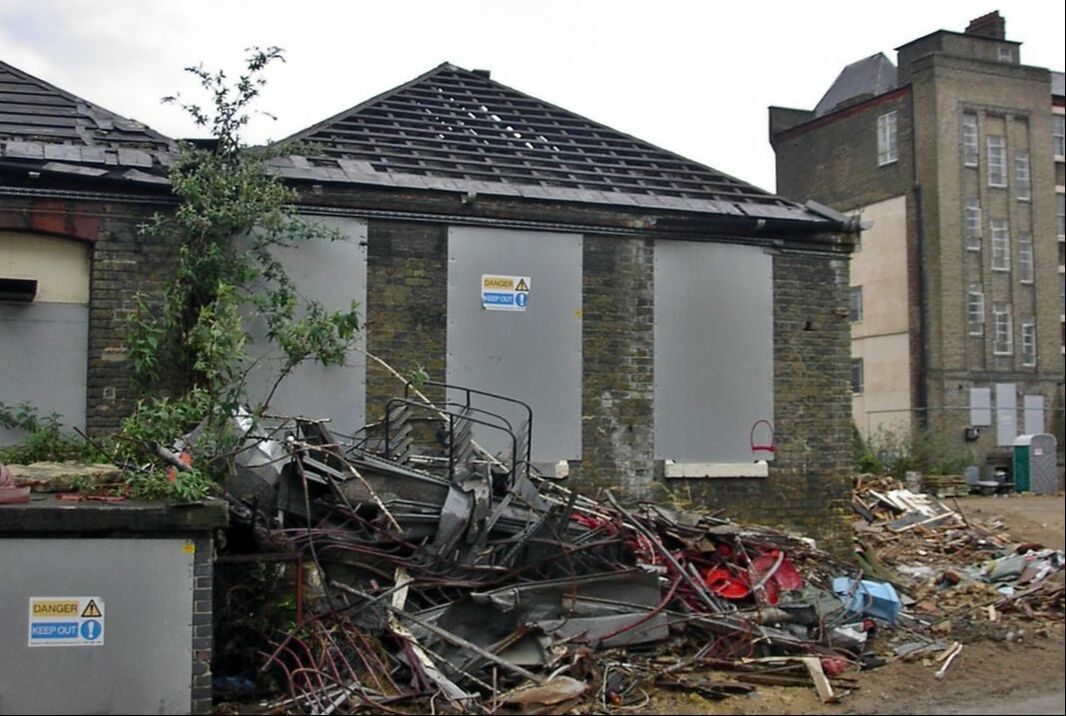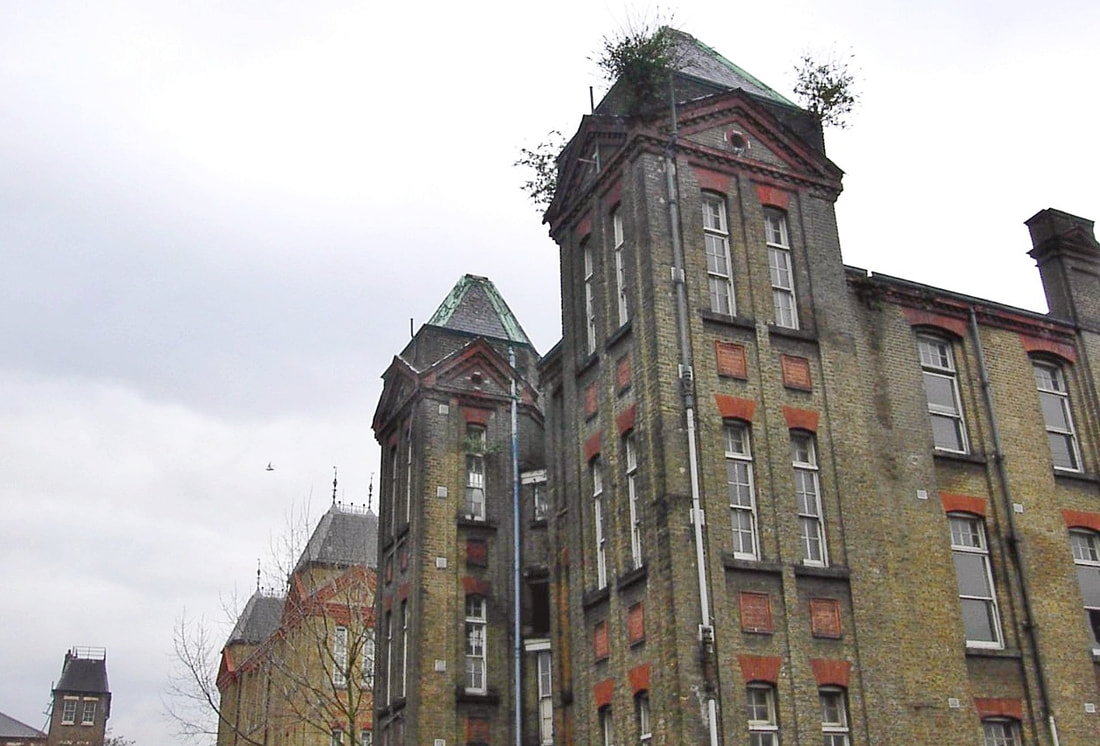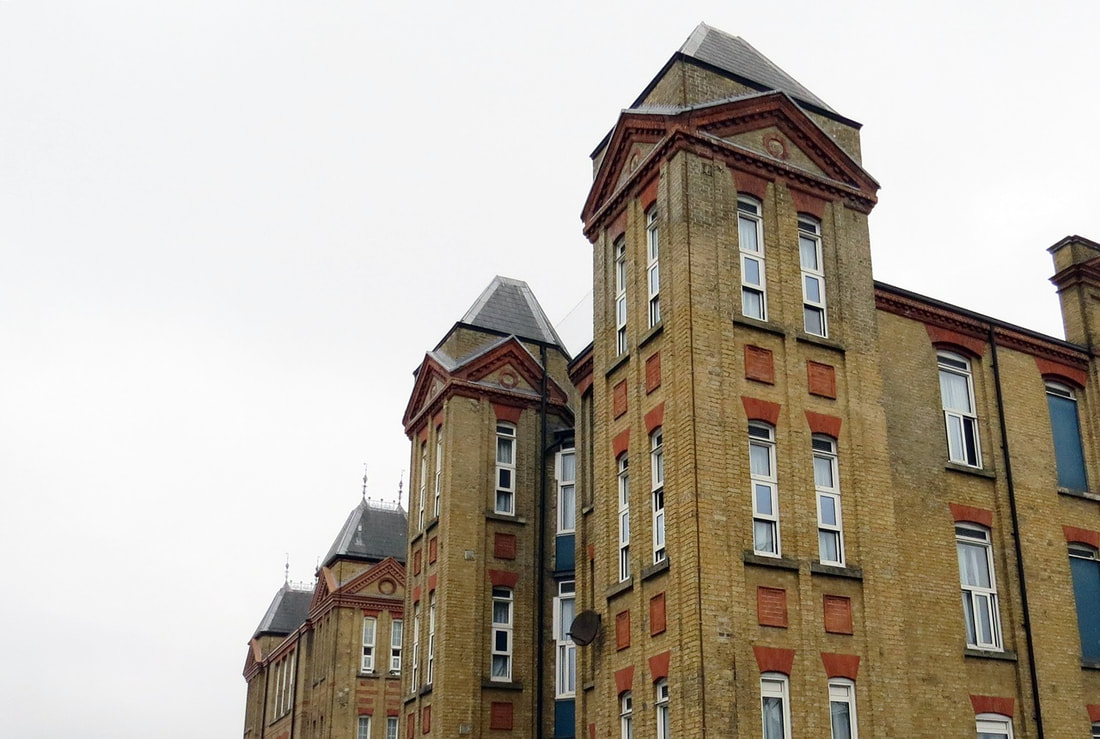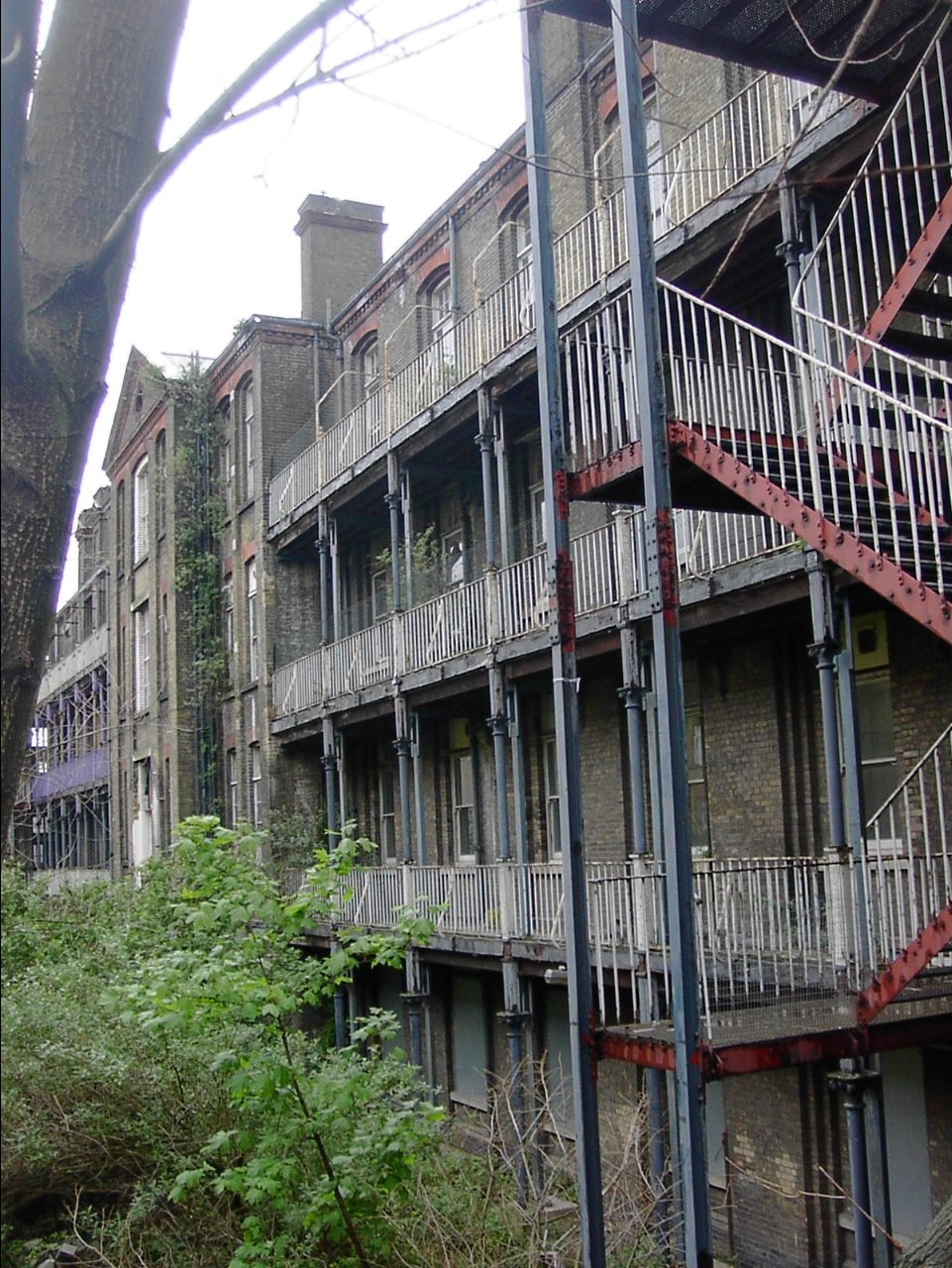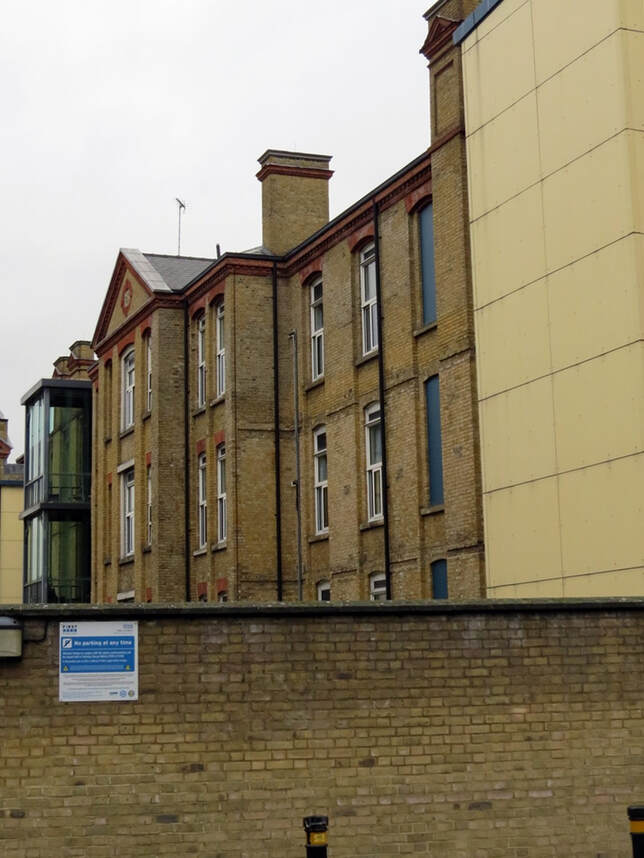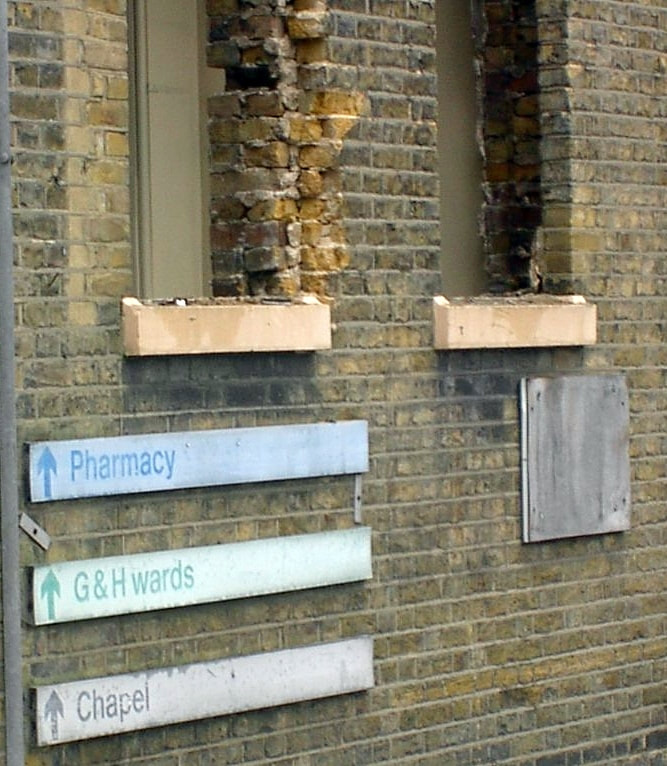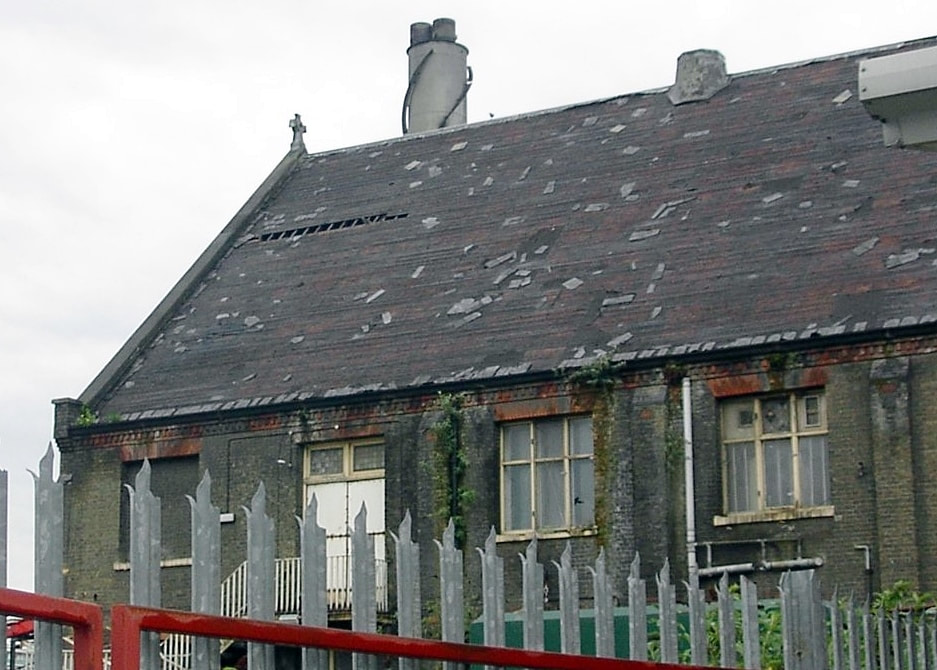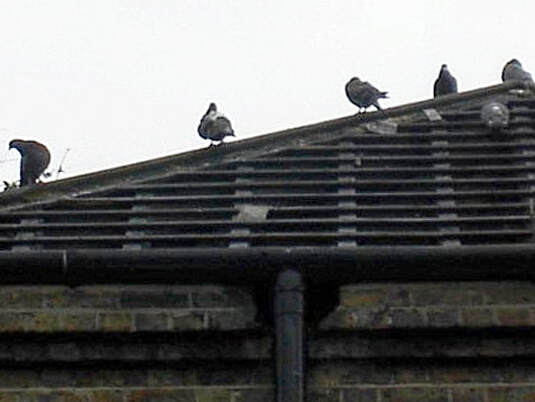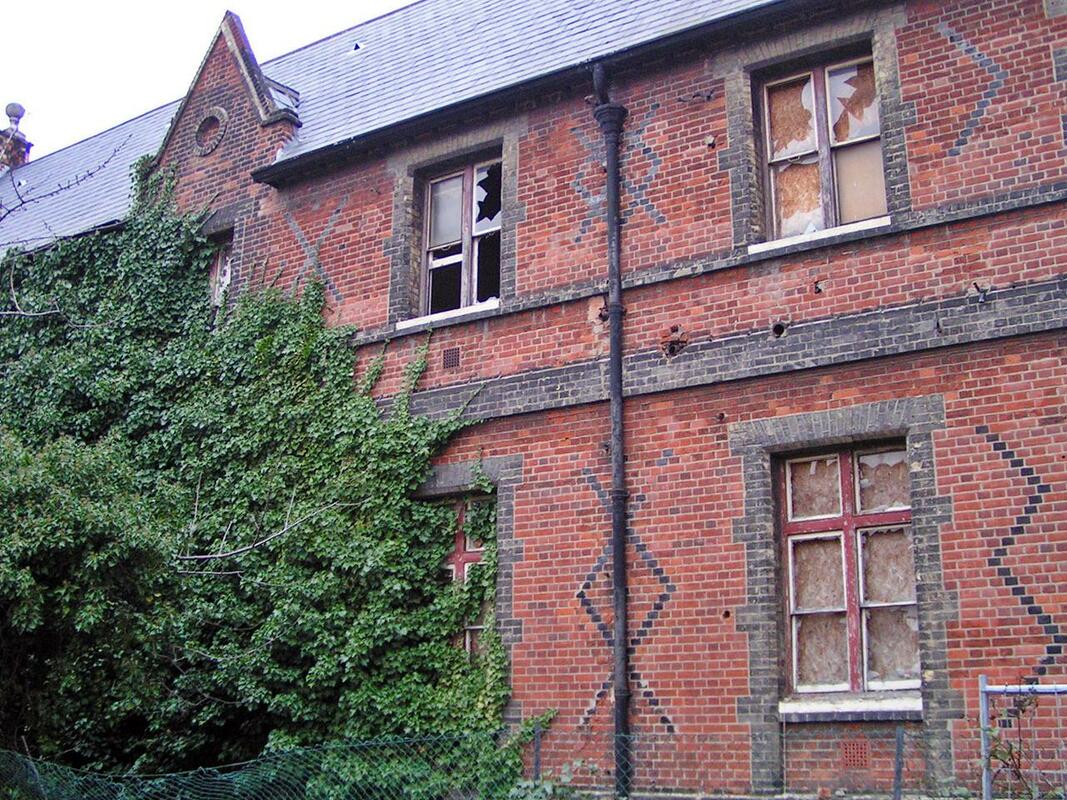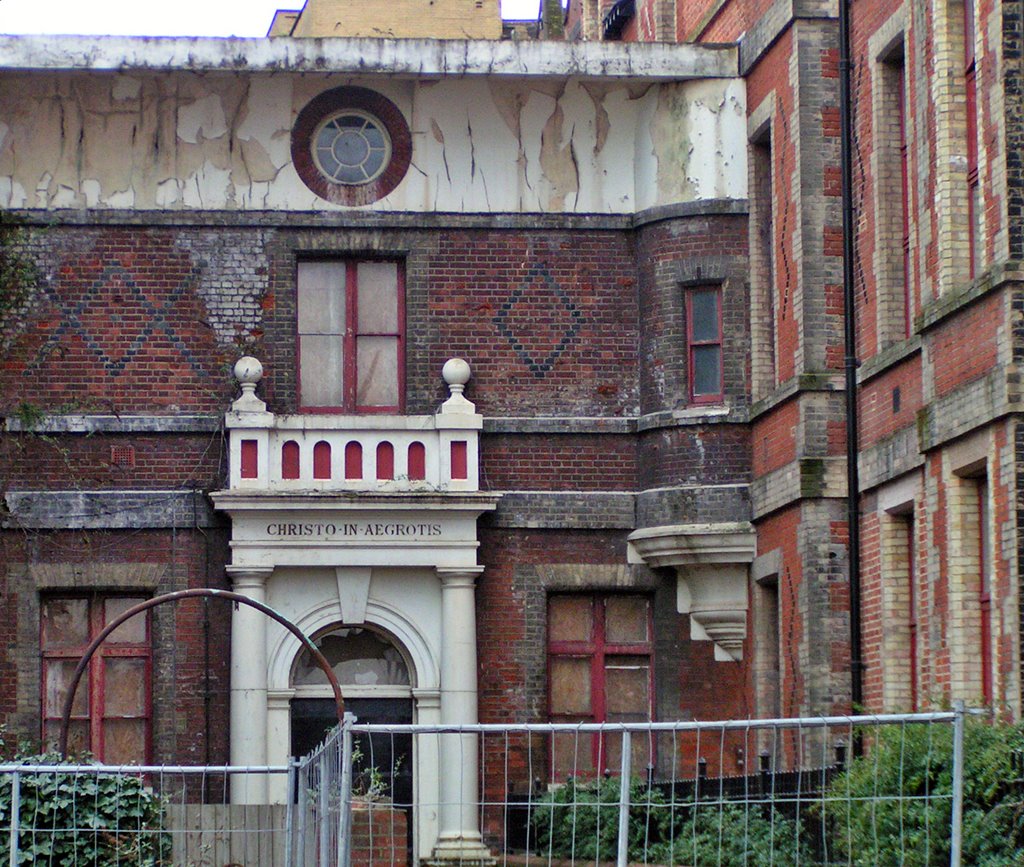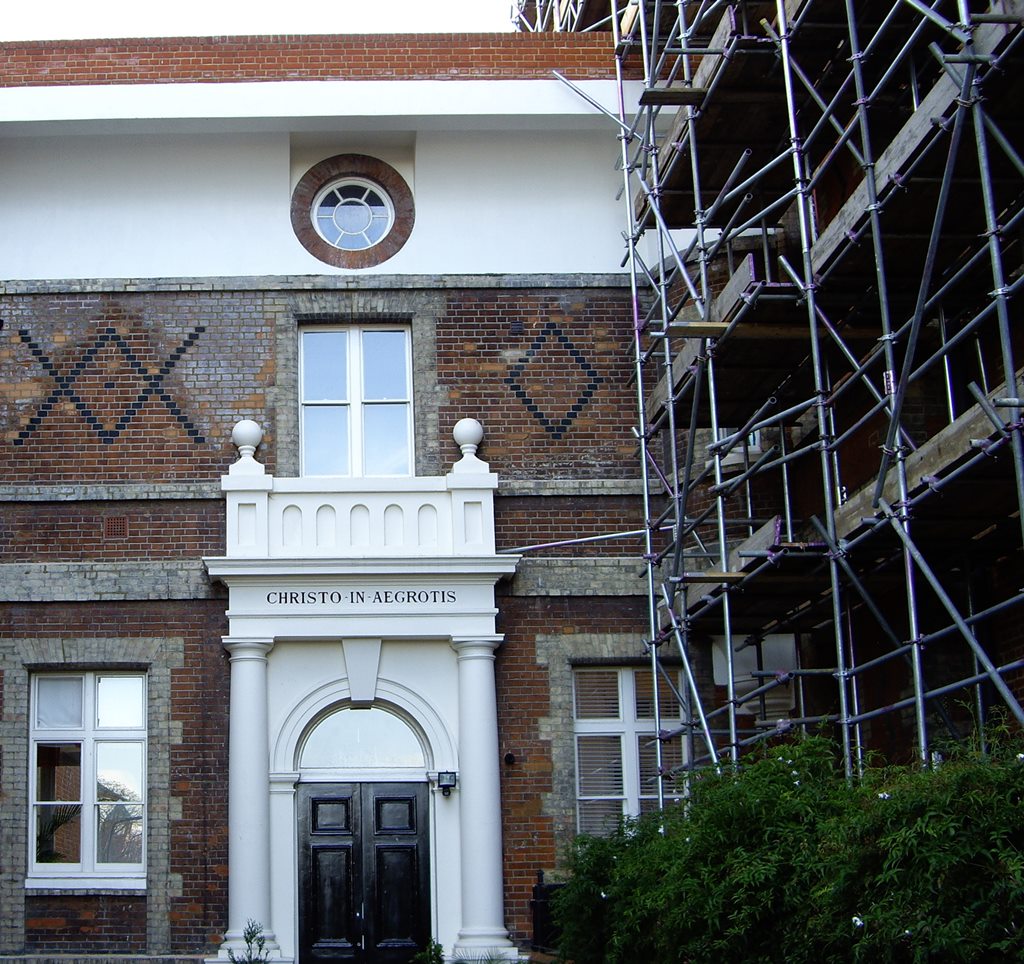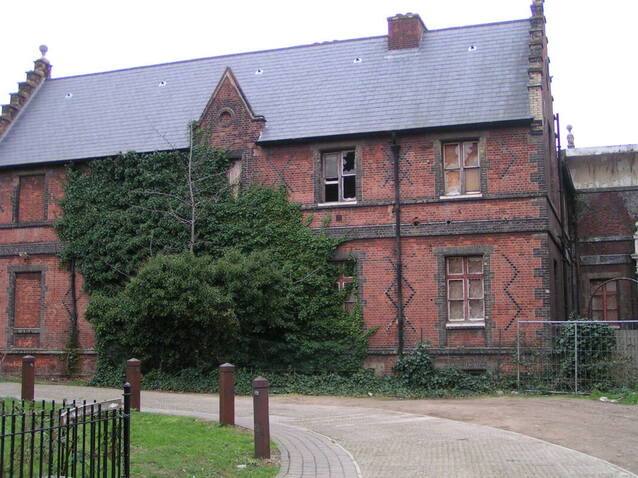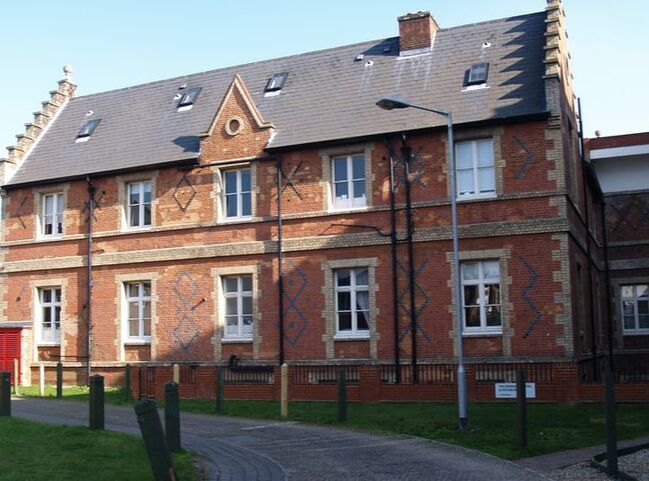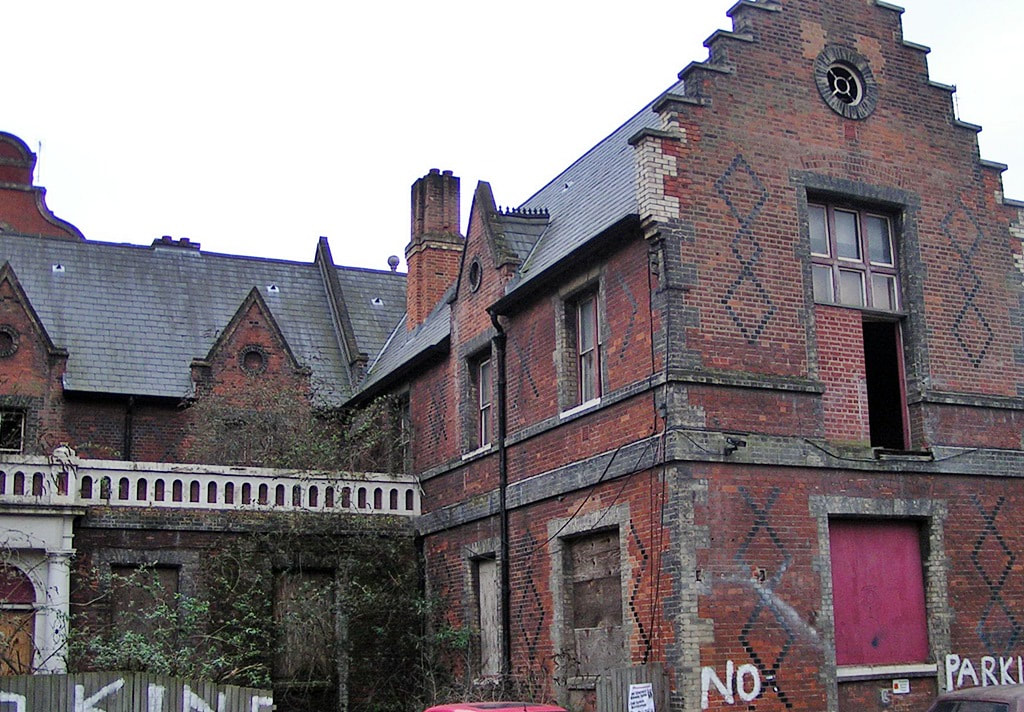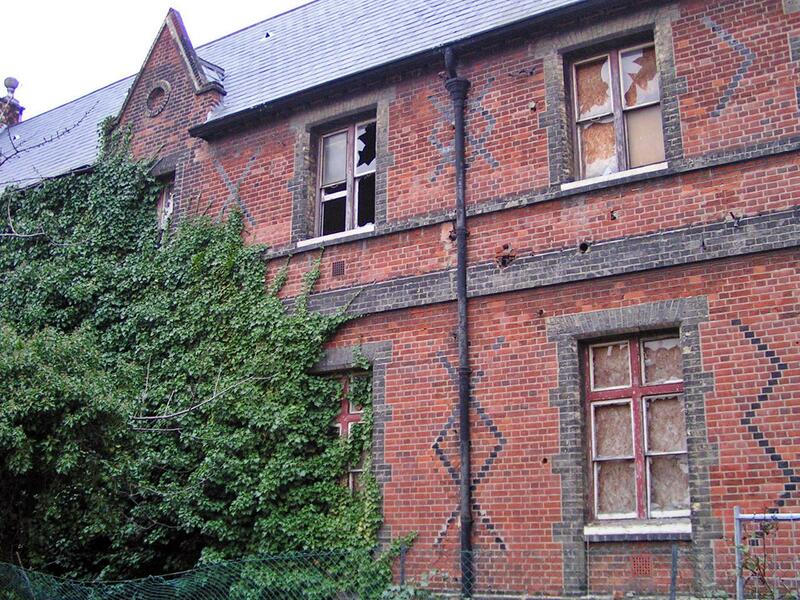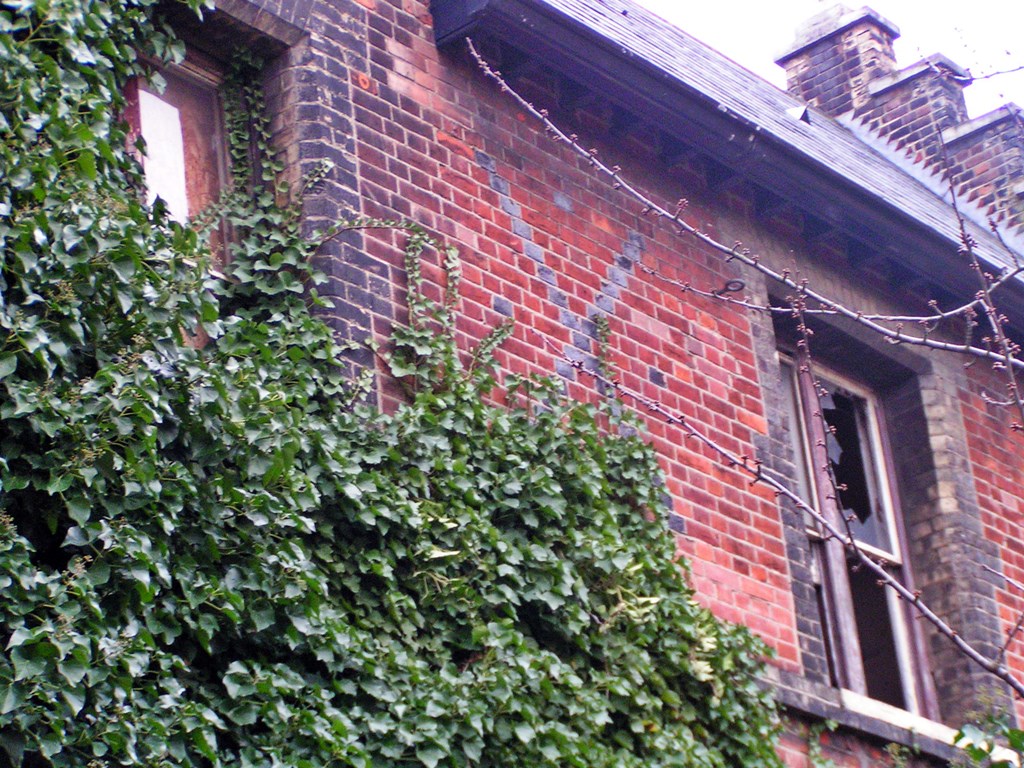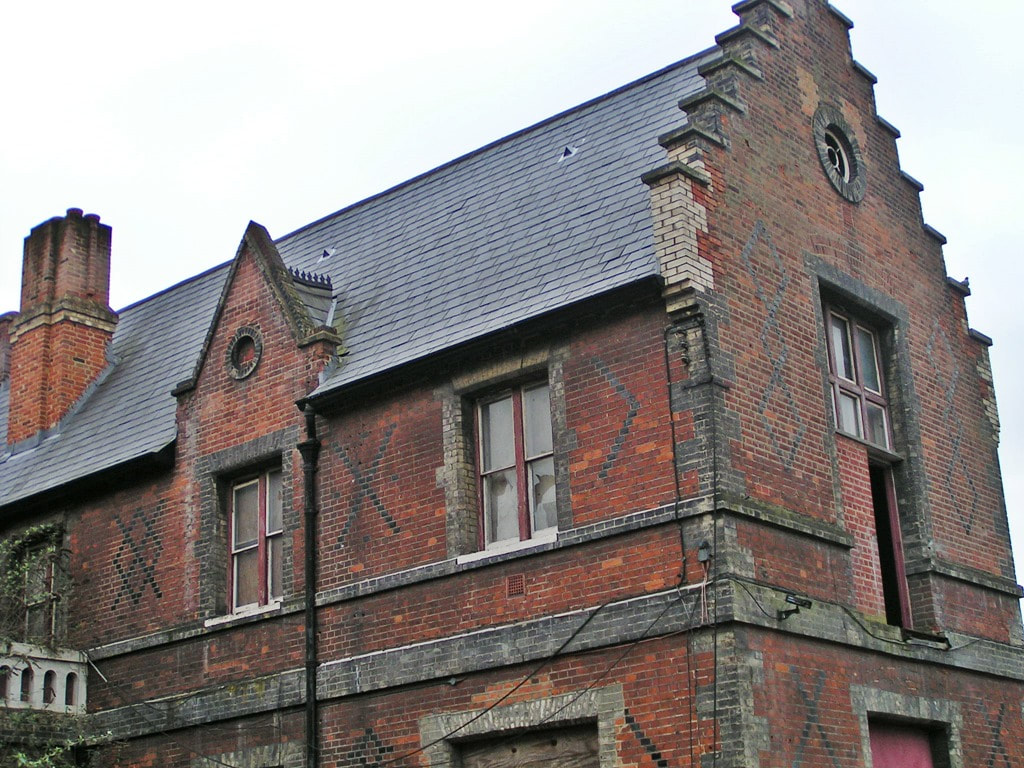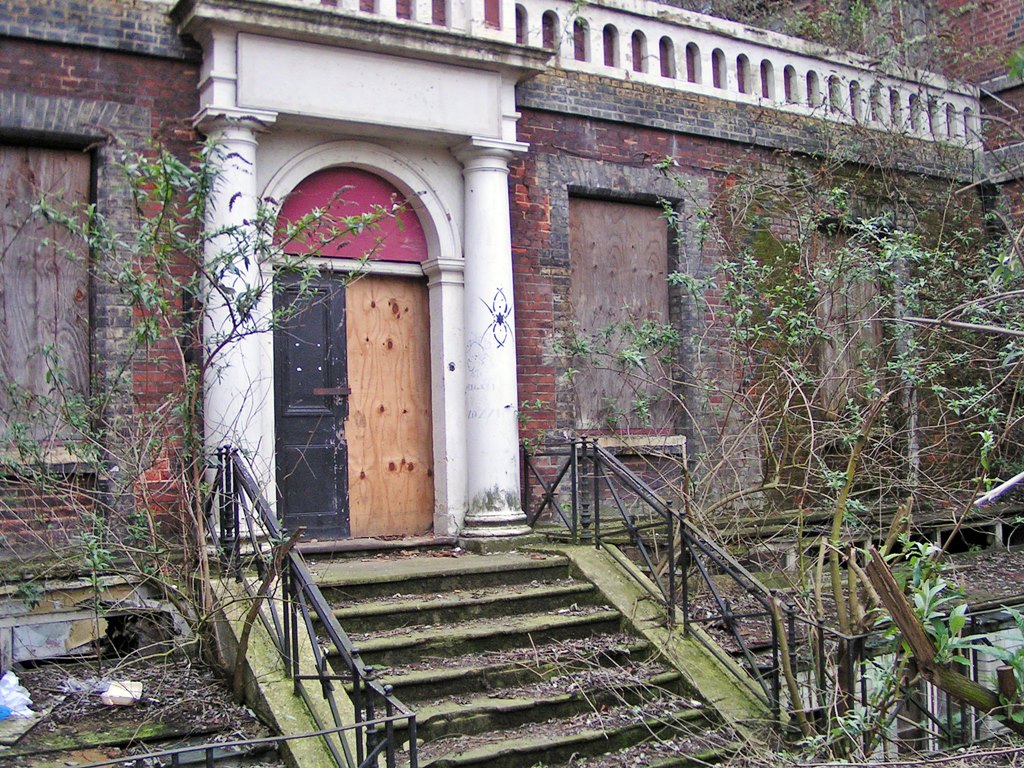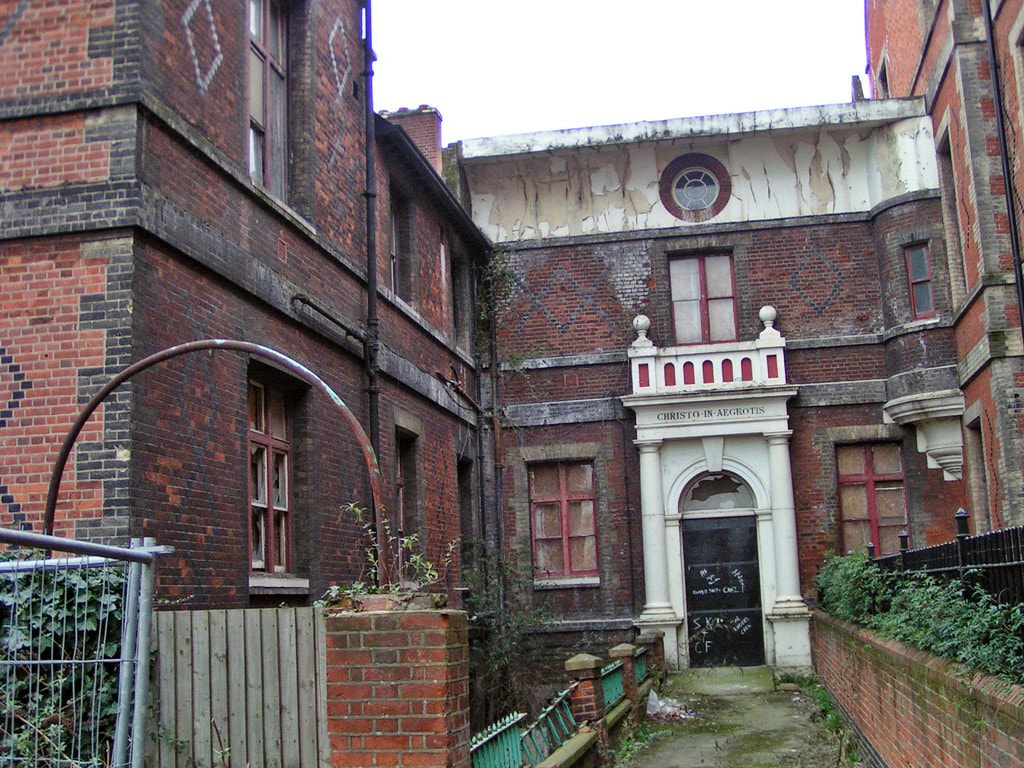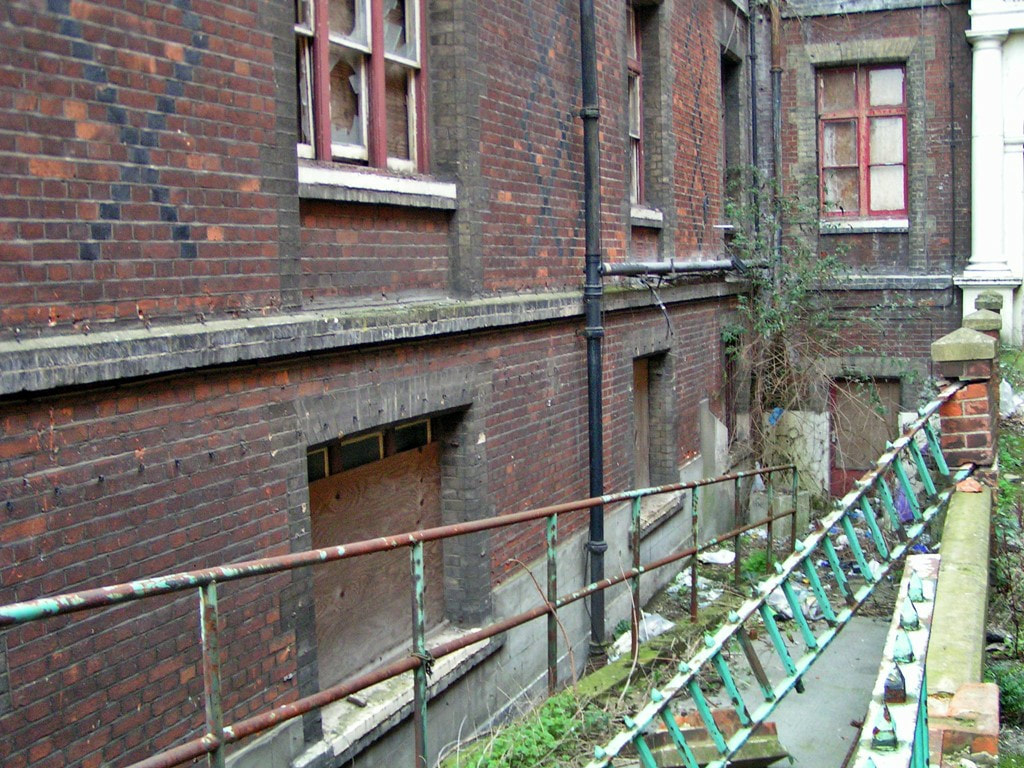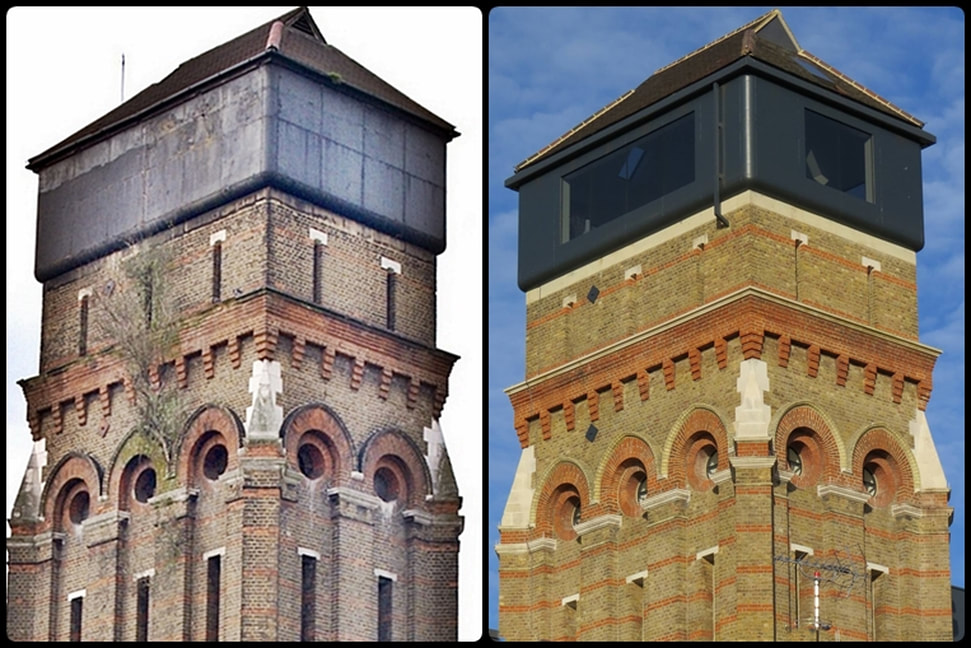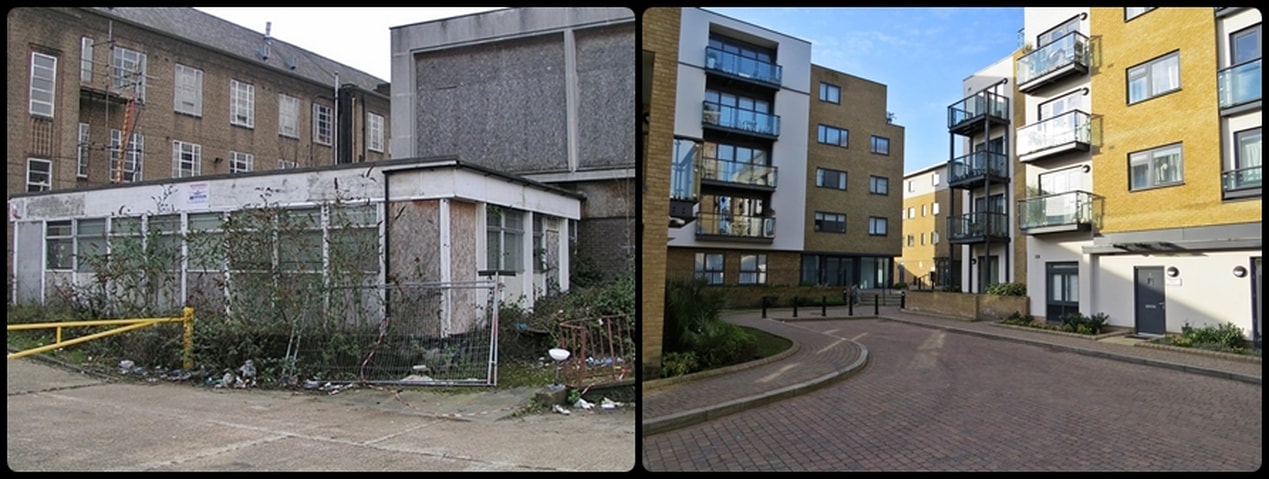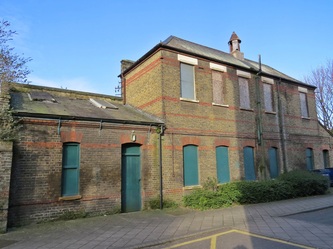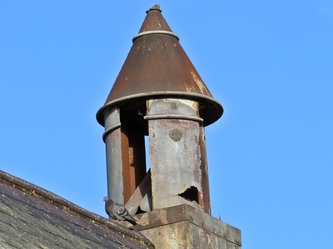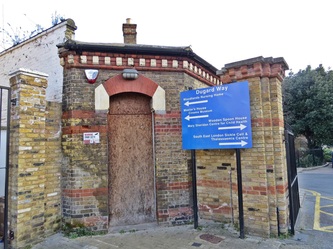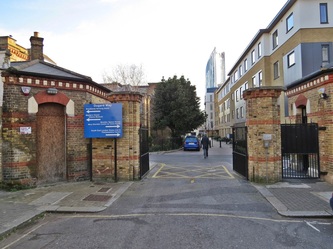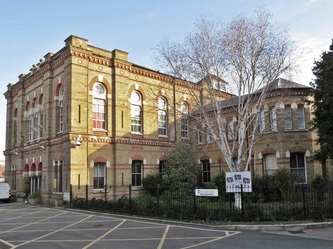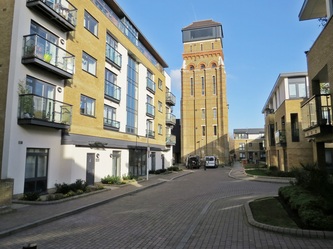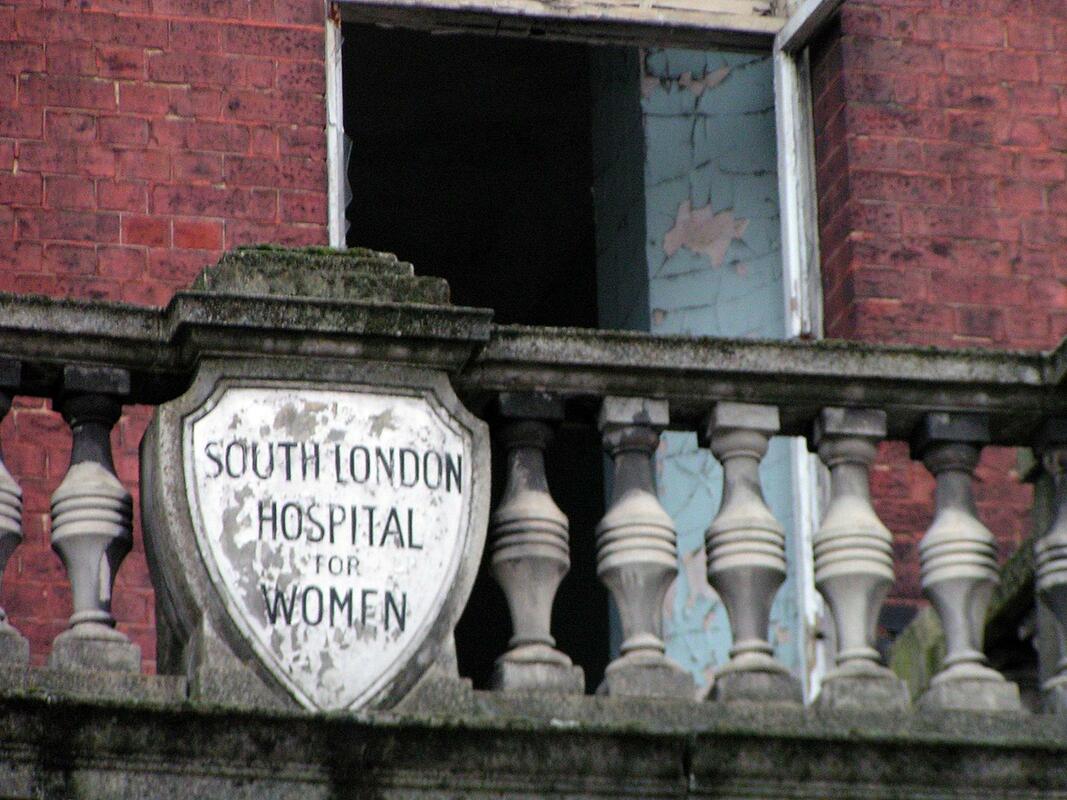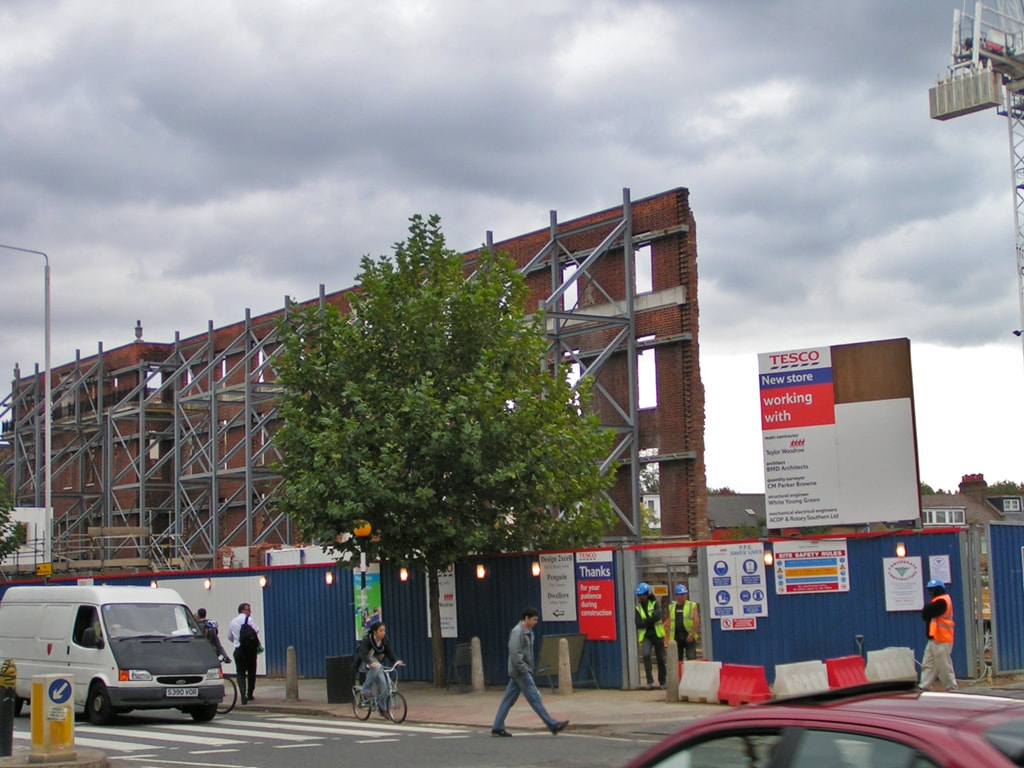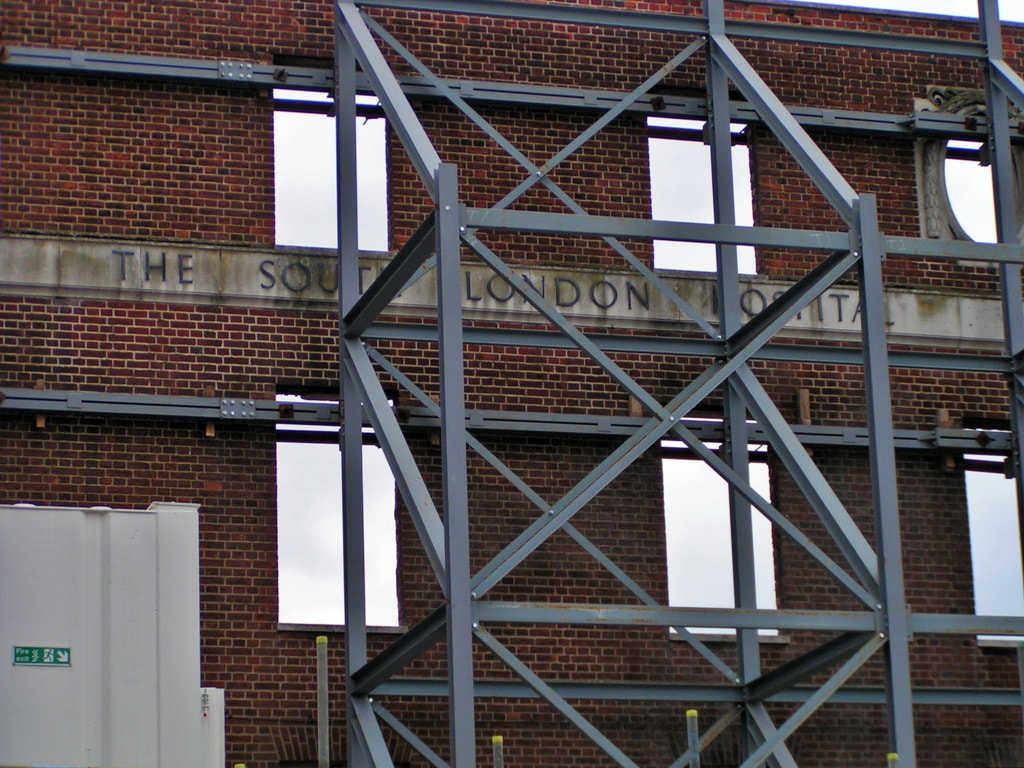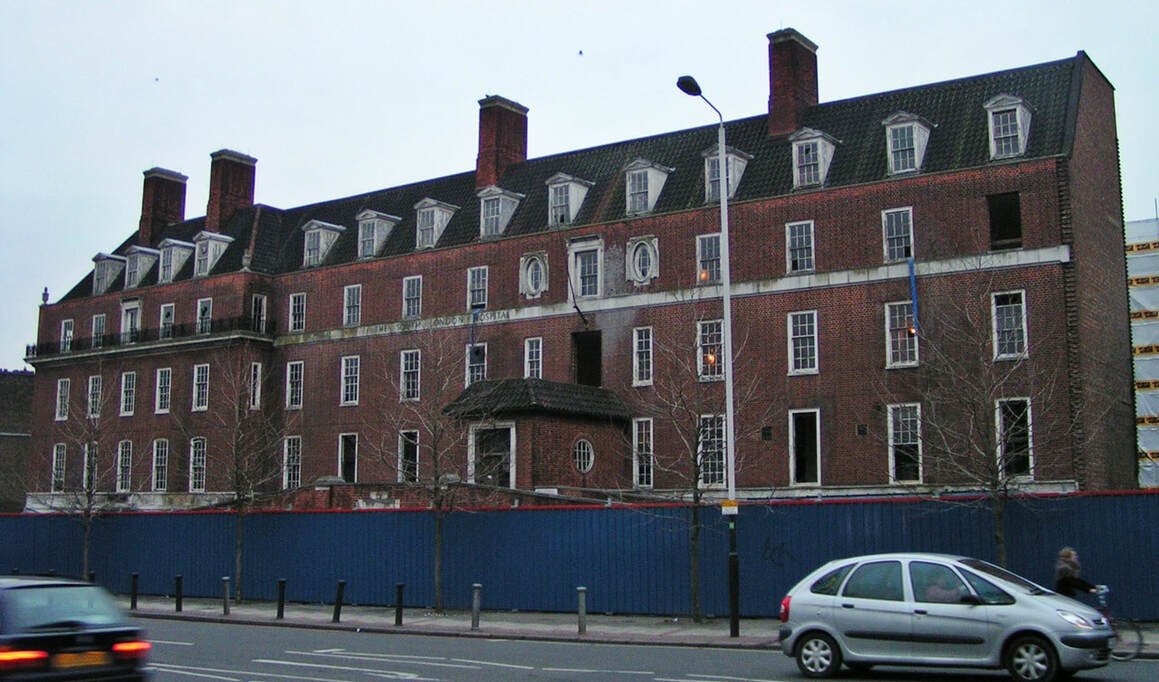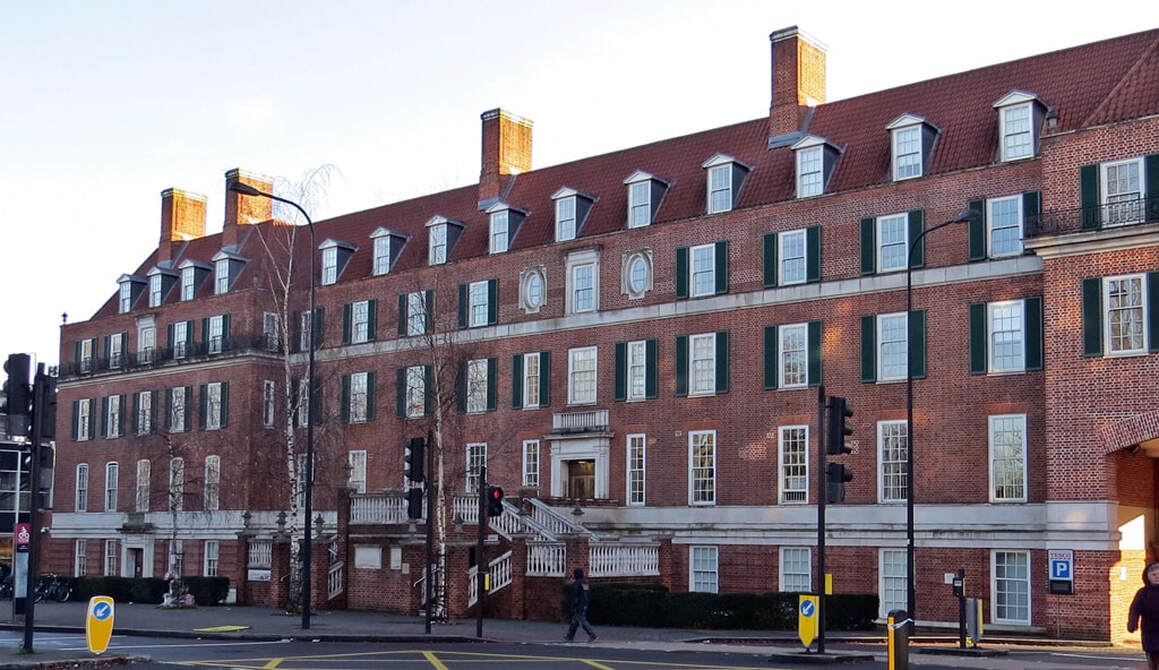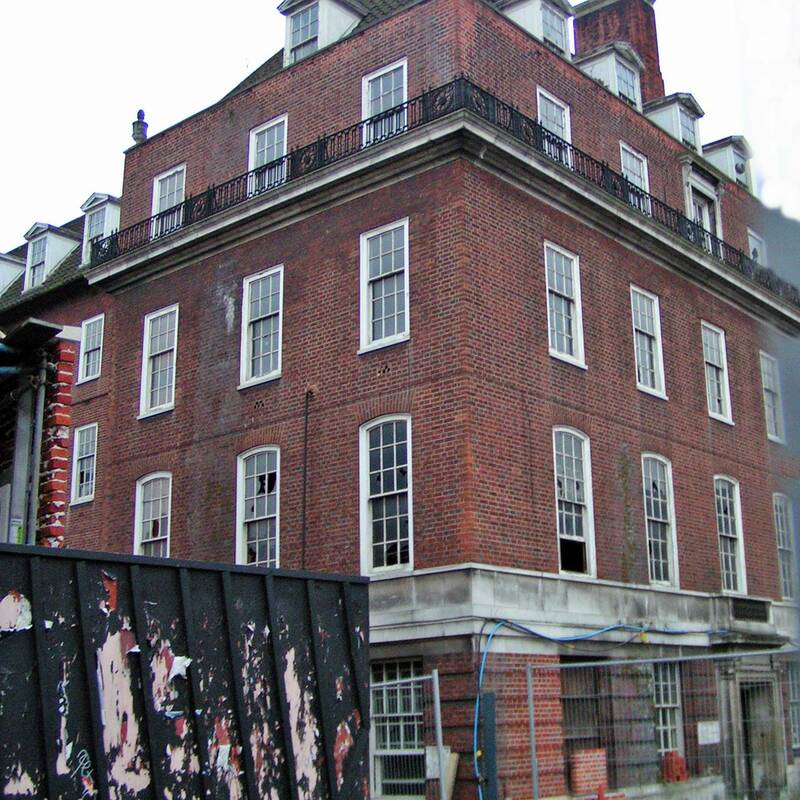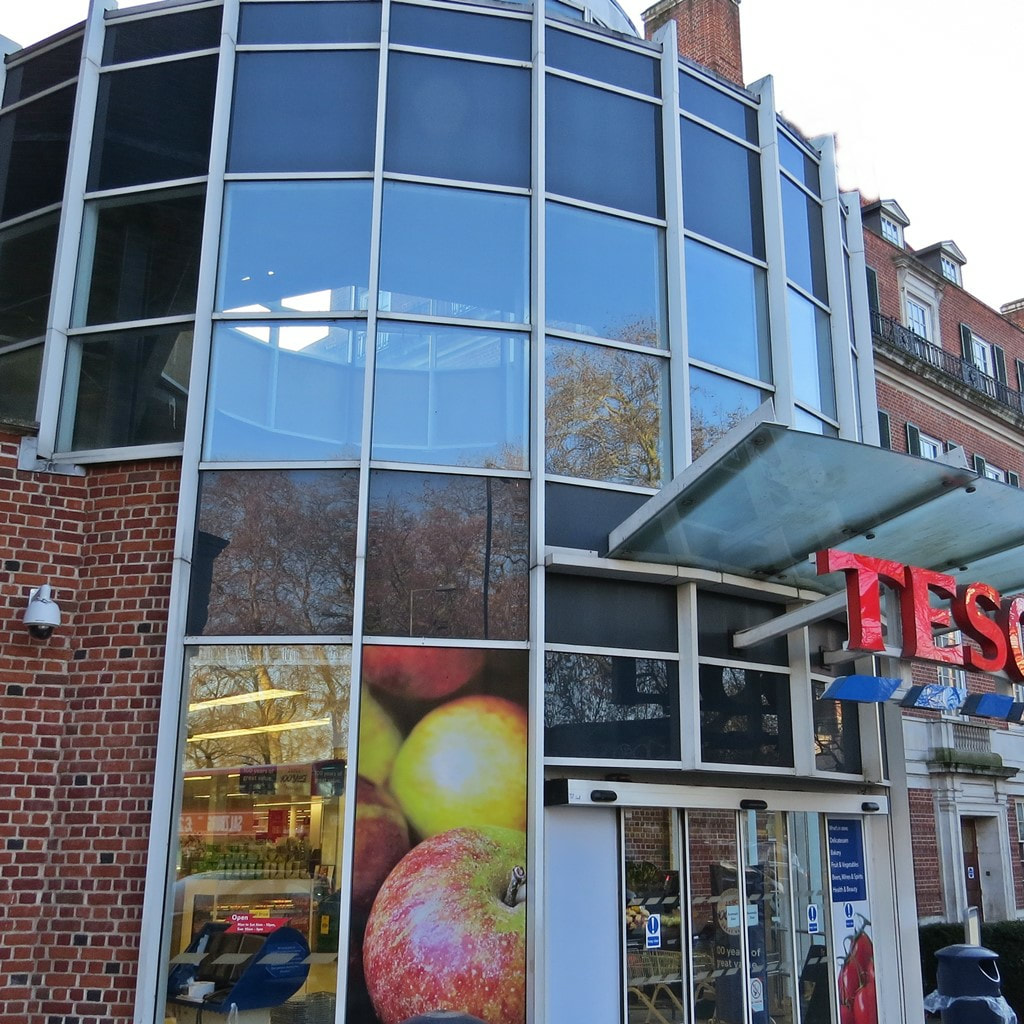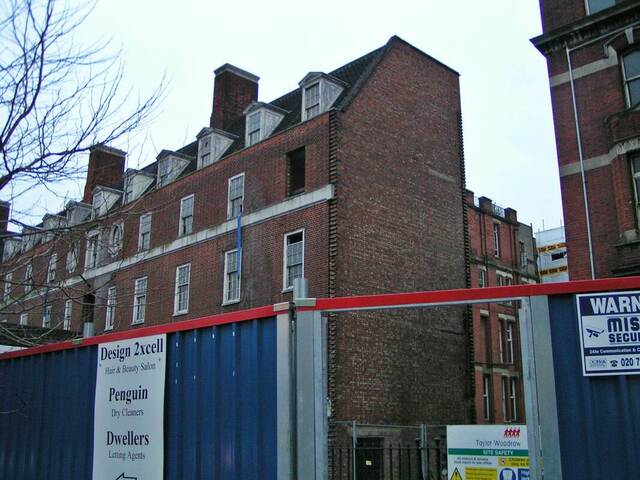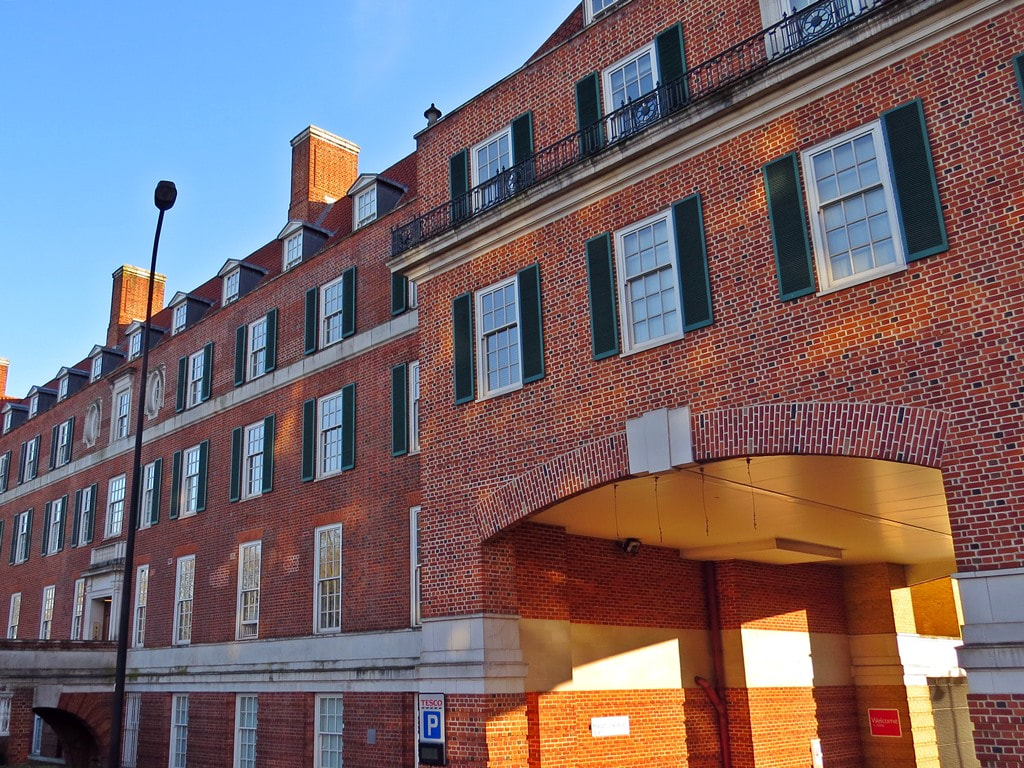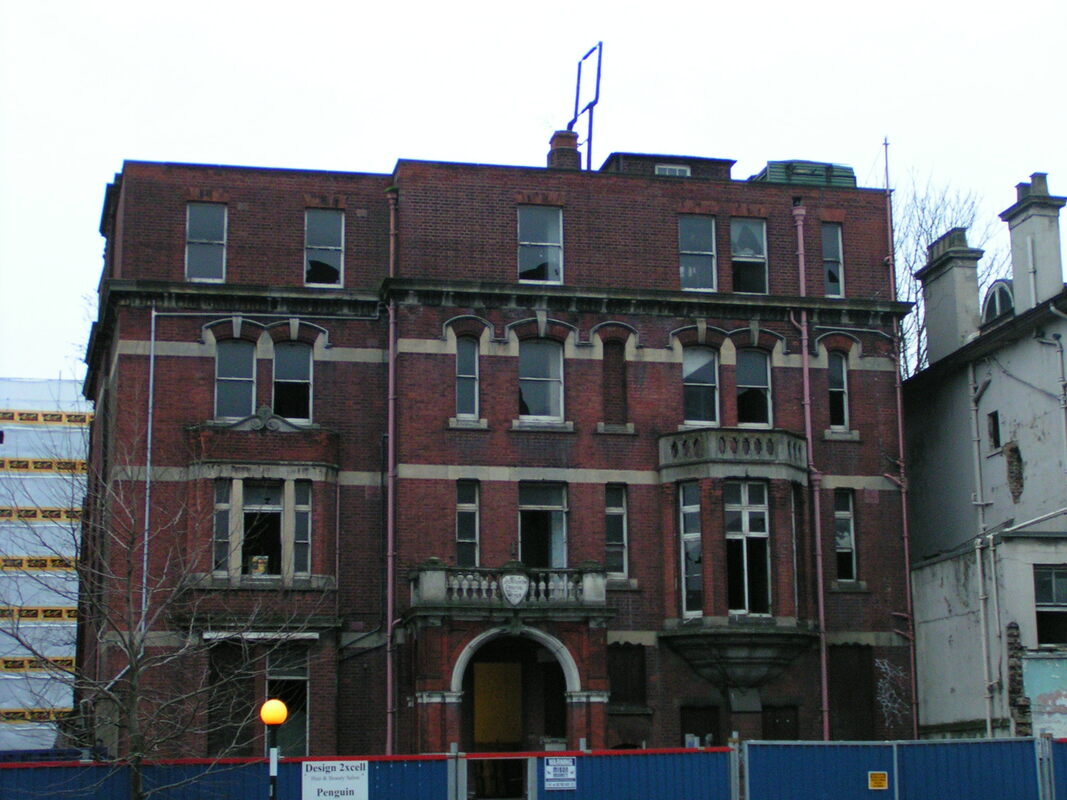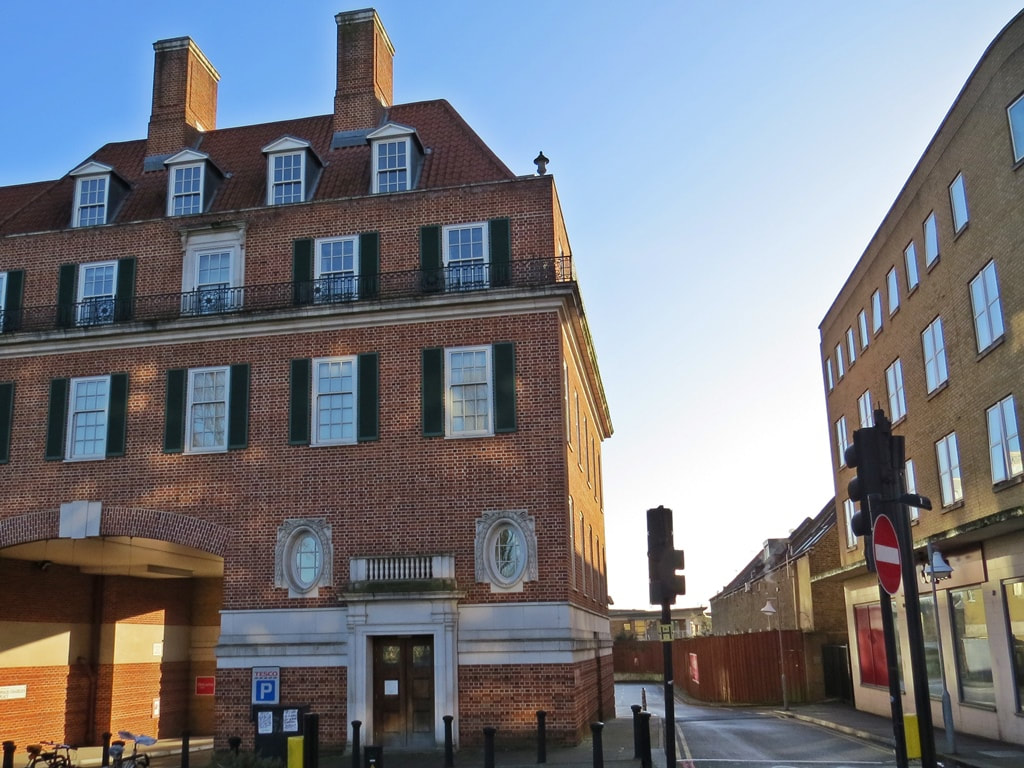Then and Now: TEDDINGTON, TW11 - Normansfield Hospital
(originally opened as Normansfield Training Institution for Imbeciles)
Normansfield Hospital was founded by John Haydon Landon-Down in 1868 as a private home for the “care, education and treatment of those of good social position, who present any degree of mental deficiency." Throughout his active medical career Langdon-Down practised as a consulting physician and continued his research in a special condition he called Mongolism, later to be designated Down's syndrome. The Langdon-Down family were involved in running the hospital for over 100 years until Dr Norman Langdon Down retired in 1970. Then (according to an article on the Twickenham Museum website) he was replaced by a psychiatrist described as authoritarian and incompetent who was suspended six years later in the middle of a nurses strike. By then senior personnel were resigning and buildings were in disrepair. The hospital closed down in 1997. The main buildings have since been redeveloped into apartments.
The Down's Syndrome Association operates the Langdon Down Centre in the former hospital's theatre wing, which includes the national office of the Down's Syndrome Association, the Normansfield Theatre (a Grade II* listed Victorian Theatre) and the Langdon Down Museum of Learning Disability.
The Down's Syndrome Association operates the Langdon Down Centre in the former hospital's theatre wing, which includes the national office of the Down's Syndrome Association, the Normansfield Theatre (a Grade II* listed Victorian Theatre) and the Langdon Down Museum of Learning Disability.
Then & Now: FITZROVIA, W1 - Middlesex Hospital
The Middlesex Hospital’s history goes back 250 years. The Middlesex Infirmary opened in 1745 with 18 beds to provide medical treatment for the poor, and in 1747 the hospital became the first in England to add ‘lying-in’ (in-patient) beds. In 1757, the hospital opened on this Mortimer Street site, and over the years extra wings were added.
In 1924 fears that the building had become unsound led to a ‘The Middlesex is falling down’ campaign to raise funds for rebuilding, and in 1935, without ever having closed its doors, the new Middlesex was opened. It closed in December 2005 and was demolished in 2008.
Completed in 2015, the site is now Fitzroy Place with nearly 300 homes, offices, shops set around a publicly accessible central square which is the first new garden square in W1 for 100 years. The square incorporates the restored hospital chapel.
Elaine Munday writes to Derelict London: "the nurses home in Foley St had direct links via tunnels to the main hospital. Nurses walked along the underground tunnels at night to avoid being outside for safety reasons. There was also a swimming pool underground."
In 1924 fears that the building had become unsound led to a ‘The Middlesex is falling down’ campaign to raise funds for rebuilding, and in 1935, without ever having closed its doors, the new Middlesex was opened. It closed in December 2005 and was demolished in 2008.
Completed in 2015, the site is now Fitzroy Place with nearly 300 homes, offices, shops set around a publicly accessible central square which is the first new garden square in W1 for 100 years. The square incorporates the restored hospital chapel.
Elaine Munday writes to Derelict London: "the nurses home in Foley St had direct links via tunnels to the main hospital. Nurses walked along the underground tunnels at night to avoid being outside for safety reasons. There was also a swimming pool underground."
More 2007 pictures:
The building, apart from some facades at the side and a chapel were demolished in 2008. Redevelopment was delayed due to one of the original investors having financial issues. The following pictures were taken in late 2008.
Then and Now: MILE END, E3 - St Clements Hospital (Previously City of London Union Workhouse)
Originally built in 1848-49 as a workhouse, for the Board of Guardians of the City of London Union. It became an infirmary for the same union in 1874, and in 1912 the Bow Institution for the long-term sick. In 1936, it became a psychiatric unit, under the St Clements name again. It became part of the London Hospital in 1968 and went through various organisational changes until closure in 2005. Services were transferred to a new Adult Mental Health Facility at Mile End Hospital in 2005.
Then and Now: BETHNAL GREEN,E2 - Queen Elizabeth Hospital for Children
The North Eastern Hospital for Children expanded and moved to buildings on this site in 1870 and over the following decades new ward buildings were added in Goldsmiths Row. On the corner the large new building fronting onto Hackney Road was opened by Princess Beatrice in 1902. This organisation became the Queen's Hospital for Children in 1907. The Princess Elizabeth of York Hospital for Children in Shadwell merged with this to form the Queen Elizabeth Hospital for Children in 1942. More buildings were added during the 20th Century. The Queen Elizabeth was an international centre for research into childhood illness, and host to several royal visits including Queen Elizabeth II in 1977. The hospital had one of the country's most important pathological laboratories for the investigation of child diseases.
In 1992, Michael Jackson was greeted by 2000 cheering fans as he landed at Haggerston Park in a helicopter with Mickey Mouse and Minnie Mouse where he visited the children at the Queen Elizabeth Hospital for Children.
In 1997, the services of the hospital were relocated to The Royal London Hospital, where they retain their historical identity through their current name, The Queen Elizabeth Children's Service a title granted by Her Majesty Queen Elizabeth. This site on the corner of Hackney Road and Goldsmiths Row lay derelict for the next 17 years.
Despite English Heritage advising the Council that proposed demolition would involve the loss of historic fabric that had potential to provide historical information on the development of healthcare in the nineteenth and twentieth centuries all but the facade of the 1902 hospital building was swept away to build residential blocks accommodating 188 flats. During demolition work a time capsule was discovered there in 2014, containing newspapers, a catalogue of donors, a hymn sheet and a ribbon from the opening ceremony performed by Princess Beatrice in 1902.
Tracey writes to Derelict London: "I worked there in 1979 as a student nurse. I was on a medical ward first for children up to two years old, I think about 20 cots. On my night shifts there were just two of us on duty, when one went on her break (for a proper meal in the fully staffed restaurant) the other was left on her own! We had so many babies to feed at 6am we had to start those feeds at 4.30 and would be lucky to get them and other tasks completed for the day shift coming in. I also worked on a surgical ward for older children. In those days we wore pink and white striped dresses, starched aprons and amazing hats. I still have a full set in the loft....happy days! I am still nursing and have seen many changes, many for good, but I'm still convinced we had better training back then. Keep up the good work, and thanks for bringing back those memories."
In 1992, Michael Jackson was greeted by 2000 cheering fans as he landed at Haggerston Park in a helicopter with Mickey Mouse and Minnie Mouse where he visited the children at the Queen Elizabeth Hospital for Children.
In 1997, the services of the hospital were relocated to The Royal London Hospital, where they retain their historical identity through their current name, The Queen Elizabeth Children's Service a title granted by Her Majesty Queen Elizabeth. This site on the corner of Hackney Road and Goldsmiths Row lay derelict for the next 17 years.
Despite English Heritage advising the Council that proposed demolition would involve the loss of historic fabric that had potential to provide historical information on the development of healthcare in the nineteenth and twentieth centuries all but the facade of the 1902 hospital building was swept away to build residential blocks accommodating 188 flats. During demolition work a time capsule was discovered there in 2014, containing newspapers, a catalogue of donors, a hymn sheet and a ribbon from the opening ceremony performed by Princess Beatrice in 1902.
Tracey writes to Derelict London: "I worked there in 1979 as a student nurse. I was on a medical ward first for children up to two years old, I think about 20 cots. On my night shifts there were just two of us on duty, when one went on her break (for a proper meal in the fully staffed restaurant) the other was left on her own! We had so many babies to feed at 6am we had to start those feeds at 4.30 and would be lucky to get them and other tasks completed for the day shift coming in. I also worked on a surgical ward for older children. In those days we wore pink and white striped dresses, starched aprons and amazing hats. I still have a full set in the loft....happy days! I am still nursing and have seen many changes, many for good, but I'm still convinced we had better training back then. Keep up the good work, and thanks for bringing back those memories."
Below is a gallery of photographs of Queen Elizabeth Hospital for Children, Bethnal Green taken between 2005 and 2007:
Then and Now: MUSWELL HILL, N10 - St Lukes Woodside Hospital
St Luke's Hospital for Lunatics was opened in Moorfields in a converted foundry building in the Parish of St Lukes (a church in Old St in EC1) in 1751 It was the second public institution in London created to look after mentally ill people, after the nearby Hospital of St. Mary of Bethlem (Bedlam), founded in 1246). In 1787, it moved to a new purpose-built hospital in Old Street & remained there until 1916 when the building was sold during the war and the patients were discharged or transferred to other institutions. The building was then used to print banknotes for the Bank of England and then demolished in the early 1960s.
After a lengthy period the Governors purchased three adjacent Victorian villas (Norton Lees, Roseneath and Lea Wood) in Woodside Avenue, Muswell Hill and various blocks were built within the site and the third St Luke's Hospital was officially opened in 1930 by Princess Helena Victoria (granddaughter of Queen Victoria) as the Woodside Nerve Hospital. In 1948, on joining the NHS, the Hospital became the St Luke's-Woodside Hospital, the in-patient branch of the Department of Psychological Medicine of the Middlesex Hospital. In the 1960s two new wings were opened - one for acutely disturbed psychiatric patients and the other for adolescent patients with drug dependency.
After being transferred to various health authorities and trusts over the years it was finally administered by the Camden and Islington Mental Health NHS Trust from 2002 before the hospital was mainly closed in 2011 with some on-site out patient departments limping on for a couple of years afterwards.
Serial killer Anthony Hardy (nicknamed the Camden Ripper) was released from St Luke’s shortly before murdering two women in 2002, but despite the bad press that came from the murder, the hospital set among its beautiful grounds was still celebrated by those who used it.
Three of the old buildings have been refurbished, extended and converted into flats while all the other buildings on site were demolished to make way for more flats and houses. The new development is called Woodside Square.
After a lengthy period the Governors purchased three adjacent Victorian villas (Norton Lees, Roseneath and Lea Wood) in Woodside Avenue, Muswell Hill and various blocks were built within the site and the third St Luke's Hospital was officially opened in 1930 by Princess Helena Victoria (granddaughter of Queen Victoria) as the Woodside Nerve Hospital. In 1948, on joining the NHS, the Hospital became the St Luke's-Woodside Hospital, the in-patient branch of the Department of Psychological Medicine of the Middlesex Hospital. In the 1960s two new wings were opened - one for acutely disturbed psychiatric patients and the other for adolescent patients with drug dependency.
After being transferred to various health authorities and trusts over the years it was finally administered by the Camden and Islington Mental Health NHS Trust from 2002 before the hospital was mainly closed in 2011 with some on-site out patient departments limping on for a couple of years afterwards.
Serial killer Anthony Hardy (nicknamed the Camden Ripper) was released from St Luke’s shortly before murdering two women in 2002, but despite the bad press that came from the murder, the hospital set among its beautiful grounds was still celebrated by those who used it.
Three of the old buildings have been refurbished, extended and converted into flats while all the other buildings on site were demolished to make way for more flats and houses. The new development is called Woodside Square.
The following photographs were taken in 2015:
Then and Now: HOMERTON, E9 - Hackney Hospital
Originally a workhouse on this site going back to 1750 it was expanded and rebuilt with hospital facilities over the years. In 1930, the workhouse came under the control of the London County Council, becoming Hackney Hospital. Services at Hackney were transferred to the nearby Homerton Hospital which opened in 1987. The final hospital departments closed in 1995. I took these pictures in 2003 after stumbling upon demolition work. Many buildings were demolished to make way for flats though some Victorian buildings of Hackney Hospital have been restored as part of the John Howard Centre providing services for people with low and medium secure mental health needs plus places for prisoners with personality disorders. In 2015, the Hackney Gazette reported that 200 criminals have absconded whilst under the care of the medium secure psychiatric unit in the past decade and in 2018 the same paper carried a story that heroin and spice are being smuggled into the Centre.
An investigation by Hackney Trades Council in 1976 described Hackney Hospital as "arguably the worst general hospital psychiatric facility in the country. The site was cramped & the monolithic workhouse became ill-suited to modern medical standards." By this time Hackney Hospital was one of the largest general hospitals in London according to the Homerton NHS website, and it was the first hospital in country authorised to accept male nurses for training.
Annie writes to Derelict London : "I remember working at Hackney Hospital back in 1978 as a student nurse on the geriatric unit. Back then it was a dreadful place, and it looked much as the photos do on your pages, except, of course, the place was full of patients. The geriatric blocks were at the back and incredibly run down. My ward was at the top and had not been updated so was exactly the same as it was when it was a workhouse. In the linen room (where I used to go just for five minutes peace) the old Victorian window panes were still in place as proved by the poignant words Jas 1898 which had been etched into the glass 80 years earlier. To get to the geriatric blocks from the main entrance you had to walk across a wilderness of old derelict buildings and the remains of a fire that had taken place some years before, all overgrown rubble and blackened timbers. It was a hellhole, and I'm glad they shut it down. Mind you, the staff canteen had fantastic food!"
An investigation by Hackney Trades Council in 1976 described Hackney Hospital as "arguably the worst general hospital psychiatric facility in the country. The site was cramped & the monolithic workhouse became ill-suited to modern medical standards." By this time Hackney Hospital was one of the largest general hospitals in London according to the Homerton NHS website, and it was the first hospital in country authorised to accept male nurses for training.
Annie writes to Derelict London : "I remember working at Hackney Hospital back in 1978 as a student nurse on the geriatric unit. Back then it was a dreadful place, and it looked much as the photos do on your pages, except, of course, the place was full of patients. The geriatric blocks were at the back and incredibly run down. My ward was at the top and had not been updated so was exactly the same as it was when it was a workhouse. In the linen room (where I used to go just for five minutes peace) the old Victorian window panes were still in place as proved by the poignant words Jas 1898 which had been etched into the glass 80 years earlier. To get to the geriatric blocks from the main entrance you had to walk across a wilderness of old derelict buildings and the remains of a fire that had taken place some years before, all overgrown rubble and blackened timbers. It was a hellhole, and I'm glad they shut it down. Mind you, the staff canteen had fantastic food!"
Then and Now: DALSTON, E8 - The German Hospital
Built in 1845 on the site of the former Dalston Infant Orphan Asylum and set up to care for "all poor Germans and others speaking the German language." under the joint protection of Queen Victoria, Queen Adelaide, The King of Prussia and Prince Albert. The Duke of Cambridge was elected chairman. At that time there were thought to be over 30,000 Germans living in the UK and all the medical staff and servants were German and was supported by the German Royal Family. The nurses were called "Deaconesses" and provided patients with spiritual as well as medical care. Florence Nightingale visited the hospital on two occasions and was inspired by the nurses’ example to enrol for training in Germany. When it opened, the hospital had just 12 beds, but later expanded to include four wards and a sanatorium for patients "not belonging to the lower classes". The hospital was strongly supported by the local community, until the outbreak of the First World War led to suspicions of spying. The hospital survived, but in World War Two all the staff were moved to an internment camp on the Isle of Man. In 1947, the hospital became part of the NHS, remaining in use until 1987 then falling into dereliction before being saved in 2007/8 to be converted into flats.
The inspiration for BBC1's EastEnders Albert Square was in Fassett Square a quiet Victorian square positioned behind the German Hospital. Filming for EastEnders started in Fassett Square but a modern extension of the German Hospital visible from the Square looked out of character and the BBC declined to use the Square as a set.
Miriam Oreilly writes to Derelict London: "This is the hospital where my great great grandfather died! His name was Davis Levy. He was a Jewish Lithuanian, I presume the German's must have liked the Jews at that stage! He never spoke English so I assume that is why he ended up in a German speaking hospital. He died of some terrible skin infection at the age of 70 in 1908. He was a master furrier and had built up a good business in London. It is quite amazing to see the photos as I live in Ireland and God knows if I will ever get an opportunity to visit."
The inspiration for BBC1's EastEnders Albert Square was in Fassett Square a quiet Victorian square positioned behind the German Hospital. Filming for EastEnders started in Fassett Square but a modern extension of the German Hospital visible from the Square looked out of character and the BBC declined to use the Square as a set.
Miriam Oreilly writes to Derelict London: "This is the hospital where my great great grandfather died! His name was Davis Levy. He was a Jewish Lithuanian, I presume the German's must have liked the Jews at that stage! He never spoke English so I assume that is why he ended up in a German speaking hospital. He died of some terrible skin infection at the age of 70 in 1908. He was a master furrier and had built up a good business in London. It is quite amazing to see the photos as I live in Ireland and God knows if I will ever get an opportunity to visit."
Below are some more pics of THE GERMAN HOSPITAL in 2004
Then and Now: KENNINGTON, SE11 - Lambeth Hospital (formerly Lambeth Workhouse)
This was one featured in my book while it was derelict. Built in 1871, this was one of the earliest pavilion-block workhouse designs built in England and housed 820 inmates. In 1896, future star of the silent screen Charles Chaplin (then aged seven) briefly became an inmate of the Lambeth Workhouse, together with his mother and his younger half-brother. In 1922, it was renamed Lambeth Hospital.
The hospital was bombed during the Second World War, and around 20 nurses were killed; some from Ireland had only been in London for three months. Patients who were well enough to be moved were evacuated by torchlight to safer areas.
The hospital shut in 1976. Much of the original workhouse was demolished, although the water tower survived but lay derelict until recently. Some more modern hospital buildings limped on in a derelict condition until being cleared for a new housing development and the conversion of the water tower (built in 1877) into a private residence. The former workhouse administrative block is now a cinema museum.
The hospital was bombed during the Second World War, and around 20 nurses were killed; some from Ireland had only been in London for three months. Patients who were well enough to be moved were evacuated by torchlight to safer areas.
The hospital shut in 1976. Much of the original workhouse was demolished, although the water tower survived but lay derelict until recently. Some more modern hospital buildings limped on in a derelict condition until being cleared for a new housing development and the conversion of the water tower (built in 1877) into a private residence. The former workhouse administrative block is now a cinema museum.
In addition to the many new flats built there are some remaining old buildings on the site. Some in a derelict state and some used as clinics.
Then and Now: CLAPHAM, SW4 - South London Hospital for Women
My original pics were taken just before demolition early in 2004. The facade of the main part of the building was retained, and now it fronts some new build flats and a Tesco supermarket with its modern entrance over on the left-hand side. Buildings to the right were demolished and replaced with buildings to match the main frontage. For many people who believe that the building was simply converted into a Tesco and flats they will be disappointed to see my pics taken in October 2004 showing just a section facade is all that remains of the original building..
Entirely staffed by women, the hospital was founded in 1912 and opened by Queen Mary on July 4th 1916. It was enlarged in the 1930s and closed down in 1984. Martin Owton writes to this website: "The nurses' accommodation continued to be used by St George's trainees as I had a girlfriend (a trainee midwife) who lodged there in 1985 and I spent several nights there".
The vacant hospital site in Clapham South was the subject of bitter legal wrangling after Wandsworth Council brought two judicial reviews against the proposed superstore. It objected to former Secretary of State Stephen Byers's decision to overrule his inspector and grant planning permission, claiming a new store would jeopardise businesses in Balham from low supermarket prices and 156 free car parking spaces. It said Lambeth Council and Mr Byers had ignored planning regulations protecting town centres.
Entirely staffed by women, the hospital was founded in 1912 and opened by Queen Mary on July 4th 1916. It was enlarged in the 1930s and closed down in 1984. Martin Owton writes to this website: "The nurses' accommodation continued to be used by St George's trainees as I had a girlfriend (a trainee midwife) who lodged there in 1985 and I spent several nights there".
The vacant hospital site in Clapham South was the subject of bitter legal wrangling after Wandsworth Council brought two judicial reviews against the proposed superstore. It objected to former Secretary of State Stephen Byers's decision to overrule his inspector and grant planning permission, claiming a new store would jeopardise businesses in Balham from low supermarket prices and 156 free car parking spaces. It said Lambeth Council and Mr Byers had ignored planning regulations protecting town centres.
Derek Dow writes to Derelict London:
"I'm currently writing an article for my monthly medical history column in New Zealand Doctor on one of the hospital's founders, Dr Eleanor Davies-Colley. She was the first female fellow of the Royal College of Surgeons of England (1911), a fact commemorated a couple of years ago when the college began raising 1/4million for a Davies-Colley lecture room - it's ironic therefore that her hospital should be unceremoniously removed. "
"I'm currently writing an article for my monthly medical history column in New Zealand Doctor on one of the hospital's founders, Dr Eleanor Davies-Colley. She was the first female fellow of the Royal College of Surgeons of England (1911), a fact commemorated a couple of years ago when the college began raising 1/4million for a Davies-Colley lecture room - it's ironic therefore that her hospital should be unceremoniously removed. "
Jann Pruden writes to Derelict London: "My mother had surgery there children were not allowed into the Hospital I remember even today, my Father had to leave me outside . Where I stood couldn't believe my eyes. I was shivering and frightened. I have resided in San Diego CA And,Scottsdale Arizona,for the,past 40 years , I'm in the process of writing memories of life my life especially the War years for my Grandchildren."
Vickie Beamish writes to Derelict London:
"In January 1934 my sister Joan was born there. Mother had all her children at home except for this last child. It had been discovered that mother had an abdominal tumour, so she had to have a caesarian section - dangerous in those days. The baby was very tiny and they had no incubators so the nurse placed the baby in one of those wire soap dishes that spread from side to side of a bath. The bath was kept filled with hot water to produce steam and that was the baby's crib for several days. I think this was to maintain her body heat. Mother then had to undergo a second abdominal operation to deal with the tumour. In line with the rules at that time this tiny baby was not allowed to stay in the hospital as my mother was no longer a patient in the obstetrical department, so she was sent home to be looked after by whoever was handy. Luckily, my cousin Eva Carey-Hammond was able to stay with us and took good care of her.
Whilst Mother was recovering from the second operation the hospital had some kind of fund-raising drive, and produced a little booklet to hand out. Mother was a fine knitter and had made herself a pretty bed jacket and her photograph was on the front of the booklet, showing her sitting up in bed wearing the bed jacket. I wish I could find a copy of the booklet now as it was one of the few photographs taken of my mother and I would love to have a copy.
Later that year or early in the next year I developed rheumatic fever and was sent to the same hospital. They did not seem to have a bed in a children's ward for me and I was put in with the grownups. A long ward with at least ten beds on each side. I hated being there. For one thing they made me stay in a crib with bars which I found an affront. This was probably to make me stay in bed as total bed rest was part of the treatment. In addition they had strange ways of dealing with diseases in those days. The doctor taking care of me thought that diet would be a good cure and I was fed three things ONLY - boiled chicken, boiled fish and boiled potatoes - and I do mean nothing else - three times a day. Since I am a vegetarian, I literally lived on boiled potatoes with the occasional mouthful of fish out of desperation when I got hungry enough. Sometimes one of the other patients would sneak me a slice of bread when the nurses were not looking, but they got into trouble when caught. Another part of the treatment was an injection of some kind of new drug which was extremely painful. I remember that these two injections were given by a Dr. Pritchard and I always referred to her as Dr. Prickhard as she hurt me so much. Another part of the treatment was the regular administration of enemas.
The doctor told me that as I was growing up I should not try to remember unimportant things as these could be written down for later reference, but I should concentrate on remembering only important things. Otherwise I would use up my brain!! That was almost seventy years ago and I remember this quite clearly. I guess I thought it was an "important thing". I was not allowed visitors as in those days this was thought to upset children. Visiting hours for the grownups were on Sunday afternoons for two hours and again in the evening, plus either Wednesday or Thursday afternoon for a couple of hours. Everyone on the ward had visitors except me which was upsetting.
The grownup patients on the ward were well aware that I was near to starving and fretting away and apparently put their heads together to decide what to do. One of these ladies got me to whisper my address to her husband when he visited and the nurse was not looking.He then went to visit my mother and told her what was going on. He also gave mother his wife's name and said she could use it. In those days one had to give a clerk, sitting at the entrance to the hospital, the name of the person a visitor was going to see, so this patient's name was needed to get on to the ward. Mother was herself unwell at that time and Dad was at work so she sent my two older brothers Ern and Ted to the hospital to check things out for her and they made their plans. Using the other patient's name, they were able to get on the ward, pretending to be her sons. When the nurses tried to stop them from speaking to me they took no notice and grabbing the crib ran with it down the hall trying to get me to the front door where they had a friend waiting to help - they were going to steal me. Some men working for the hospital stopped them doing this and there was quite a scene. The next day my parents came to the hospital and discharged me against medical advice. Once I was at home the family doctor was appalled at my condition. I had been in hospital for several weeks and the enemas combined with the lack of food resulted in my being very weak and as thin as a rake. He called regularly and I was nursed through this illness at home and soon put on weight and got better. It was during this time at home that my Dad taught me to play cribbage, and when I was able to return to school I found I was really good at mental arithmetic as a result.
Another thing I remember about the grown up patients is that a couple of them were anaemic and were also treated with a diet. They were required to eat slices of raw beef liver once or twice a day and were refused other food unless they complied. I remember that one of them put on a blindfold and pinched her nose so that she could not see or smell the liver and could pretend it was something else. I make this place sound awful I suppose, but these people were doing the best they could in the light of their knowledge at that time."
"In January 1934 my sister Joan was born there. Mother had all her children at home except for this last child. It had been discovered that mother had an abdominal tumour, so she had to have a caesarian section - dangerous in those days. The baby was very tiny and they had no incubators so the nurse placed the baby in one of those wire soap dishes that spread from side to side of a bath. The bath was kept filled with hot water to produce steam and that was the baby's crib for several days. I think this was to maintain her body heat. Mother then had to undergo a second abdominal operation to deal with the tumour. In line with the rules at that time this tiny baby was not allowed to stay in the hospital as my mother was no longer a patient in the obstetrical department, so she was sent home to be looked after by whoever was handy. Luckily, my cousin Eva Carey-Hammond was able to stay with us and took good care of her.
Whilst Mother was recovering from the second operation the hospital had some kind of fund-raising drive, and produced a little booklet to hand out. Mother was a fine knitter and had made herself a pretty bed jacket and her photograph was on the front of the booklet, showing her sitting up in bed wearing the bed jacket. I wish I could find a copy of the booklet now as it was one of the few photographs taken of my mother and I would love to have a copy.
Later that year or early in the next year I developed rheumatic fever and was sent to the same hospital. They did not seem to have a bed in a children's ward for me and I was put in with the grownups. A long ward with at least ten beds on each side. I hated being there. For one thing they made me stay in a crib with bars which I found an affront. This was probably to make me stay in bed as total bed rest was part of the treatment. In addition they had strange ways of dealing with diseases in those days. The doctor taking care of me thought that diet would be a good cure and I was fed three things ONLY - boiled chicken, boiled fish and boiled potatoes - and I do mean nothing else - three times a day. Since I am a vegetarian, I literally lived on boiled potatoes with the occasional mouthful of fish out of desperation when I got hungry enough. Sometimes one of the other patients would sneak me a slice of bread when the nurses were not looking, but they got into trouble when caught. Another part of the treatment was an injection of some kind of new drug which was extremely painful. I remember that these two injections were given by a Dr. Pritchard and I always referred to her as Dr. Prickhard as she hurt me so much. Another part of the treatment was the regular administration of enemas.
The doctor told me that as I was growing up I should not try to remember unimportant things as these could be written down for later reference, but I should concentrate on remembering only important things. Otherwise I would use up my brain!! That was almost seventy years ago and I remember this quite clearly. I guess I thought it was an "important thing". I was not allowed visitors as in those days this was thought to upset children. Visiting hours for the grownups were on Sunday afternoons for two hours and again in the evening, plus either Wednesday or Thursday afternoon for a couple of hours. Everyone on the ward had visitors except me which was upsetting.
The grownup patients on the ward were well aware that I was near to starving and fretting away and apparently put their heads together to decide what to do. One of these ladies got me to whisper my address to her husband when he visited and the nurse was not looking.He then went to visit my mother and told her what was going on. He also gave mother his wife's name and said she could use it. In those days one had to give a clerk, sitting at the entrance to the hospital, the name of the person a visitor was going to see, so this patient's name was needed to get on to the ward. Mother was herself unwell at that time and Dad was at work so she sent my two older brothers Ern and Ted to the hospital to check things out for her and they made their plans. Using the other patient's name, they were able to get on the ward, pretending to be her sons. When the nurses tried to stop them from speaking to me they took no notice and grabbing the crib ran with it down the hall trying to get me to the front door where they had a friend waiting to help - they were going to steal me. Some men working for the hospital stopped them doing this and there was quite a scene. The next day my parents came to the hospital and discharged me against medical advice. Once I was at home the family doctor was appalled at my condition. I had been in hospital for several weeks and the enemas combined with the lack of food resulted in my being very weak and as thin as a rake. He called regularly and I was nursed through this illness at home and soon put on weight and got better. It was during this time at home that my Dad taught me to play cribbage, and when I was able to return to school I found I was really good at mental arithmetic as a result.
Another thing I remember about the grown up patients is that a couple of them were anaemic and were also treated with a diet. They were required to eat slices of raw beef liver once or twice a day and were refused other food unless they complied. I remember that one of them put on a blindfold and pinched her nose so that she could not see or smell the liver and could pretend it was something else. I make this place sound awful I suppose, but these people were doing the best they could in the light of their knowledge at that time."
More Hospital pages:
Derelict London Hospitals: North of the Thames
Derelict London Hospitals: South of the Thames
Derelict London Hospitals: North of the Thames
Derelict London Hospitals: South of the Thames
Paul Talling's Derelict London - all photographs are copyright © 2003-2024
Click the envelope icon to join the mailing list for occasional news on website updates, new book releases and Paul's guided walking tours. Follow Derelict London on Facebook and Twitter
Please do not contact me with property/ filming/photo shoot location queries
Click the envelope icon to join the mailing list for occasional news on website updates, new book releases and Paul's guided walking tours. Follow Derelict London on Facebook and Twitter
Please do not contact me with property/ filming/photo shoot location queries

